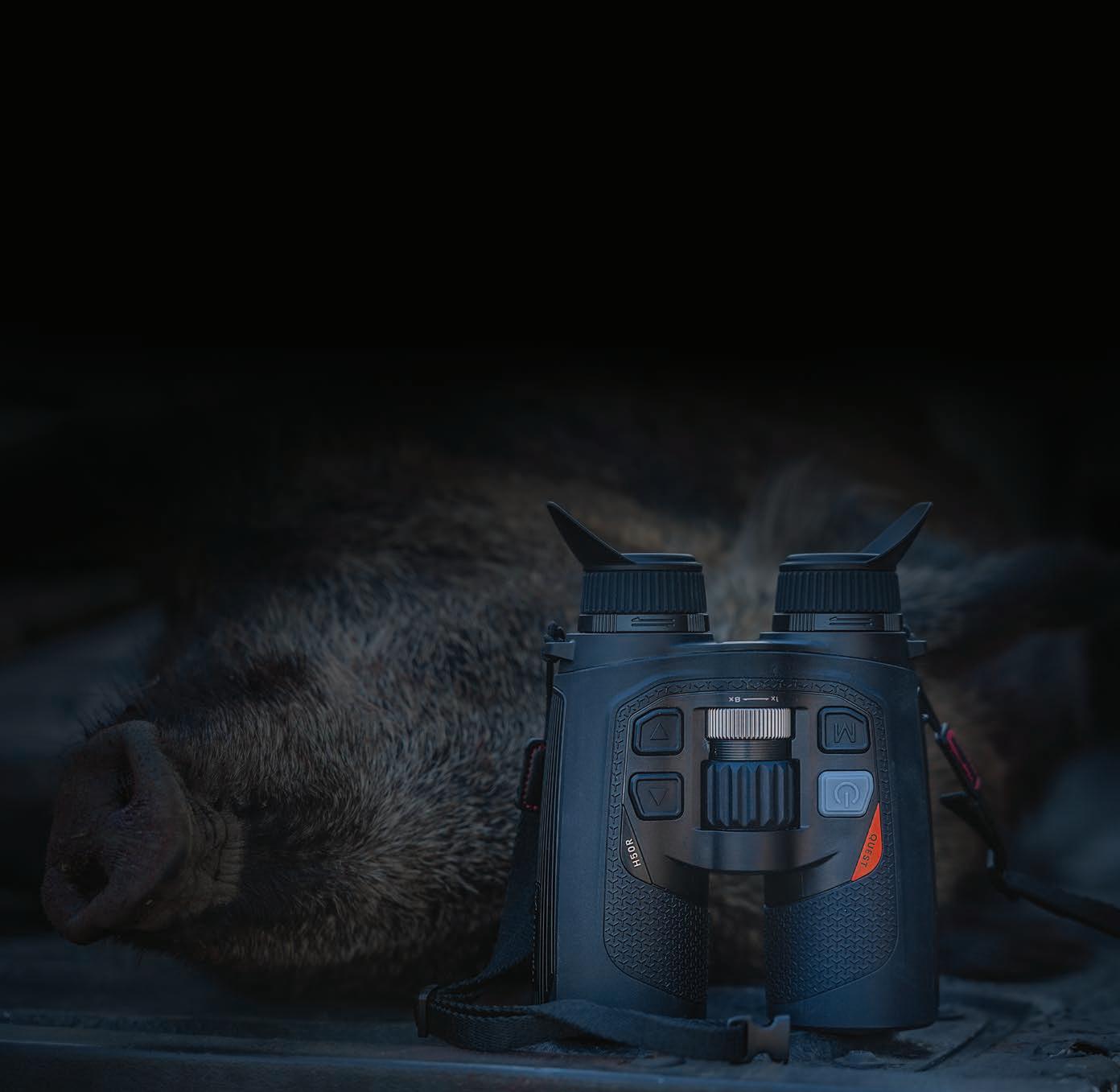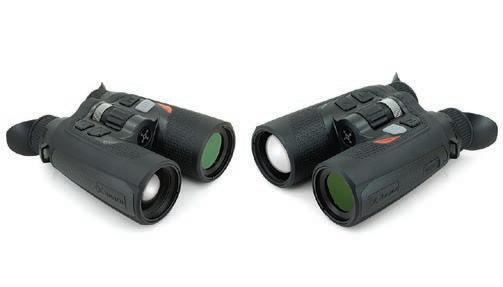

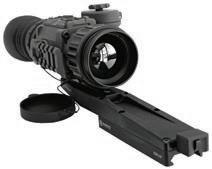

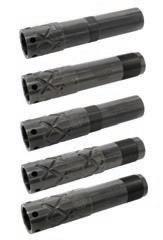
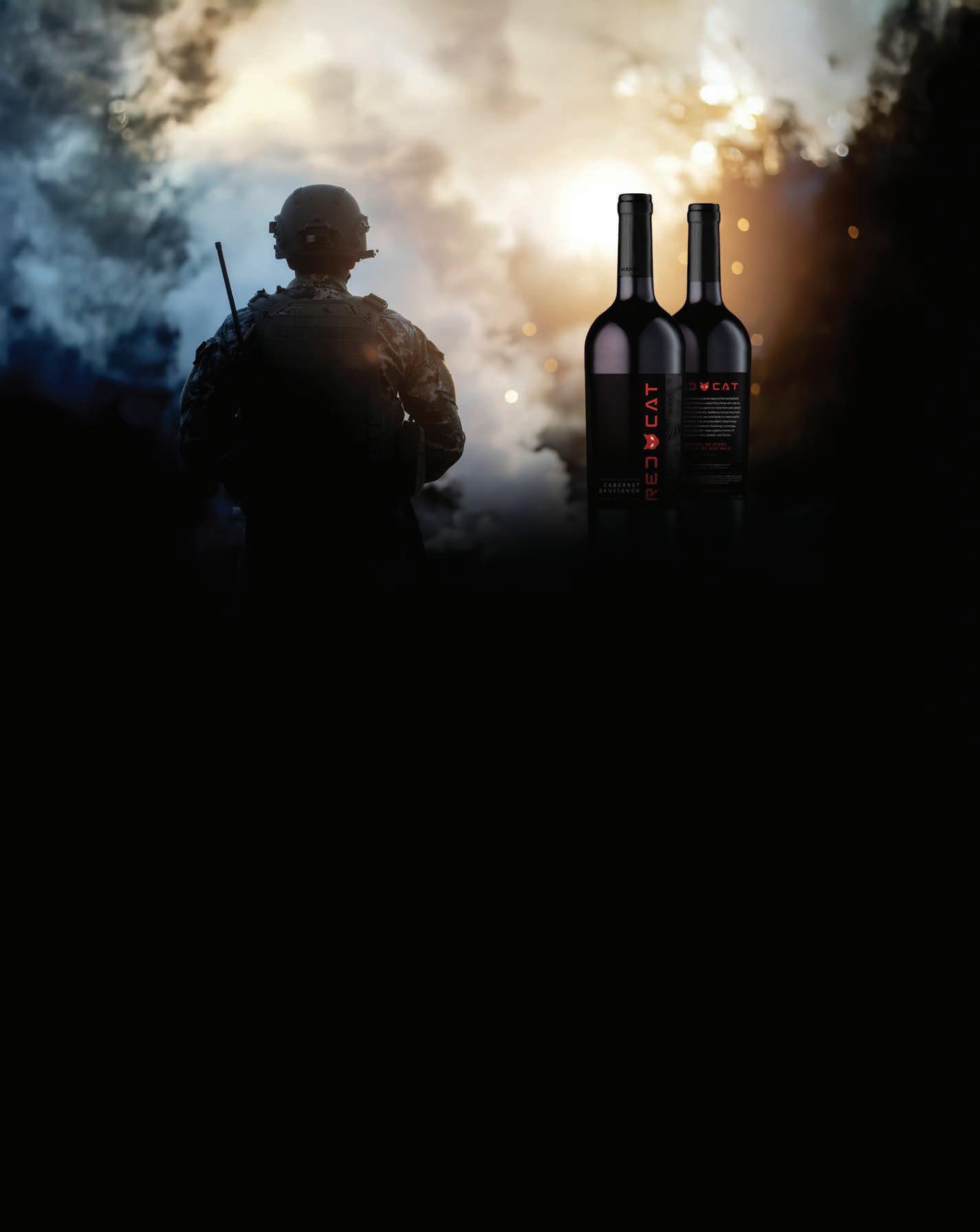
INTRODUCING :







INTRODUCING :
MADE IN THE USA
TOGETHER WE STAND. TOGETHER WE GIVE BACK.
Introducing Red Cat Premium Cabernet Sauvignon, proudly made in the USA. This special release supports our new Veteran Outreach Initiative, with a portion of proceeds from every bottle going directly to Veteran Support Organizations. Raise a glass in honor of those who served.









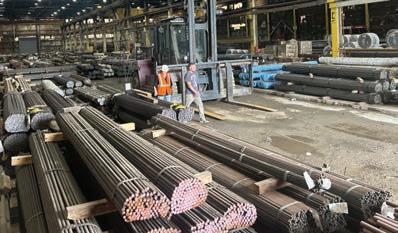
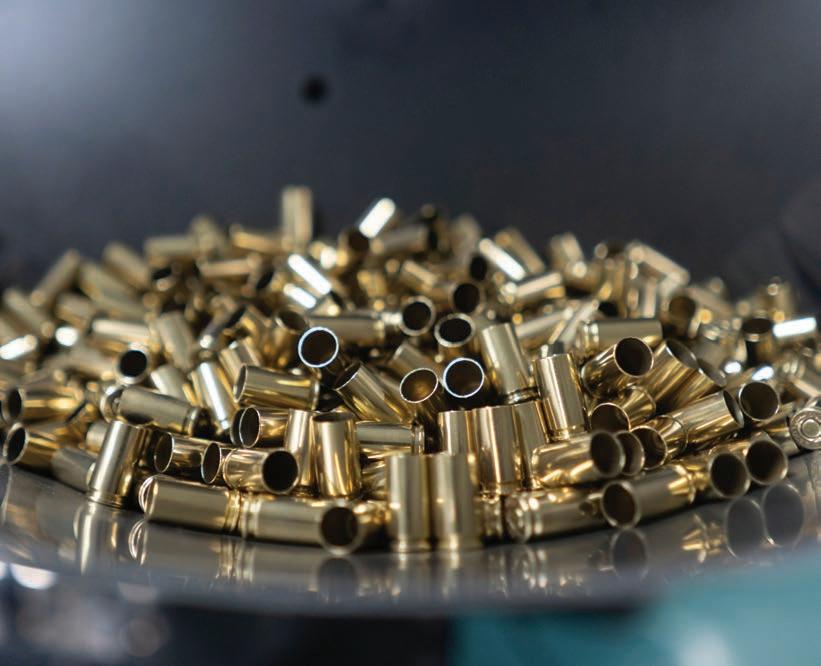
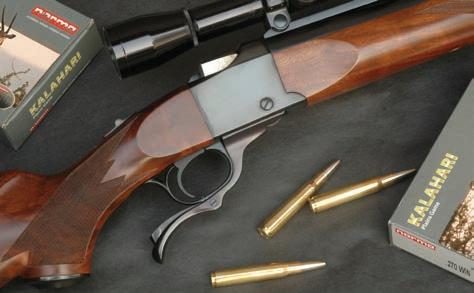

For firearms manufacturers, thermal management, durability, and weight are crucial factors in overall barrel performance. Composite Heat Release technology uses a patent-pending combination of ceramic and carbon fiber reinforced composite materials, which are custom formulated and applied to manufacturer-supplied barrel blanks. The end result: barrels that weigh less, heat slower, and cool faster than traditional steel or carbon-wrapped steel barrels.
At Avient, we don’t make barrels, we make your barrels better.

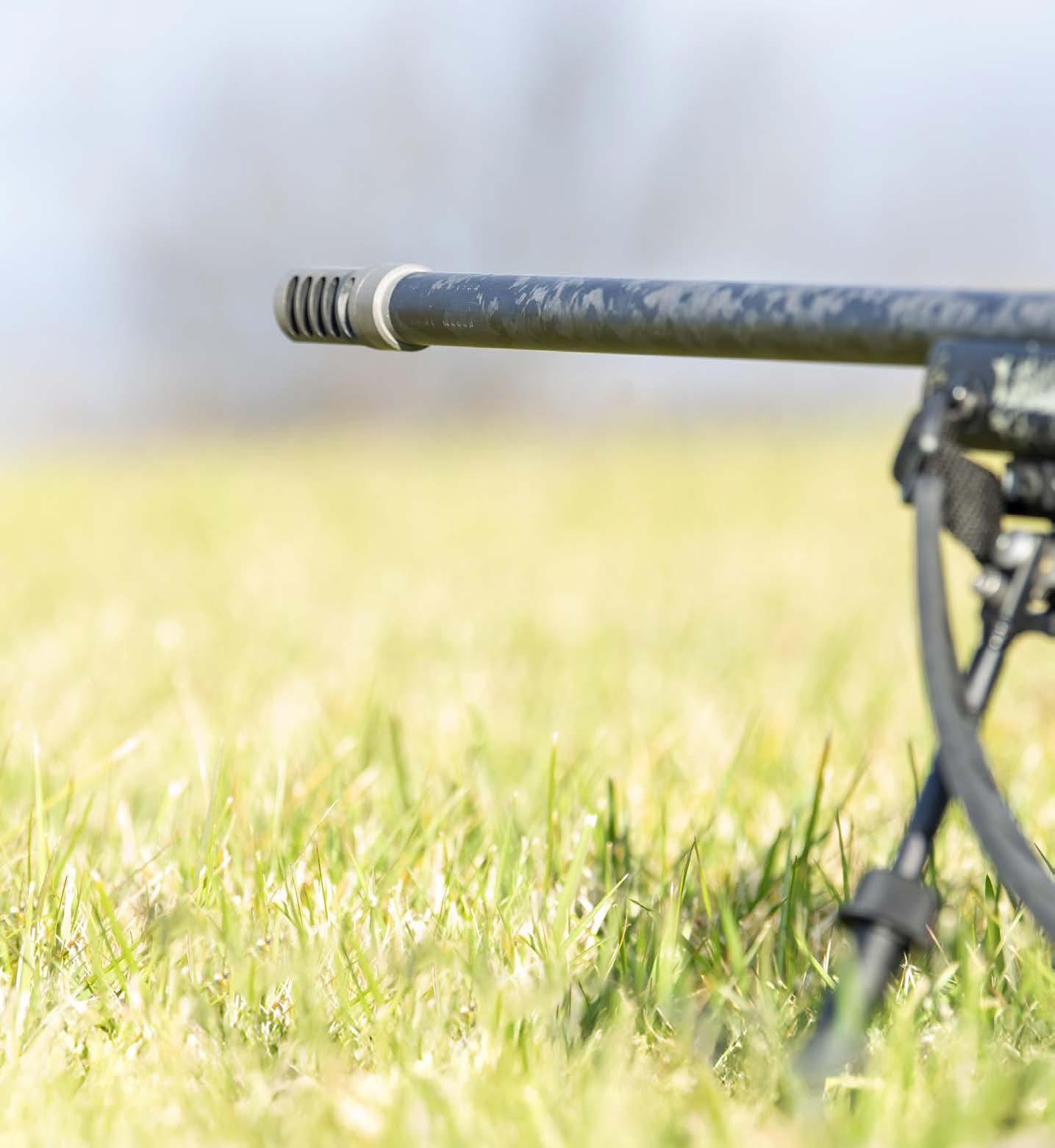
Curious about Composite Heat Release? Find out more at avient.com/shooting-sports or call 1.844.4AVIENT.


While new firearms deliver razor-thin margins around 12%, used guns represent retailers’ biggest profit opportunity — but only if they can price them correctly. Smart retailers using advanced pricing technology are achieving profit margins up to 54% on used inventory, while those relying on outdated methods struggle to break even.
Gun store owners face a constant juggling act: ATF compliance, inventory management, customer service, and somehow finding time to research fair prices for used firearms that walk through their doors. Most retailers spend hours flipping through outdated blue books or scrolling through online listings, often settling for educated guesses that either leave money on the table or create slow-moving inventory that kills cash flow.
With used guns having no fixed wholesale cost, every pricing decision directly impacts the bottom line. Yet few retailers have time to become expert appraisers on every make and model that enters their store.
Bravo Shopkeeper Plus includes the AI Estimator, powered by Bravo Intelligence, representing first-tomarket technology specifically designed for firearms retail operations. Store owners simply photograph any firearm and instantly receive:
• Instant Item Identif ication: Revolutionary image recognition technology accurately identif ies firearms with detailed descriptions.
• Market-Based Pricing: Real-time pricing recommendations based on current market conditions, not outdated reference books.
• Condition Detection: AAdvanced technology detects scratches, wear patterns, and condition issues affecting value.
• Smar t Buying Decisions: Make informed purchasing decisions in seconds rather than minutes.
Bravo customers report spending 75% less time on pricing decisions while achieving profit margins up to 54% on used firearms. Instead of second-guessing whether a particular Glock is worth $450 or $500, retailers know within seconds — freeing them to focus on customers and compliance instead of research. The difference lies in accurate, instant pricing, powered by Bravo Intelligence, and based on real market conditions and precise condition assessment. When retailers can confidently identify a firearm’s true value and condition, they can price optimally — high enough to maximize profit, competitive enough to move inventory quickly.
The AI Estimator is built directly into Bravo


Shopkeeper Plus, part of Bravo’s all in one Point of Sale system designed specifically for FFLs. While competitors force retailers to manage separate vendors for ATF compliance, inventory management, and point of sale, Bravo delivers everything as one all-in-one solution.
When ATF auditors arrive or systems fail, retailers work with one team that understands their entire operation. This eliminates finger pointing between vendors, compliance gaps between disconnected systems, and the risk of losing an FFL over integration failures.
In an industry where regulatory compliance can determine business survival, retailers cannot afford to trust their operations to cobbled-together systems from different vendors. One missed sync between inventory and compliance systems could cost everything a business owner has built.
Bravo’s all-in-one platform ensures pricing, inventory tracking, and ATF reporting work together flawlessly because they were designed together from day one.
Time equals money in retail operations. Every minute spent researching prices represents time not serving customers or growing the business. Every underpriced gun means profit walking out the door. Every overpriced piece ties up cash on shelves.
Smart retailers are already using technology to work more efficiently — achieving the kind of used gun profit margins that transform their bottom line.
Bravo Store Systems has been serves SMB customers with purpose-built software solutions designed specifically for the firearms industry. The company understands that running a gun store means juggling complex regulations, tight margins, and demanding customers while trying to grow a profitable business.
Bravo builds software that solves the real problems gun store owners face daily - from instant pricing decisions to seamless compliance reporting — creating solutions that actually work for SMBs.
The future of profitable used gun retail has arrived, built on working smarter rather than harder.
Retailers interested in optimizing used gun profits can visit bravostoresystems.com or stop by booth 536 at RangeRetailer this July.
Secure storage helps prevent accidents, suicide and theft. A cable lock, gun case, lock box or full-size safe can prevent unwanted access of your firearm in your home or vehicle.
Don’t wait. Prioritize safety now. Visit GunStorageCheck.org .






Gun safety is a priority all year long.
Gun Storage Check Week® is your reminder.
SEPTEMBER 1-7













Conceived nearly a century ago, the M1 Garand remains in demand.
Gen. George S. Patton famously called the M1 Garand “the best battle implement ever devised.” Guy Sagi would agree. He says in his article (page 36) on this American archetype, ”The M1 Garand’s performance during World War II is legendary. Whether in the forests of Europe, deserts of Africa, or sands of the Pacific, it delivered and quickly gained the confidence of combat troops.”
You may ask, rightly, what’s this got to do with my business? As it turns out, plenty. The rifle, originally conceived nearly a century ago, still attracts attention—and not just from grizzled veterans who shouldered it in battle. Peter Mathiesen, who writes “What’s Selling Where” for SHOT Business, spurred my interest when he reported in a recent edition that two retailers noticed renewed interest in the rifle. In fact, one told him the interest in the M1 Garand was at “an all-time high.”
And interest isn’t limited solely to used models. Springfield Armory, primary suppliers of M1s and related models, reports sales of new guns are robust. Mike Humphries, media relations manager at Springfield Armory, says, “Demand for the M1A in its numerous forms is consistently strong, and that is one of the many reasons it has been around since the launch of the company.”
Sagi also notes there is a thriving aftermarket for custom parts, including triggers, polymer stocks, and other components. Part of this demand is fueled by local and national M1 competitions. All of which is to say, this design has a lot of life left in it.
You may never have heard of D&M Holding, but you soon will (see page 24). Global demand for reliable supplies of ammunition, primers, and powder is soaring as a matter national security,
and D&M is working nonstop to support the U.S., NATO countries, and other friendly foreign governments. The brainchild of Dan Powers, former CEO of SIG Sauer’s ammunition manufacturing facility in Arkansas, D&M specializes in greenfield projects (i.e., a new undertaking that starts from scratch on undeveloped land or without any preexisting infrastructure or systems), often for companies and countries that have never before been in the ammunition, primer, or propellant business. D&M’s turnkey factories include solutions for ammunition production, primer production, as well as propellant production for everything from small-caliber ammunition to artillery. The company handles all aspects of the project, from site planning and floor planning to equipment manufacture and installation, as well as what Powers calls the “the secret sauce,” the transfer of knowhow. But what impresses me most is the ability of Powers to attract—and keep— a talented and dedicated team. That’s a rare ability these days—and it recalls an observation a talented CEO made years ago to me when I asked him to explain his company’s success: “I hire good people and then get out of their way.” Words to live by.

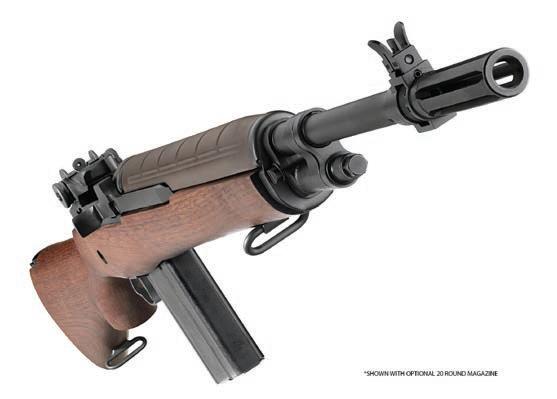
EDITORIAL & CREATIVE EDITOR w SLATON L. WHITE
GROUP MANAGING EDITOR w HILARY DYER ART DIRECTOR w TOD MOLINA
ADVERTISING
SALES TEAM w DON HARRIS w TOBY SHAW w BRAD BISNETTE
COLE PUBLISHING ADMINISTRATION
PRESIDENT, COLE PUBLISHING w JEFF BRUSS PRESIDENT, GRAND VIEW OUTDOORS w DERRICK NAWROCKI
NSSF ADMINISTRATION
PRESIDENT & CEO w JOSEPH H. BARTOZZI
SENIOR VICE PRESIDENT & CCO w CHRIS DOLNACK
VICE PRESIDENT, MARKETING w BILL DUNN
SENIOR VICE PRESIDENT FOR GOVERNMENT & PUBLIC AFFAIRS, ASSISTANT SECRETARY & GENERAL COUNSEL w LAWRENCE G. KEANE
VICE PRESIDENT, HUMAN RESOURCES w LISA DAVIS
VICE PRESIDENT & CFO w JOHN SMITH
MANAGING DIRECTOR, MEMBER SERVICES w JOHN MCNAMARA
SHOT BUSINESS (ISSN 1081-8618, USPS 25801) is published bimonthly by COLE Publishing, 415 E Wall St, Eagle River, WI 54521. Periodicals postage is paid at Eagle River, WI.
POSTMASTER: Send address changes to SHOT BUSINESS, PO Box 2707, Eagle River, WI 54521. All rights reserved. Contents may not be printed or otherwise reproduced without written permission of COLE Publishing. Periodicals postage pending at Eagle River, WI 54521 and at additional mailing offices.
COLE Publishing is not responsible for researching or investigating the accuracy of the contents of stories published in this magazine. Readers are advised that the use of the information contained within this magazine is with the understanding that it is at their own risk. COLE Publishing assumes no liability for this information or its use. COLE Publishing assumes no responsibility for unsolicited editorial, photography, and art submissions. In addition, no Terms and Conditions agreements are recognized by COLE Publishing unless signed and returned by the Editor.
POSTMASTER: Send address changes to: SHOT BUSINESS P.O. BOX 220, THREE LAKES, WI 54562.
ADVERTISING: Advertising inquiries should be emailed to shotbusiness@colepublishing.com. No responsibility will be assumed for unsolicited materials. SHOT BUSINESS is a registered trademark of NSSF. Contents copyright ©2025 by NSSF. All rights reserved. Reproduction in whole or part is prohibited unless expressly authorized by publisher.
MEMBER/SUBSCRIBER SERVICES: membership@nssf.org
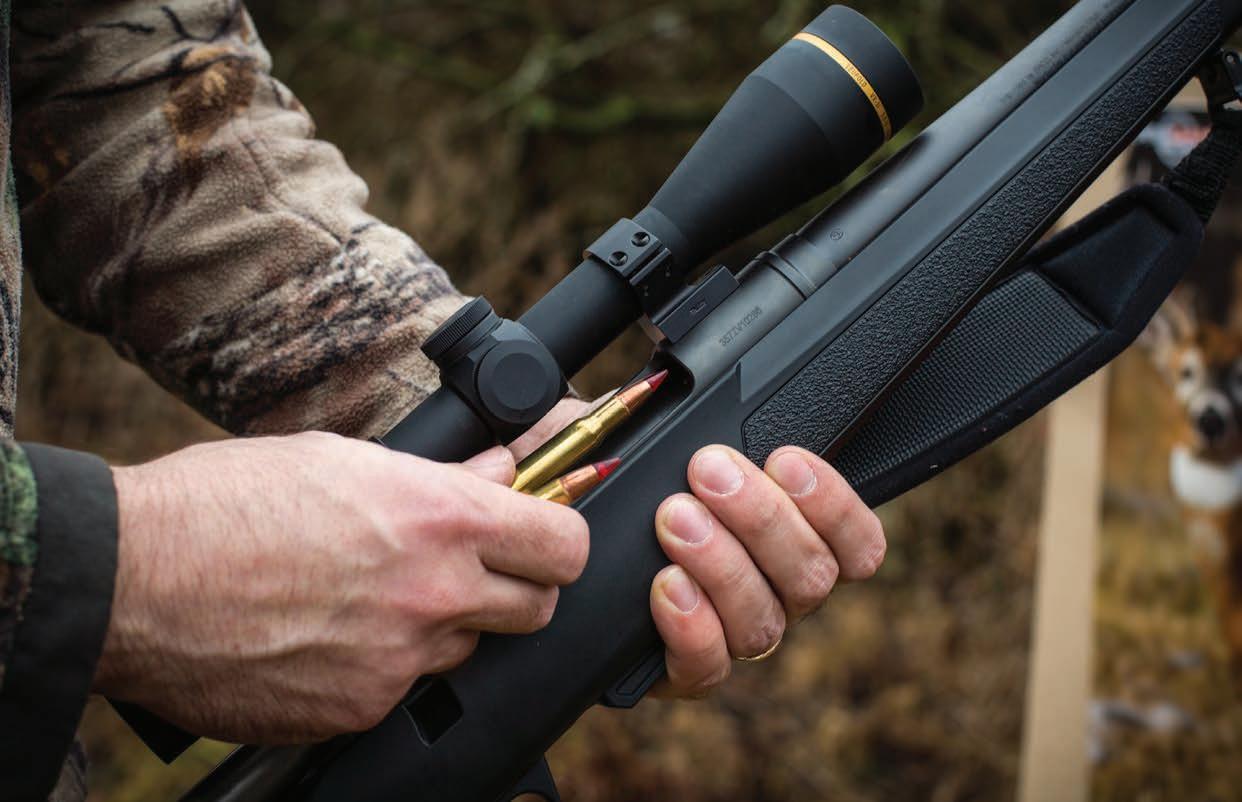
Olin Corporation has completed the previously announced acquisition of the small-caliber ammunition assets of AMMO, Inc. The assets, employees, and ammunition business are now part of Olin’s Winchester Ammunition business, including the brass shell case capabilities and a newly constructed,
world-class, 185,000-square-foot production facility located in Manitowoc, Wisconsin. The facility and its skilled employees complement Winchester’s existing production capabilities, enabling greater specialization and broader participation across a variety of high-margin specialty calibers.
Funded from available liquidity, this transaction is expected to be immediately accretive to Olin’s shareholders, delivering incremental expected firstyear adjusted EBITDA of $10 to $15 million, including synergies realization, leveraging Winchester’s industry-leading economies of scale, raw material sourcing, and the company’s projectile, primer, and loading capabilities. Once fully integrated, this acquisition is expected to yield adjusted EBITDA of $40 million per year with full realization of synergies.
“During our recent Investor Day, we committed to our capital allocation framework,” says Ken
Lane, Olin’s president and CEO. “Like the White Flyer acquisition in 2023, this acquisition furthers Winchester’s strategy to identify and secure small, bolt-on opportunities that are highly strategic and immediately accretive to Olin. By year three, we expect to have paid one-and-a-half times adjusted EBITDA for these world-class assets.”
Brett Flaugher, president of Winchester Ammunition, says, “The specialization of the Manitowoc facility will expand our reach into higher-value commercial, as well as international military and law enforcement, calibers while deepening our near full integration across the ammunition value chain. This shift enables our larger legacy plants to focus on high-volume products and growing our cost advantage.” winchester.com
In conjunction with the sale, AMMO is beginning a formal rebranding process, including
↑ By acquiring the small-caliber ammo assets of AMMO, Inc. Olin-Winchester can now reach cost-effectively into new markets.
a corporate name change to Outdoor Holding Company, to better reflect its e-commerce identity and broader vision in the outdoor lifestyle and sporting goods sectors. GunBroker, which had been a component of AMMO, Inc., will remain with the new entity. It is the largest online marketplace dedicated to firearms, hunting, shooting, and related products. Third-party sellers list items on the site and federal and state laws govern the sale of firearms and other restricted items. Ownership policies and regulations are followed using licensed firearms dealers as transfer agents. Launched in 1999, the GunBroker. com website is an informative, secure, and safe way to buy and sell firearms, ammunition, shooting accessories, and outdoor gear online. GunBroker promotes responsible ownership of guns and firearms. gunbroker.com
The Model 1854 lever action is now chambered in .45-70 Govt. Smith & Wesson first introduced the series in a paired synthetic black polymer and stainless-steel finish, as well as an Armornite and walnut furniture combination, across several pistol calibers, including .44 Rem. Mag, .45 Colt, and .357 Magnum.
These rifles have a 6+1 capacity, a forged 416 stainless-steel receiver, and 20-inch 410 stainless-steel barrel and include an 11/16-24 thread pattern for suppressor use. Their large loop lever is constructed for smooth operation, allowing for quicker follow-up shots, while the flat trigger design allows for consistent finger placement.
The Model 1854 .45-70 rifles come equipped with several out-of-the-box features such as a 5¾-inch Picatinny base for optics mounting, an adjustable XS Sights ghost ring rear sight, a gold bead front sight, and a fixed magazine tube. The forend on the stainless-steel model offers three M-LOK compatible slots for the user’s preferred accessories and both variants incorporate mounts for the addition of a sling. SRP: $1,499.
smith-wesson.com
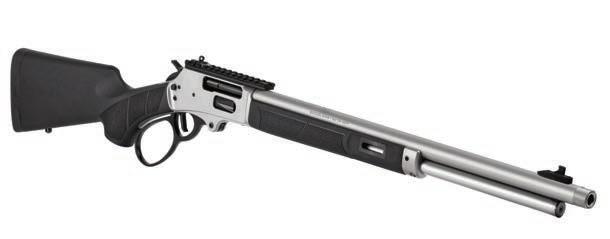
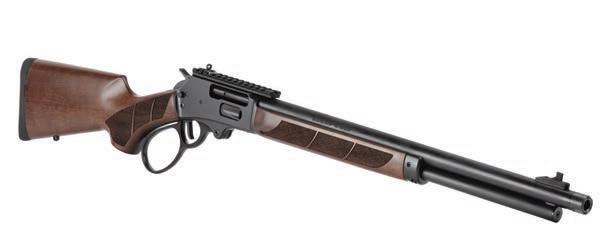
Lately, there has been a surge of speculation about rising ammunition prices, driven by new U.S. tariffs and concerns about international supply chains. Dan Wolgin, CEO of Ammunition Depot, thinks it best put those fears to rest. “At Ammunition Depot, we don’t foresee any meaningful effects in the near future from the tariffs. Here’s why.”
The U.S. ammo supply chain is largely domestic. “Most of our ammunition inventory comes from American manufacturers,” Wolgin says. “That means we’re largely insulated from international trade disruptions. While tariffs may impact some imported goods, they have little to no bearing on the bulk of the U.S. ammunition market, for three key reasons: ammunition component materials like brass, lead, and powder are largely sourced and processed domestically; ammunition is loaded and manufactured here in the U.S.; and foreign ammunition is only a small percentage of our sales.”
Wolgin notes that while some headlines are causing anxiety, tariffs don’t move the needle for the core of the industry. “There are two current factors, neither of which is driving prices,” he says. “Antimony is a marginal component, a hardening agent used in bullet cores, but, as of December 2024, it is no longer being exported by China. Keep in mind that, on average, it makes up less than two percent of bullet composition. The U.S. can import it from Australia, Bolivia, and Turkey.”
This shift happened before the current tariff situation and is not driving pricing pressure today.
Smokeless powder, however, is a concern. “There has been a domestic shortage of smokeless powder for over two years,” he says. “It’s not an import issue, as most powder is produced in the U.S., but it could impact prices if the supply tightens further.”
He does note that prices for smokeless powder have recently risen by about 15 percent this year, but ammo prices haven’t moved, thanks to careful inventory management and domestic sourcing. “Bottom line: it’s a known factor, but it hasn’t driven price increases yet,” he says.
And though manufacturers have tried to raise prices, they haven’t stuck. “Ammo producers have made several attempts over the past two years to raise
prices,” Wolgin says. “But in every instance, the market has rejected those increases. Unless there’s a real, sustained shift in cost structures (which hasn’t happened yet), price hikes are unlikely to take hold. For the last year ammo prices have gone lower, not higher.”
To Wolgin, the real threat is panic buying. “The only real risk to price stability is consumer-driven panic buying. If fear over tariffs or other rumors triggers a run on ammo, it could lead to short-term shortages and price spikes. That’s not supply-chain driven, it’s behavioral economics at play.”
His advice for consumers: Stay calm; stay informed; and buy smart.
“Despite international tension and economic noise, the American ammo market remains strong, stable, and domestic,” Wolgin says. “At Ammunition Depot, we’re monitoring the landscape closely, and we see no legitimate reason to expect a rise in prices driven by tariffs or supply chain issues. So no, you don’t need to be tariffied.”
Ammunitiondepot.com

FALCO Holsters has relaunched its customer-favorite G122 Sling Bag with a hidden upgrade that enhances functionality, improves draw performance, and adds storage space. The update was based on feedback and recommendations from customers. Known for its comfortable, discreet design and cross-body access, the G122 Sling Bag is a trusted choice for anyone who prefers off-body carry or simply finds themselves in situations where belt holsters aren’t practical. Its low-profile silhouette blends seamlessly into civilian environments, aided by a variety of color options, while still allowing quick firearm access in dynamic scenarios such as hiking, biking, commuting, or traveling.
Thanks to its versatile design and anti-slip lining, the G122 can also be worn as a fanny pack. It features three compartments for everyday essentials and a dedicated firearm compartment with a nylon pull cord for fast access.
“At FALCO, we constantly refine our designs to improve the daily carry experience of our customers,” says Robert Kovac, CEO of FALCO Holsters. “Sometimes that means upgrading a proven concealed carry bag, and other times it means developing entirely new innovations such as our carbon-fiber or 3D-printed holsters. In every case, the goal is the same: to bring practical value to the people who trust us with their protection. That’s why we listened, refined, and relaunched the G122 with purpose, and without increasing the cost.” SRP: $129.95. falcoholsters.com
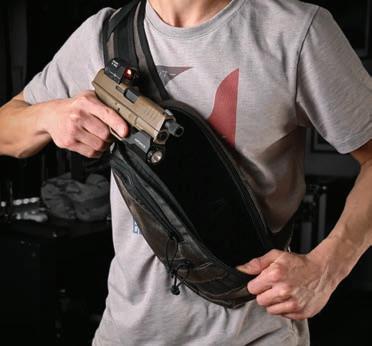
Savage Arms has added a new component to its popular line of AccuCan suppressors. The AC30 B.O.B. (Back Over Barrel) suppressor is the perfect option for shooters looking to enhance balance and reduce overall firearm length while shooting suppressed. The B.O.B. design partially encloses the barrel, allowing for more internal volume and minimizing the increase of overall rifle length. These modifications improve sound suppression and reduce point-of-impact shift, leading to better accuracy.
“The AC30 B.O.B. is a great addition to our suppressor line that gives hunters and shooters performance advantages and options,” says Beth Shimanski, director of marketing at Savage Arms. “This design and option is attractive to a wide variety of hunters, as it provides a significant reduction in noise, is more compact, rated for all .30 caliber options, and also reduces felt recoil. Competitive shooters will enjoy similar benefits of reduced noise and recoil, without sacrificing maneuverability.”
At a weight of only 13.7 ounces and fully serviceable in the field, the new AccuCan is perfect for backcountry hunting or all-day shooting excursions. Capable of shooting any .30 caliber cartridge up to .300 Winchester Magnum, it is compatible with a wide variety of firearms, including most Savage firearms with factory-installed Proof Research barrels.
A standout feature of the AC30 B.O.B. is the revolutionary MonoKore design. This approach
allows the suppressor to reduce both flash and recoil, giving shooters a more enjoyable and
accurate experience at the range or in the field. SRP: $999. savagearms.com

by S laton l . W hite
Waterfowl hunters these days benefit from a host of innovative loads. That is a welcome development, but the variety of choices can make heads spin—for hunters and retailers alike. A hunter’s ammo menu includes steel, bismuth, tungsten, and TSS (tungsten super shot), each of which offers specific performance benefits. But these non-toxic loads come with sticker shock, because dense nontoxic metals, such as bismuth and tungsten, have higher commodity prices, which do make for a more expensive product. Turkey hunters, who on a good day will take one shot only, can justify the cost of a TSS turkey load, which could be as high as $10 per shell. Waterfowlers, however, expect to shoot a lot more, and at $10 per shell, a day in the blind can become prohibitively expensive.
That’s where a product called “stacked loads” comes into play. Basically, it’s a form of modern alchemy where ammo manufacturers mix pellet sizes and materials to create high-performing shotgun loads for waterfowlers. But just what are these loads?
“A stacked (duplex) load is when you have two different shot sizes in the same shotshell,” says Ronald Evans, Remington shotshell product line manager. “The smaller pellet size, such as No. 4, is most of the time nearest the powder or the bottom of the load; the larger pellets, such as size BB, sit at the top. In most cases, we see improved performance in patterns and effective ranges. Smaller shot delivers denser patterns at close range while the larger shot is effective at longer ranges. This type of load also works well when more than one species of waterfowl is being hunted. If a hunter is chasing ducks, but geese are in the area, he could use a BB and No. 4 load for both birds.”
Stacked loads can also comprise different metals. “We will use stacked loads to maximize pattern density and/or increase down-range energy,” says Scott Turner, HEVI-Shot shotshell product line manager. “When dealing with non-toxic materials, we are limited to TSS (18 grams per cubic centimeter), HEVI-Shot tungsten (12.0g/cc), bismuth (9.6g/ cc), and steel (7.8g/cc). The higher the density, the higher the material cost. By stacking different materials, we are able to tailor a good balance of cost and performance for the consumer.”
Turner also points out a feature of HEVI-Shot that retailers should bear in mind. “HEVI-Shot is known for its density,” he says. “By using denser products, we are able to reduce the size of the pellets for the same down-range energy. For example, if you shoot a size 3 steel pellet, you can shoot a size 6 HEVI-Shot tungsten pellet or a size 4 bismuth. That
way, a hunter can put more lethal pellets on target. That’s why our HEVI-Shot X-treme comes in size No. 1 (steel) and size No. 4 (tungsten). There are two other combinations as well.”
And though stacked steel loads are generally less expensive, retailers should note manufacturers consider them to be premium products. “Non-toxic stacked loads that use steel and either bismuth or a tungsten metal are referred to as a premium or highperforming product and offer performance advantages, such as improved wad systems, over traditional steel loads,” says Joshua Vickers, Federal shotshell product line manager. “In the case of Federal’s new Ultra Steel, which offers steel stacked loads (BB and 2, 2 and 4, and 3 and 5), we have found that by stacking two different steel shot sizes coupled with our FLITECONTROL Flex wad, we were able to notably increase pattern densities in a 15-inch circle at 40 yards, making for a more lethal load.”
Here is a selection of stacked loads that retailers should consider stocking.
Black Cloud TSS (12- and 20-gauge): 60 percent HEAVYWEIGHT TSS and 40 percent steel FLITESTOPPER pellets in No. 3 (steel) and No. 9 (TSS) or BB; Ultra Steel: a fifty-fifty mix of all-steel payloads in either 3 and 5, 2 and 4, and 2 and BB in 3-inch 12-gauge. New in 2025 will be 3.5-inch 12-gauge loads in 2 and 4 or 2 and BB. In addition, there will also be a 3.5-inch 10-gauge load in 2 and BB or 1 and BBB. federalpremium.com

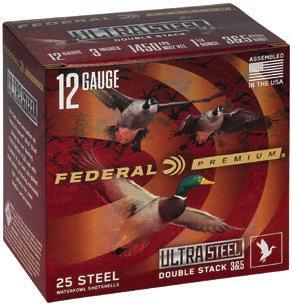
HEVI-Metal Xtreme: 30 percent tungsten and 70 percent steel in mixed sizes 3 (steel) and 6 (tungsten), 1 and 4, or 2 and BB. New for 2025, HEVI-Steel Layered (12- and 20-gauge) consists of payloads of 100-percent steel in different sizes, such as 3 and 5, 2 and 4, or 2 and BB. hevishot.com

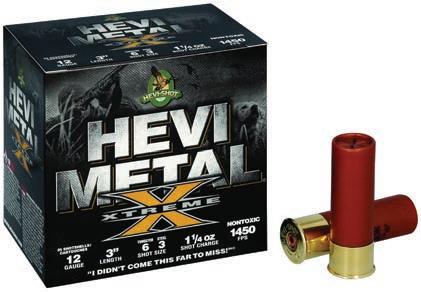
Nitro Steel Duplex currently comes in four 12-gauge configurations: 2 and 4, 6 and 2, 4 and BB, and 2 and BB. In 2025, Nitro Steel Duplex will introduce three new 20-gauge SKUs in 4 and 6, 2 and 6, or 2 and 4. remington.com
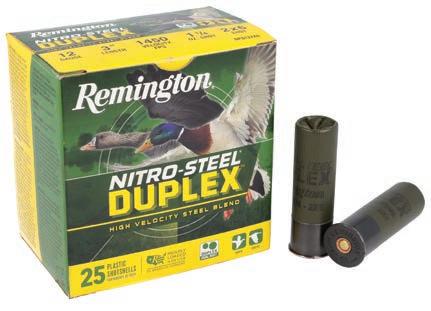
For decades, the lever-action rifle has been synonymous with the Old West, hunting, and classic Americana. But in recent years these rifles have experienced a resurgence—not just among collectors and hunters, but also in tactical and survival scenarios. Once considered obsolete in the face of semi-automatic platforms, lever guns are proving their worth in the modern era, particularly in states with restrictive firearm laws and among those seeking a versatile, powerful alternative for defensive use.
Lever-action rifles offer several tactical advantages that make them a viable option for today’s shooters. Unlike modern sporting rifles, lever guns often bypass many restrictive state regulations due to their traditional design. This makes them an attractive choice for those living in states with magazinecapacity limits or bans on semi-automatic rifles.
Beyond the legal considerations, lever-action rifles offer lightweight, maneuverable, and fast-handling capabilities. Their slim profile makes them easy to carry and store, and their cycling speed—while not as fast as a semi-auto—is quicker than many assume. With practice, a skilled shooter can deliver rapid follow-up shots with surprising efficiency.
Big Horn Armory has taken the concept of a tactical lever gun to the next level with the Model

89 Black Thunder and the Model 89 White Lightning. These rifles blend the heritage of the lever action with modern features that make them highly effective for tactical applications. Chambered in .500 S&W, the Black Thunder and White Lightning deliver significant stopping power, making them formidable choices for personal defense, hunting, and law-enforcement applications.
Constructed from precision-machined stainless steel with a black nitride or laminate gray finish, these rifles are also built to withstand harsh environments.
Fiocchi of America, a global leader in defensive, target, and hunting ammunition, is proud to welcome Kiersten Sales to the Pro Staff Team. Sales is a dedicated sporting clays competitor with an impressive list of accomplishments, including 2025 Florida Challenge: Main Lady Champion; and 2023 National Championship, FITASC: Ladies Champion.
“I love to compete and have a deep desire to be the best I can be,” says Sales. “I began playing tennis at three years old and added volleyball and gymnastics by age ten. My brother started shooting clay targets with the SCTP team at Quail Creek Plantation in Okeechobee, Florida, and my competitive nature drew me to this sport, which requires a high level of self-discipline. Soon, I was hooked on breaking clays. My seven years in the SCTP program brought me many hard-fought successes. The work ethic and self-motivation required were the catalysts for my desire to succeed. I started shooting NSCA events and earned a spot in Master Class at age 14. This
sport truly rewards your efforts; I have recently completed the NSCA Level 1 Instructors Course, and I aspire to give back as a mentor and coach. My goal is to reach my full potential and earn a spot on the USA Sporting Clays Team. I am excited to excel and push myself to the highest levels this sport has to offer. I look forward to traveling around the nation, making new friends, aligning myself with companies and products I believe in, and seeing just how far I can go.”
Sales has selected Fiocchi’s White Rinos and Little Rinos as her competition shell.
“We are thrilled to add Kiersten to our team. She is a very accomplished and well-rounded young lady,” says Holly Hammond, Fiocchi’s marketing manager. “I believe her long list of achievements is just the beginning of her competitive career. We welcome her to the Fiocchi family.” fiocchiusa.com
Tactical enhancements, such as M-LOK attachment points, threaded barrels for suppressors, and integrated rail systems make these rifles adaptable to modern accessories, including optics, lights, and lasers.
Whether navigating legal restrictions, looking for a powerful truck gun, or simply embracing the reliability of a lever-action rifle in a tactical setup, these firearms stand out as a modern solution with timeless performance.
Bighornarmory.com

Henry Repeating Arms, a leader in leveraction rifle production, has created a new R&D initiative—Special Products Division—focused on forward-thinking. The first product out the door is the the HUSH Series, a new line of suppressoroptimized lever-action rifles. This release marks a significant expansion in Henry’s modern firearm offerings with a platform purpose-built to deliver the optimal solution for suppressed shooting and hunting without compromising weight and balance.
Lever-action rifles have long been celebrated for their inherent balance, reliability, fast follow-up shots, and more recently, their innate suppressibility due to a closed action. The HUSH Series builds on those strengths by dramatically reducing the weight forward of the receiver, ensuring the rifle’s natural point of balance is preserved even with a suppressor mounted. These refinements define Henry’s Ultimate Suppressor Host (HUSH)—offering a quieter, smarter, and more capable solution for modern hunters and shooting enthusiasts.
“Suppressor use is growing rapidly, and for good reason,” says Andy Wickstrom, president of Henry Repeating Arms. “It protects hearing, minimizes recoil, reduces game spooking, and improves the
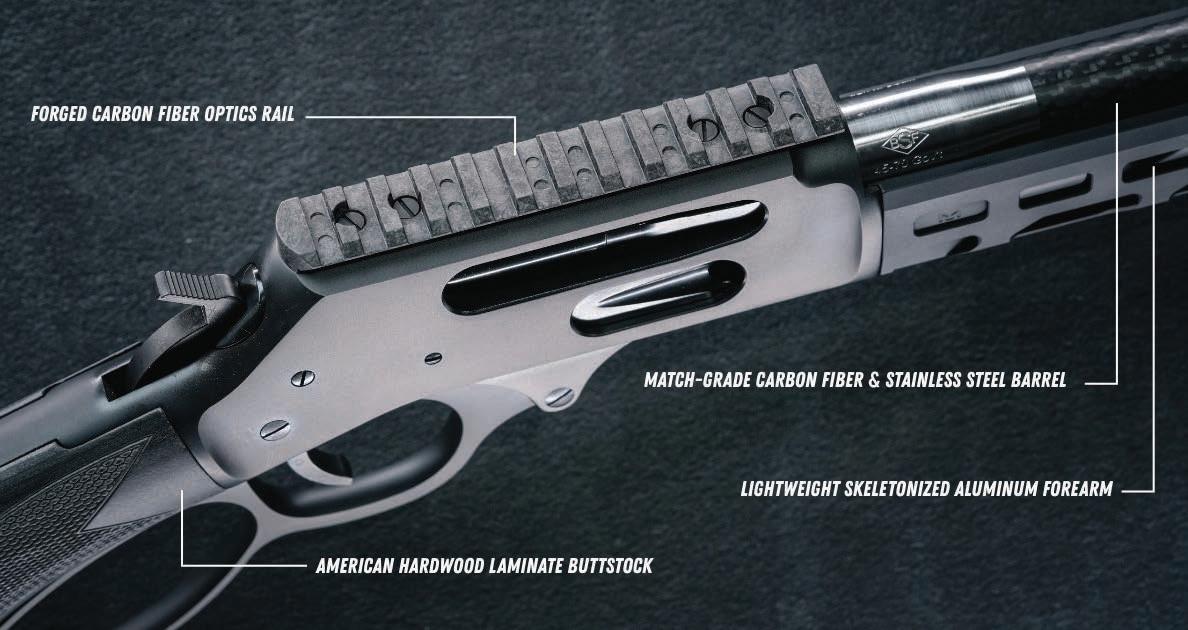
overall experience when out at the range. With the SPD’s HUSH Series, we deliver the best possible platform for running suppressed without compromise.”
Key features across the series include matchgrade 416R stainless-steel barrels encased in a tension-wrapped carbon-fiber sleeve, manufactured in

partnership with BSF Barrels of Devalue, Wisconsin; lightweight, skeletonized aluminum forearms featuring M-LOK accessory slots, designed in collaboration with TAPCO; a checkered, lightweight, matte dark gray American hardwood laminate stock with a rubber recoil pad; receiver-mounted forged carbon-fiber Picatinny rail for optics mounting; and a threaded muzzle for suppressor use.
“With the HUSH Series, our engineering team started with a clean slate and a clear objective: design the ideal suppressor host from the ground up,” says Nick Chappell, vice president of engineering at Henry Repeating Arms. “Every design decision, from the carbon-fiber tension-wrapped barrel to the aluminum forearm and forged carbon optics rail, was made to reduce weight, enhance balance, and maximize performance. This is the most technically advanced lever-action ever produced, and we’re just getting started.”
The HUSH Series will be available in five popular calibers: .45 Colt, .357 Magnum/. 38 Special, .44 Magnum/.44 Special, .30-30 Win., and .45-70 Gov’t. SRP: $1,999. henryusa.com

Our purpose is to advocate for the industry and your business. Help us keep both strong.
NSSF® — The Firearm Industry Trade Association, constantly works on behalf of every one of its thousands of members to strengthen our industry. We provide unparalleled education resources, in-depth market research, compliance consultations with industry pros and other tools to help any size firearm business thrive.
Membership dues support our e orts that support your business.
JOIN A COMMUNITY OF LIKE-MINDED BUSINESSES THAT ARE COMMITTED TO THE FUTURE OF THE SHOOTING AND HUNTING INDUSTRY.









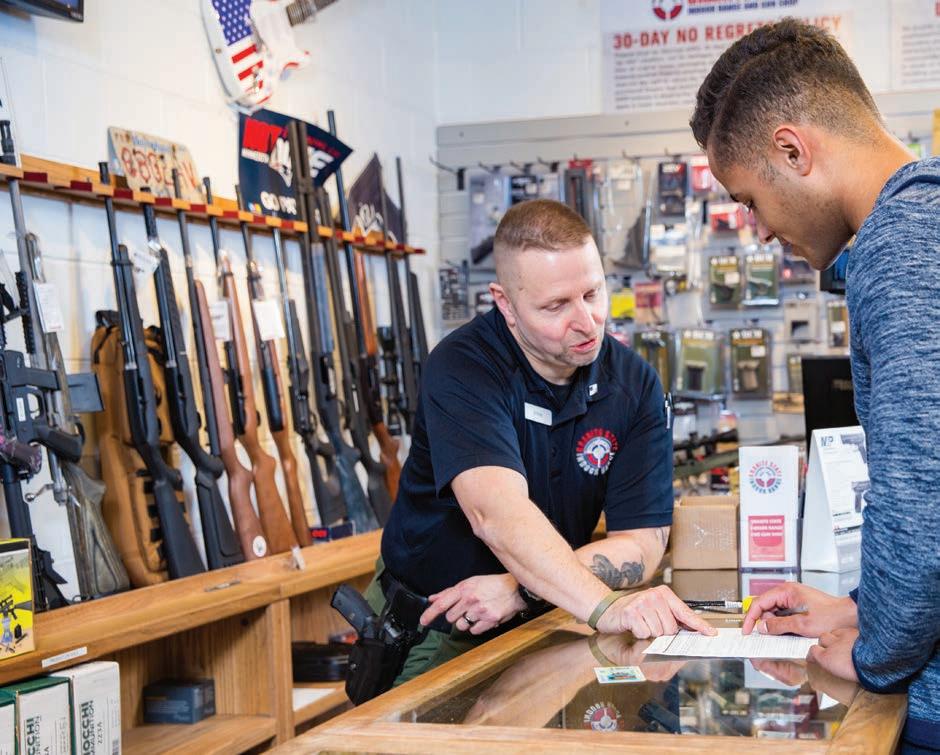





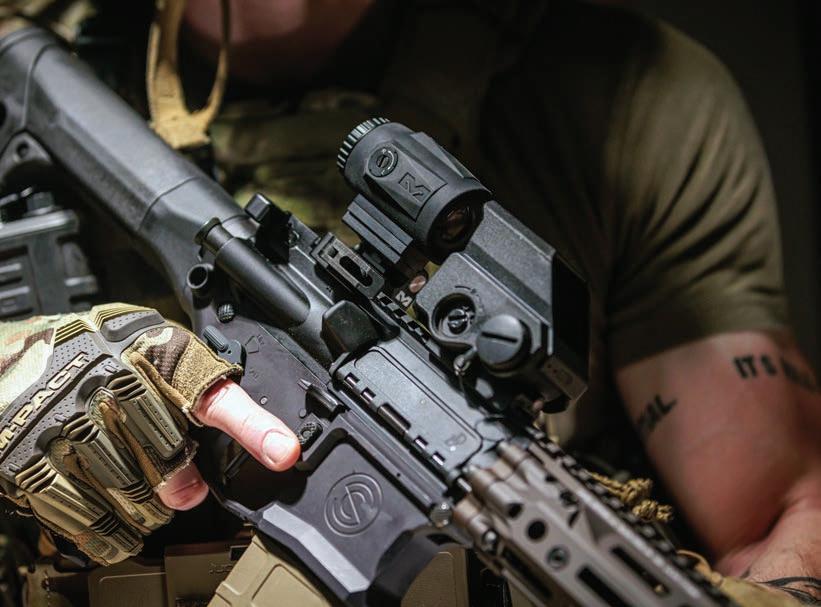
Enhancing a company’s brand presence and market growth requires adhering to a well-executed strategic plan.
eprolight, a division of the SK Group, is the premier manufacturer and global supplier of top-grade electro-optical and optical sights; self-illuminated sights for pistols, shotguns, and rifles; and night vision devices and thermal sights. As director of marketing at Meprolight USA, Eric Suarez has spent the last four years leading strategic initiatives that have significantly enhanced the company’s brand presence and market growth.
With a distinguished career in the United States Marine Corps, specifically within Special Operations, Suarez brings a wealth of experience in high-pressure environments and leadership to his role. After retiring from military service in 2016, he transitioned into the firearms industry, leveraging his tactical expertise and strategic vision to drive marketing efforts that support Meprolight’s mission of providing cutting-edge optical solutions for military, law enforcement, and civilian markets. His passion for supporting today’s warfighter is a driving force behind his work, ensuring that every initiative aligns with the needs of those who rely on the highest-quality gear in the field.
SHOT Business: What do you see as the biggest challenges facing the industry in the next five years?
Eric Suarez: In the next five years, the outdoor and firearms industry will face several key challenges. One of the most significant will be navigating the evolving regulatory landscape. As governments increasingly introduce (or rescind) new laws and restrictions, businesses will need to stay agile to ensure compliance without compromising product availability or innovation. Additionally, the growing concern over safety and
responsible gun ownership will require companies to develop and promote solutions prioritizing education and training. Adapting to changing consumer behaviors, particularly with the rise of e-commerce and digital engagement, will be essential for businesses to stay competitive and relevant in an ever-evolving market. Our industry has a very wide demographic. With that, we cannot focus on one segment without affecting another, so balance is key. In the end I believe a great company is one that can adapt and make sound decisions in a timely manner. Those that can will succeed; those that are stuck in the old ways will probably struggle.
SB: What opportunities do you see?
ES: In the next five years, sales and marketing within the firearms and outdoor industry will see exciting opportunities. One of the most prominent will be the ability to leverage digital marketing and e-commerce to reach a broader, more diverse audience while gaining marketing data and analytics. As more consumers turn to online shopping, brands will tap into targeted advertising, social media campaigns, and influencer partnerships to increase brand awareness and drive direct sales. Another significant opportunity lies in personalized marketing, where datadriven insights allow companies to tailor their messaging and offers to specific customer segments. Creating a community through brand-driven experiences—such as events, strategic partnerships, and outdoor experiences—will provide valuable opportunities to engage with customers on a deeper level and foster brand loyalty.

SB: When you get up in the morning, what gets you excited about working in the industry?
ES: My work at Meprolight and within the firearms industry is deeply rooted in my military background and my commitment to supporting the needs of the warfighter. Having served myself, I understand the critical importance of reliable, high-performance equipment in high-stakes environments. My experience drives me to ensure we deliver products that meet the exacting standards required by military and law enforcement agencies around the world. It’s humbling to know that many of our employees and their families still serve, and that our company’s core purpose is to be a global supplier of mission-critical solutions for military and law enforcement agencies. This sense of duty and connection to those on the front lines fuels my passion for this industry, and it’s why I’m dedicated to ensuring we continue to develop the best products possible for those who rely on them most.
SB: How will you meet the expectations of your customers?
ES: We stay ahead of our competitors by focusing on continuous innovation, customer centricity, and building strong relationships within the industry. By closely monitoring market trends, regulatory changes, and consumer preferences, we ensure that our product offerings remain relevant and ahead of the curve. We prioritize developing high-quality, unique products that offer real-world solutions, including accessories and mounting systems enhancing the functionality of our core products. In addition, we place a strong emphasis on customer education and support (blogs, YouTube videos, and constant updates of our data on our website), ensuring that our clients are not just purchasing products, but are also empowered with the knowledge to use them responsibly and effectively. Leveraging advanced digital marketing strategies, strong online engagement, and personalized experiences also allows us to directly connect with our audience to build brand loyalty and advocacy. By staying agile, innovative, and customer focused, we position ourselves to lead the market rather than follow it.
SB: In a very competitive world, how does Meprolight stay ahead of the pack?
ES: Staying ahead of the pack requires constant innovation, a deep understanding of the market, and commitment to excellence. While it’s true that we’ve been behind in the pistol optic and magnified optic space in the past, we’ve used that as an opportunity to not only fill those gaps but also disrupt the industry over the last 14 months with our new product offerings. We’ve launched a wide array of products that are not just “me too” but are crafted with the

Meprolight riflescopes feature intuitive and lockable windage and elevation turrets.
goal of delivering the best performance at competitive, affordable prices. By listening to our customers, understanding their real-world needs, and continually pushing the boundaries of product design and performance, we’re building a brand that’s not only innovative but also trusted by professionals worldwide. This commitment to quality, affordability, and disruption is what sets us apart and keeps us ahead of the competition.
SB: Optics technology in your sector (LE/MIL/ OEM) seems to be evolving quickly, driven by the demands of LE professionals and warfighters around the globe. How does Meprolight take advantage of this?
ES: Meprolight takes full advantage of the rapid evolution in optics technology by staying agile and closely connected to the needs of law enforcement professionals and military personnel worldwide.
Recognizing that these users operate in highly demanding environments, the company prioritizes continuous innovation and development of optics systems that integrate the latest advancements in technology. This involves closely monitoring emerging trends—such as advancements in night vision, lasing, rifle/pistol trends, and enhanced durability— to ensure that our products remain at the cutting edge of performance and reliability. Our strong emphasis on R&D allows us to rapidly incorporate these technological advancements into the product lineup, ensuring we deliver optics solutions that meet the evolving needs of our customers.
We also capitalize on our close partnerships with military and law enforcement agencies, using their real-world feedback to inform the development of new products. By understanding the specific challenges faced by these professionals, such as low-light conditions or high-stress environments, we can design optics that not only meet current demands but are also adaptable to future operational requirements.
SB: Meprolight was founded in 1990 as the primary red dot sight, sighting system, and battle optic
supplier to the Israel Defense Force (IDF). Does that heritage give the company a competitive advantage these days? If so, how does Meprolight employ that advantage on an everyday basis?
ES: Meprolight’s heritage as the primary supplier of red dot sights, sighting systems, and battle optics to the Israel Defense Force (IDF) undoubtedly gives the company a significant competitive advantage in the market today. This legacy is built on years of close collaboration with one of the most advanced military forces globally, providing us with invaluable insights into the rigorous demands of military and tactical applications. The IDF’s high standards and our role in fulfilling them have helped the company develop robust, reliable, and innovative products, positioning them as a trusted name in optics for both military and civilian markets, both globally and domestically.
SB: Meprolight’s vision statement says, “We are always looking to supply consumer communities with ‘tomorrow’s needs’ by continuing our long tradition of providing state-of-the-art solutions for any day or night conditions.” To do this, it seems you need to be able to see a bit into the future. How does the company do this?
ES: Meprolight’s ability to foresee and meet “tomorrow’s needs” is largely driven by its deep commitment to innovation, advanced research, and a proactive approach to understanding evolving market demands. By continuously investing in R&D, the company stays at the forefront of emerging technologies in optics, ensuring that it not only meets the current needs of military and civilian markets but also anticipates future trends.
Additionally, we leverage our extensive experience in high-stakes environments, such as military operations, where anticipating future needs is crucial. The company integrates this real-world expertise into its product development cycle, using feedback and data from field testing to refine and innovate its offerings. Meprolight.com
As an IS 9001-2015 processor and stocking distributor of Special Bar Quality (SBQ) steel, Summit has the ability to produce, stock, and cut steel to suit its customers’ needs. The company can provide Gun Barrel Quality steel of all grades and sizes and produce custom blanks.

Summit Steel supplies manufacturers with a vital component of any firearm.
Just like the strength of any building lies in the quality of its foundation, the reliability and longevity of any firearm begins with the quality of the steel it’s built around. This concept is nothing new to the largest gun manufacturers in the world. And for nearly a decade, many of those manufacturers have turned to Summit Steel for the steel components that make up the foundations of all the firearms they manufacture.
It isn’t just the quality and the workmanship of the steel that has given Summit Steel such a solid reputation in the industry; it’s the quality of the
company. And for Summit Steel, that begins and ends with family.
Ross Bushman, CEO of Summit Steel, founded the company in 1985, but that certainly wasn’t his first foray in the steel business.
“My father started in the scrap metal business with his dad,” Bushman says. “My dad took over the company, and I started working with him right out of high school.”
When his father was forced to close the business because of unfavorable economic conditions, Bushman struck out on his own. He took out a second mortgage on his house and founded Summit Steel.
With his knowledge of the steel industry, Bushman slowly began growing his fledgling company. And while he had a very diversified customer portfolio from the beginning, it didn’t include the firearms industry.
“I hadn’t even considered the firearms industry,” he says. “Neither had my dad. I don’t know what we were thinking.”
That all changed 20 years ago when Bushman’s son, Jason, who is now president of Summit Steel, joined the family business. Since then, Summit Steel has grown beyond anything Ross had imagined.
“When I first started the business, we were mostly brokering and bringing in the steel that our customers needed,” Bushman says. “When my son joined me, that’s when things really started to kick into high gear.”
Once they set their sights on the firearms industry, it didn’t take long for manufacturers to recognize the benefits of working with Summit. As an IS 9001-2015 processor and stocking distributor of Special Bar Quality (SBQ) steel, Summit has the ability to produce, stock, and cut steel to suit its customers’ needs. They can provide Gun Barrel Quality steel of all grades and sizes and produce custom blanks. From chamfering, heat-treating, and cold finish steel, Summit has become the one-
stop shop for many of the major firearms manufacturers in the country.
The increase in business that resulted from working with the firearms industry also helped shape an expanded business model that allowed Summit Steel to better serve its customers.
“Instead of just brokering, we built a warehouse so we could maintain an inventory of the kind of steel our customers use on a regular basis. That way we have it readily available whenever they needed it,” Bushman says. “That also allowed us to provide for other customers’ needs as well.”
Summit currently has several warehouses and a production saw-cutting facility with plans to build another facility in the near future. This will not only allow them to store more steel, but more types of steel for different uses within the firearms industry as well as across other industries such as oil and gas, military, transportation, and infrastructure.
The warehoused stock also gives Summit the ability to respond rapidly to its customers’ changing needs. So when a manufacturer decides to do a quick run on a popular firearm, Summit Steel can get them the steel they need when they need it instead of having to wait weeks to give customers
Consumers may not know the source of the steel in the barrel of a rifle, but firearm manufacturers appreciate the quality of Summit’s Gun Barrel quality steel as well as custom blanks.

the steel that meets their exact specifications. And where that steel comes from is just as important to Bushman as what they do with it once it arrives.
“The stainless steel we stock is from a mill preferred by most manufacturers,” he says. “All our regular alloys and carbon stock we buy from U.S. mills. We buy as much from domestic mills as we can. That’s important to our customers and it’s important to us.”
Being able to get the manufacturers the steel they want, when they want it, is one of the reasons that Summit Steel has such a solid reputation in the industry. But it isn’t the only reason.
“We’re a close-knit family operation and we create our business on relationships,” Bushman says. “We recognize our customers’ needs and we meet those needs. We get the job done, and they appreciate that because that’s how they do business, too.” ammomachineryshop.com




with solid accuracy in mind. Quick and simple on its own. Quiet and efficient when suppressed. The Davidson’s Exclusive Ruger American Ranch Camo is ready to put in a good day’s work.


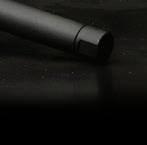
by Brad Fitzpatrick
If your customers are looking for new big-game, waterfowl, target, or self — defense loads, they'll find them all — and more this year.
Never willing to settle for the same old cartridges, propellants, and projectiles, ammo brands are forever improving upon their products, and that results in better options and improved performance for hunters, shooters, and LE professionals. This year a number of noteworthy new ammunition products are debuting, and these include everything from lead-free hunting and target shotshells to new defensive handgun ammunition and several new cartridges. Perhaps the most noteworthy of these is the launch of a brand-new rimfire round from Winchester that is set to take on the oldest established cartridge in existence, the .22 LR. But regardless of your favorite platform or shooting application, there are new loads to get excited about on this list.
For 2025, APEX Ammunition is adding a 3-inch 20-gauge load to their popular TSS/S3 family of blended waterfowl ammo. The new 20-gauge load combines ⅞-ounce of premium No. 2 steel with ¼-ounce of No. 7.5 TSS. This blended load offers maximum versatility and value by combining steel shot, which is affordable and highly effective for close shots over decoys, with TSS pellets that are extremely dense and carry more energy at extended ranges than non-toxic pellets. TSS pellets have a density of 18.3 g/cc, which is 56 percent denser than lead, and this allows companies like APEX to add smaller No. 7.5 TSS pellets to their blended loads, filling out the pattern while still retaining outstanding downrange energy and improving penetration thanks to the smaller surface area of TSS pellets. The steel pellets in this load are zinc-coated to reduce friction and improve patterning.
APEX TSS/S3 waterfowl ammunition is loaded with their tungsten-grade wads, and these blended loads offer the benefits of both steel and TSS shot, making them a great option for serious waterfowlers.
apexammunition.com


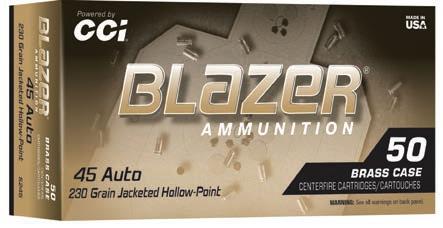
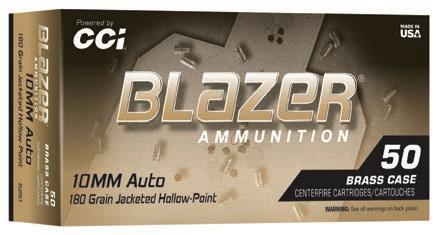
This year CCI’s Blazer is adding hollow point options to the affordable Blazer Brass line of training ammunition. Four new Brass HP options—9mm 115-grain JHP, .40 S&W 180-grain JHP, 10mm Auto 180-grain JHP, and .45 ACP 230-grain JHP— round out the company’s line of FMJ brass ammunition and offer an affordable and reliable training option with improved terminal performance over traditional FMJs. The new Brass HP loads will be sold in 50-count boxes and come with reloadable brass cases.
CCI has a reputation for offering some of the most reliable, accurate, and innovative rimfire products on the market each year, and for 2025 they’re adding a couple of new products to their lineup, including Suppressor MAX .22 LR ammunition. With a muzzle velocity of 970 fps, Suppressor MAX is safe for use in suppressors and yet it will reliably cycle semi-auto .22 pistols and rifles. The 45-grain segmenting hollow point provides excellent terminal performance at low velocities, and that will make this new CCI load extremely appealing to anyone who runs a can on their rimfires. CCI is also offering a new .22 WMR load specifically designed for personal defense, Uppercut .22 WMR. This .22 WMR load features a 40-grain hollow point bullet that is engineered to offer the optimal blend of penetration and expansion, providing the best possible performance from .22 WMR handguns, but it will also work in .22 WMR rifles. The .22 WMR is certainly on the light side for personal defense, but having the right bullet like CCI’s Uppercut makes a major difference in downrange performance.
cci-ammunition.com
Federal has been offering ammunition for hunters, shooters, and law enforcement professionals for over a century, and this year they’re adding a new .44 Remington Magnum load to their HST line of personal-defense ammunition. These 240-grain HST loads offer more energy than 10mm Auto, .357 Magnum, and .44 Special loads yet they produce less recoil than Federal’s full-power .44 Magnum hunting and beardefense loads. In addition to premium HST bullets, these rounds come loaded with quality propellants and primers and feature nickel-plated cases.
Other new additions to Federal’s handgun ammunition lineup include the addition of .45 Colt and .32 H&R Magnum Hydra-Shok Deep offerings. Both loads come with nickel-plated cases and sealed primers, and both are designed to balance bullet expansion and penetration. The .45 Colt load comes with 210-grain HSD JHP bullets while the .32 H&R Magnum features 80-grain HSD JHP bullets. Also new this year for .32 H&R Magnum fans is Federal’s 85-grain American Eagle JSP practice load, an ideal choice for those who carry a .32 H&R revolver, and a light, affordable practice load for .327 Federal revolvers. Handgun hunters will be happy to hear that Federal is offering a new 10mm Power-Shok load with 200-grain JHP ammunition, a load that is suitable for a variety of game, including deer and hogs.
Perhaps the biggest news this year from Federal, though, is the launch of their new 7mm Backcountry hunting cartridge. There are plenty of 7mm cartridges currently available, but because the 7mm Backcountry utilizes a Peak Allow steel case, chamber pressure can be increased to levels well above what could be sustained using brass cases. The result is increased performance, especially with shorter barrels. With 170-grain bullets, the 7mm Backcountry achieves roughly 3,000 fps from a 20-inch barrel, which is about 150 fps faster than a 7mm PRC from a barrel of the same length. The Peak Alloy steel is far better than the cheap steel alloys used in imported ammunition, and Federal nickel plates the cases for durability and smooth cycling. Because the cartridge diameter is smaller, it will fit one additional round in the magazine compared to other modern 7mm cartridges. Because it works well in rifles with relatively short barrels, the 7mm Backcountry is well-suited for use with suppressors.
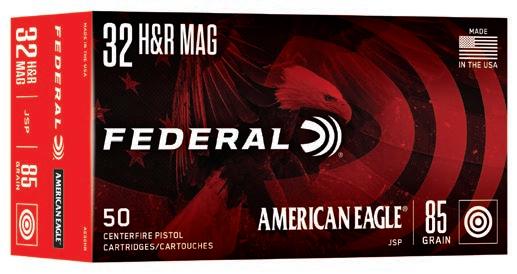
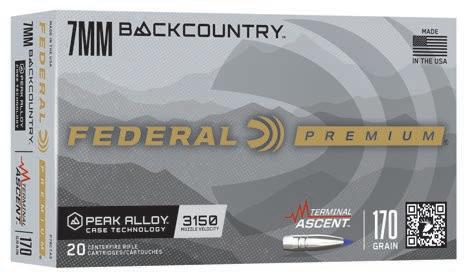
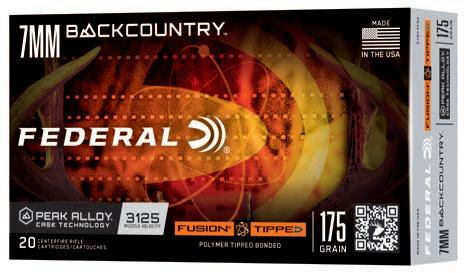
Federal will also offer 7mm Backcountry ammunition loaded with 155-grain Terminal Ascent bullets as well as 168-grain Barnes LRX bullets, 175-grain Fusion Tipped, and a whopping 195grain Berger Elite Hunter bullet with a G1 ballistic coefficient of .755.
Though the 7mm Backcountry is certainly big news, it’s hardly the only new rifle ammunition available from Federal this year. There’s a new 6mm ARC load available in the Gold Medal target line this year, and that round is loaded with an 108-grain Berger boat tail bullet with a very high BC. There are also some exciting cartridge additions coming to the Terminal Ascent, Barnes TSX, and Barnes LRX ammunition lines this year as well, and Federal is adding a new .22 LR load to their HammerDown family. The new 40-grain .22 LR Hammer down ammunition features a copper-plated hollow-point bullet that is designed to operate flawlessly in .22 lever guns and offers lethal downrange performance on small game.
Federal has been driving shotshell design and development for decades, and this year the company is offering a long list of new and innovative shotshell products. Most notable, perhaps, is their Master Class line of sporting clay shotshells. Designed specifically to improve your score at clay games, these shells offer a new Podium design wad that is optimized for use in Federal’s straight-wall hull. These shells feature a new, stylish look and feature premium wads, hulls, shot, and other components that are suitable for high-level sporting clay and FITASC shoots. Six 12-gauge loads (four 1-ounce, two 1⅛-ounce) will be available initially, but you can expect the Master Class family to continue to expand over the coming years. Also new from Federal is their 16-gauge BLACK CLOUD load that comes with a blended ⅞-ounce load of premium zinc-plated steel and Flitestopper shot (60/40, respectively) and Flitecontrol wads. For those who like to hit their birds with the heaviest steel payloads possible, Federal is also adding a 3½-inch 12-gauge and 3½-inch 10-gauge loads to their Ultra Steel line. Both will come with 1½-ounce loads, and there are blended 10- and 12-gauge loads available as well. There are new HEVI-Bismuth loads available in 16 and 28 gauge this year, and fans of the 28-gauge will be happy to hear that in addition to the HEVI-Bismuth load Federal will also be offering a Heavyweight TSS 28-gauge load as well as a 28-gauge Rob Roberts 28-gauge Custom Shop TSS turkey load. federalpremium.com
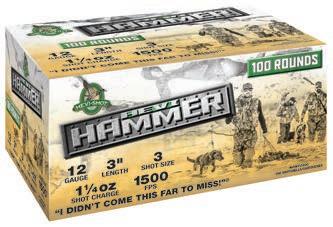
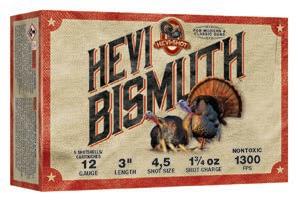
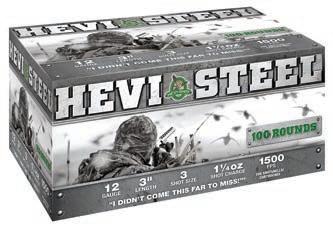
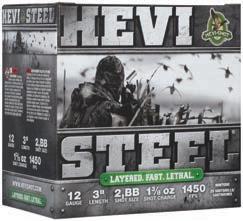

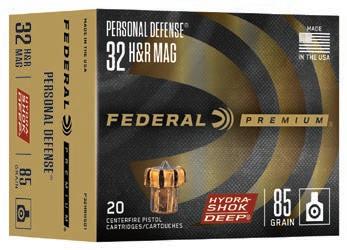
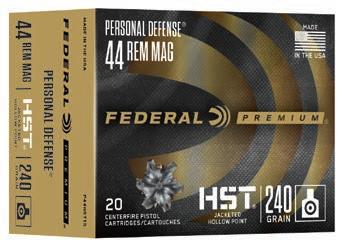

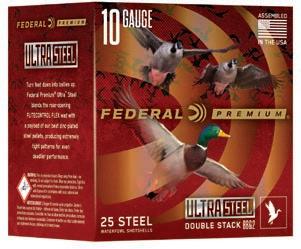
HEVI-Shot is offering some new additions to their line of hard-hitting turkey loads for 2025. First up is HEVI-Bismuth Turkey, which is being offered in both 12- and 20-gauge loads. This ammunition mixes both No. 4 and No. 5 HEVI-Bismuth shot for a lethal non-toxic load. There are four HEVI-13 Turkey loads making a comeback this year, all of which are loaded with HEVI-Shot’s 12 g/cc tungsten pellets, which offer 20 percent more knockdown power than comparably sized lead pellets. HEVI-13 Turkey will be available in 12-gauge or 20-gauge 3-inch loads this year, and shooters can select loads with either No. 6 or No. 7 tungsten. There’s a new addition to the company’s Magnum Blend Turkey loads: for 2025 HEVI-Shot is adding a 28-gauge 2¾-inch Magnum Blend offering that features 15 16 ounce ounce of blended Nos. 5, 6, and 7 1⁄ 2 g/ cc tungsten pellets. There are also two new 2¾-inch 28-gauge turkey loads joining the HEVI-18 Turkey lineup this year, one with 1 1⁄16 ounces of No. 7 shot and the other with 1 1 16 ounces of No. 9 shot.
In addition to HEVI-Shot’s new turkey loads they’re also offering HEVI-Hitter Waterfowl loads this year that offer 20 percent tungsten pellets over 80 percent steel pellets. These layered loads are available in 12, 16, 20, and 28 gauge and combine the affordability and short-range effectiveness of steel pellets with the heavier (12 g/cc) punch of tungsten. There are four new HEVI-Steel layered offerings this year, including 12-gauge 2xBB and 2x4 and 20-gauge 2x4 and 3x5. Also new is a 1 1⁄ 8-ounce HEVISteel 16-gauge 2¾-inch load that is available in 2, 4, 6, and BB. There’s also a new 16-gauge, 2¾-inch load in the HEVI-Metal Longer Range lineup that also comes with 1⅛-ounce payloads. Lastly from HEVI-Shot are new 100 packs of popular HEVI-Steel and HEVI-Hammer loads in both 12 and 20 gauge. hevishot.com
The big news from Hornady is the .338 ARC (Advanced Rifle Cartridge). This unique round was designed to function in AR-15 rifles. The 307-grain SUB-X bullet at 1,050 fps offers 1.6 times more energy than the .300 Blackout subsonic for improved terminal performance. There’s also a 175-grain HP that offers a muzzle velocity of 2,075 fps. With an overall length of 2.260 inches, this cartridge will function flawlessly in AR-15 rifles and is also a great option for lightweight micro bolt-action guns. Hornady designed the .338 ARC to be cleaner than other subsonic rounds, and it functions with a 1:8 twist barrel for both supersonic and subsonic loads. It is also engineered to provide reliable subsonic and supersonic operation with the same gas settings.
Also new this year is Backcountry Defense handgun ammunition, which is designed to offer threat-stopping straight-line penetration against large, dangerous predators. The heart of this ammunition is Hornady’s new DGH (Dangerous Game Handgun) bullet that features a protected point design that locks the core to the jacket for straight-line penetration without deflection— key features when selecting a bear-stopping bullet. Because it uses a heavyfor-caliber jacketed bullet instead of a hard cast bullet there’s no lead smoke for improved awareness and faster follow-ups. Seven new Backcountry Defense loads are offered this year, ranging from a 138-grain 9mm+P load to a 500-grain .500 S&W Magnum.
Hornady is also expanding their existing ammunition lines this year as well. The popular .22 ARC cartridge will now be available loaded with a 70-grain CX monolithic bullet as well as an 80-grain ELD-X hunting bullet. A bit of good news for fans of the 6mm GT as well: factory ammunition will be available for this cartridge from Hornady starting in 2025. Hornady.com

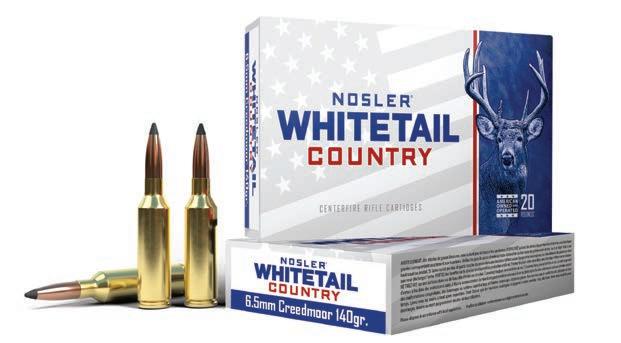
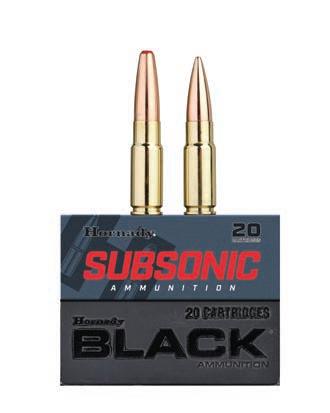
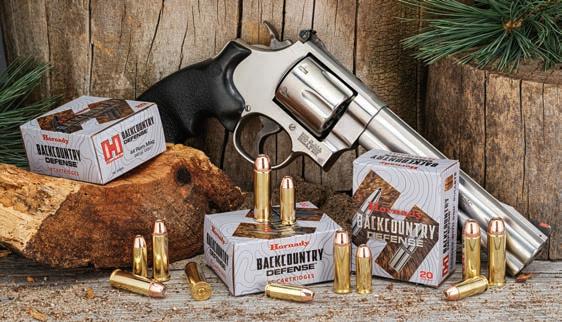
Nosler is taking aim at America’s most popular big-game animal with the launch of their new Whitetail Country centerfire rifle ammunition. Whitetail Country is available in a variety of popular cartridges like .270 Winchester, .30-30, .308 Winchester, and .30-06, and there are also two straight-wall offerings: .350 Legend and .45-70. The .350 Legend and .45-70 loads feature Nosler’s straight-wall jacketed soft point lead-core bullets which are engineered to expand reliably at extended ranges, and the bullet’s ogive is optimized for reliable feeding. Non straight-wall cartridges come with Nosler’s Solid Base jacketed lead core bullets that offer an accuracyenhancing boat-tailed bullet profile and offer consistent, reliable performance at a variety of ranges. This American-made ammunition is optimized for whitetails and comes loaded in high-quality brass with superb propellants for a very affordable price point. nolser.com
Remington has continued to expand their classic Core-Lokt line of hunting ammunition, and for 2025 the company is offering Core-Lokt Tipped Lever Gun ammunition. Building on the rugged and time-tested Core-Lokt design, these bullets are optimized for lever-action rifles and feature a flat polymer tip. Ballistic coefficients are also improved for better downrange performance. For example, Remington’s 180grain Core-Lokt Tipped bullet features a BC of .212, which is considerably better than the soft-point 180-grain .360 Buckhammer load that offers a BC of .163. This translates to better downrange performance with flatter trajectories, more energy, and less wind drift. Six new Core-Lokt Tipped Lever Gun loads are available for 2025: .30-30 Winchester 150-grain, .35 Remington 200-grain, .45-70 300-grain, .444 Marlin 240-grain, .32 Winchester Special 170-grain, and .360 Buckhammer 180-grain.
There are other new additions to the Remington Core-Lokt family this year, too: Remington is working with Bill Wilson of Wilson Combat and adding an 150-grain Core-Lokt .300 Ham’r load, along with 400 Legend. Also new for 2025 is a .300 Remington Ultra Magnum 180-grain load to their Core-Lokt Tipped line.
Remington’s new shotgun products include their Premier Royal Flush line of upland hunting ammunition. These loads feature plated lead shot for consistent patterns. With shot sizes ranging from No. 4 to No. 6, you can find the right load for hunting everything from preserve birds to wild-flushing late-season roosters. Also new this year is Remington Duck Club, an economical steel load available in both 12and 20-gauge offerings that’s ideal for a variety of situations.
Fans of steel shot should also check out Remington’s new Nitro Steel Duplex 20 gauge. Available in three different 3-inch, 1-ounce loads, Nitro Steel Duplex comes with a blend of 2x4, 2x6, or 4x6 shot, making it a versatile, affordable non-toxic load for your sub-gauge duck gun.

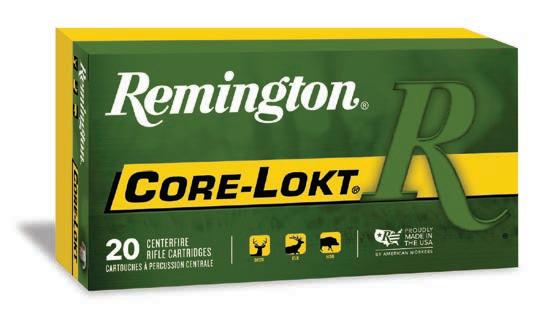
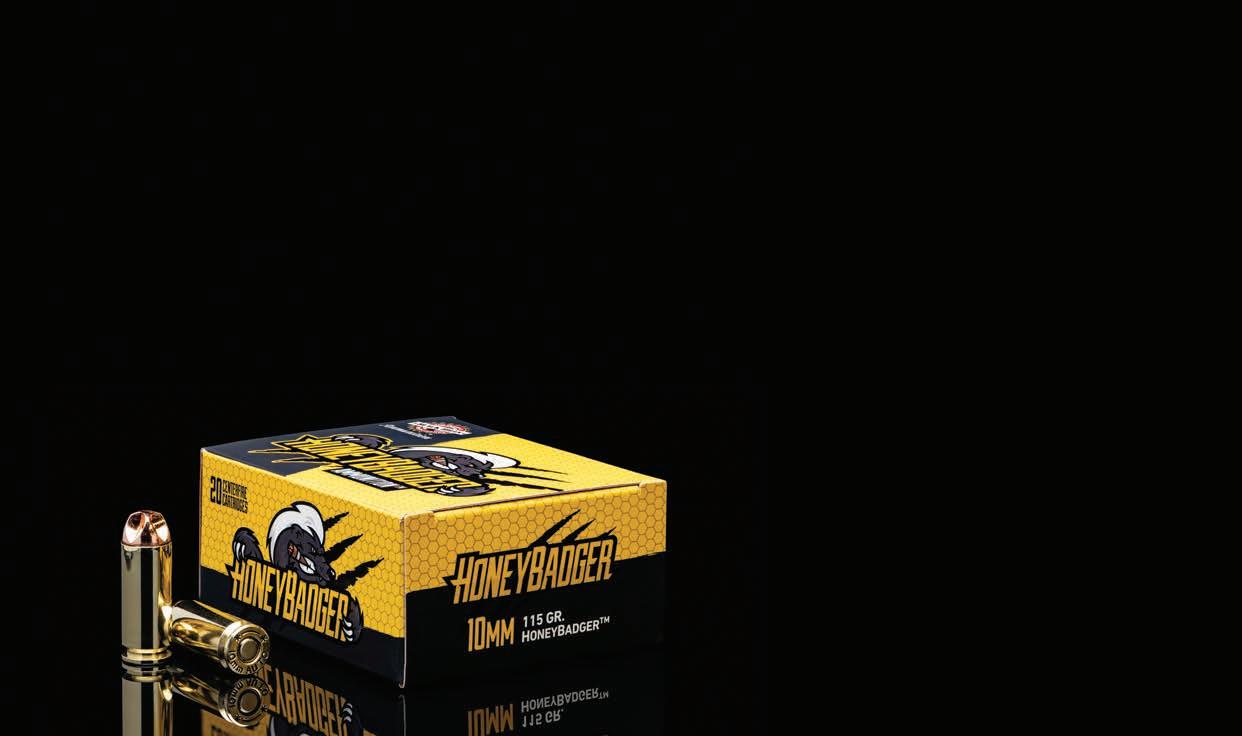
Remington’s rimfire line is extending in 2025 with the introduction of Wheelgun 22, a 39-grain truncated-cone lead .22 LR bullet optimized for use in revolvers. Wheelgun 22 is low velocity and low noise, making it the optimal choice for plinking. Remington is also releasing Standard V, a 38-grain lead roundnose .22 LR bullet made for the economical shooter. Also new for 2025 is Remington’s revamp of the .22 Short. These will be offered in both a 29-grain plated round nose and a 27-grain plated hollow point. All of these new loads, as well as the existing offerings from Remington, will include new technological advances and can be identified by the “R” head stamp.
remington.com
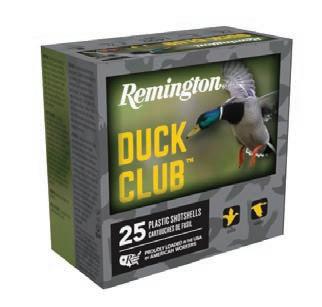
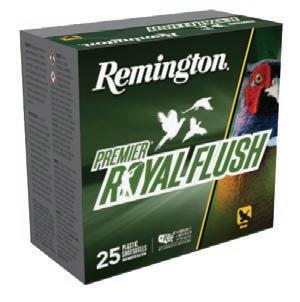
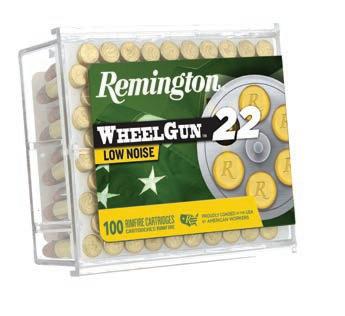

Winchester is changing the rimfire game with the launch of their new 21 Sharp, and in doing so they’re taking on the oldest and most popular cartridge available today—the .22 LR. The .22 LR has been popular since the 1800s, and it’s estimated that there are around 2.5 billion rounds of .22 LR produced annually. However, despite its popularity and longevity the .22 LR is not without its issues. Foremost among those is the use of a heeled bullet that restricts bullet design. Faced with the option to change the .22 LR cartridge or bullet, Winchester wisely opted to redesign the bullet profile to eliminate the need for a heeled bullet. The new .210-inch .21 Sharp bullet can be loaded into .22 LR-sized cases. This offers Winchester the flexibility to use a wider variety of bullet designs than are available with the .22 LR. Winchester will initially offer four .21 Sharp offerings: a 34-grain JHP, a 37-grain copper-plated lead bullet, a 42-grain FMJ, and a 25-grain lead-free Copper Matrix bullet. The Copper Matrix is groundbreaking because it offers a rimfire option in areas where lead ammunition is banned. Velocities range from 1,300 fps for the 42-grain FMJ to around 1,750 for the 25-grain Copper Matrix bullet, and that translates into excellent terminal performance on small game. Winchester claims that the 34-grain bullet expands to an average of 173 percent of its original size while retaining 99 percent of its original weight and penetrating nearly three feet of gelatin. All of which means it performs appreciably better than the .22 LR. The design requires nothing more than a barrel swap to change .22 LR rifles to .21 Sharp, and the ability to use new, modern, and easy-to-manufacture bullets could potentially help mitigate periodic rimfire ammunition shortages that have plagued shooters.
Also new from Winchester is Last Call, a brand-new waterfowl load that utilizes 18 g/cc TSS shot for improved lethality on ducks and geese. TSS will be available in 12-, 20-, and 28-gauge offerings as well as .410.
Because it utilizes high-density TSS pellets, Last Call ammunition is loaded with pellets that are smaller in diameter (No. 5 to No. 9), and this allows for more pellets per shot. TSS’s incredibly high density makes it lethal on birds, reducing cripples and resulting in cleaner, faster kills. winchester.com
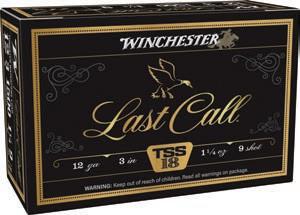

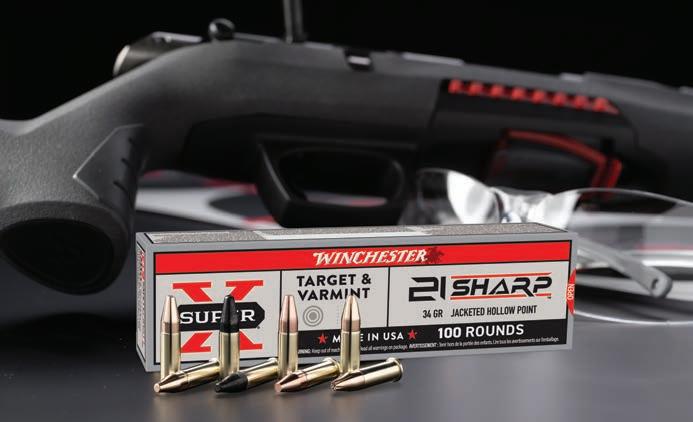
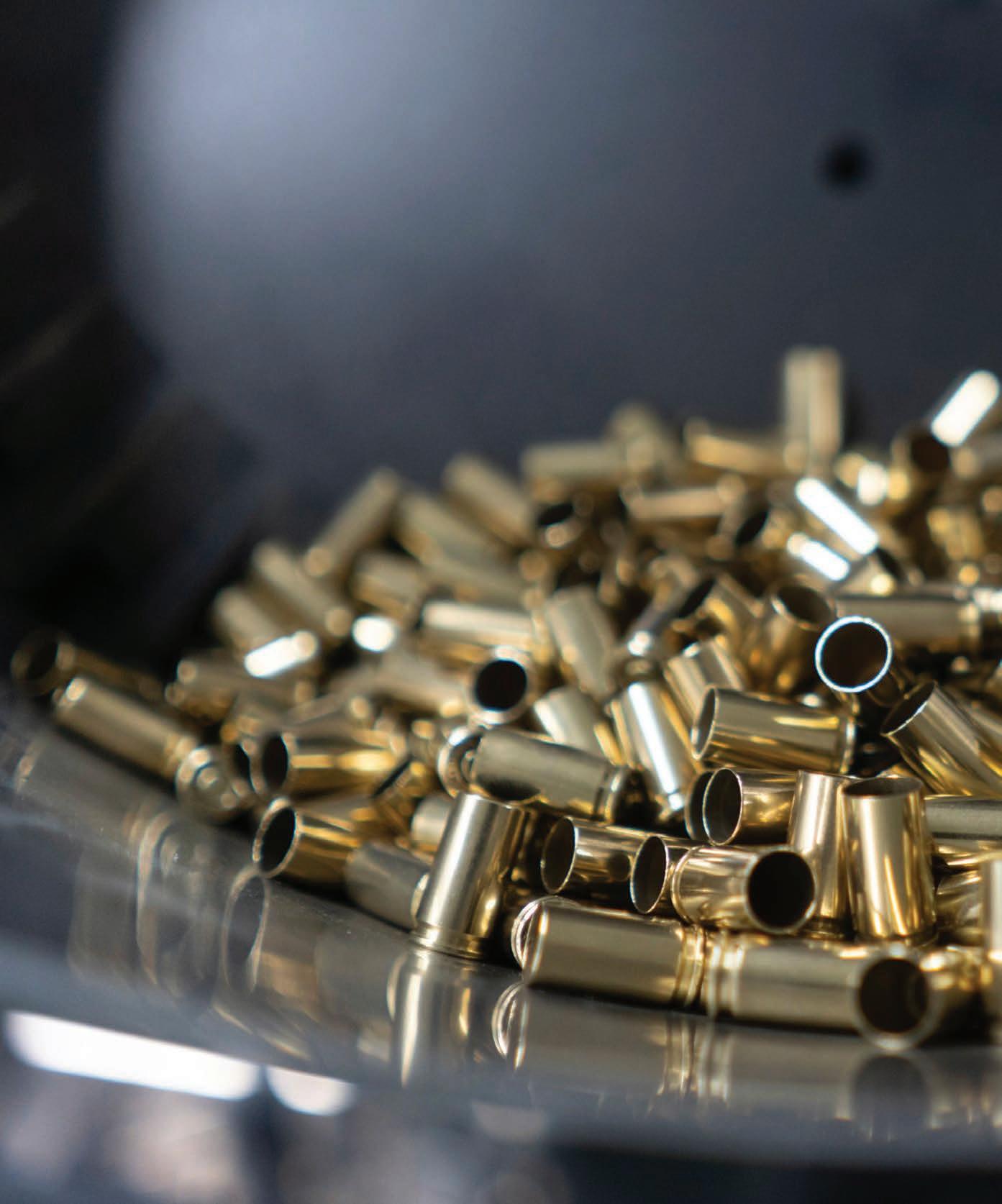
A new ammunition entity is making its mark in America and abroad.

by Slaton L. White
Industrial powerhouse is a muchoverused term, but when considering the world-wide reach of D&M Holding Co., it is a completely apt description of the company’s importance to the ammunition industry. Founded in 2018 by Dan Powers, former president of the SIG Sauer Ammunition division, and James Jones, a defense industry executive, D&M Holding Company, Inc. is an ammunition and energetics engineering group based in Tampa, Florida, and Cabot, Arkansas.
The group specializes in greenfield projects (i.e., a new undertaking that starts from scratch on undeveloped land or without any pre-existing infrastructure or systems), often for companies and countries that have never before been in the ammunition, primer, or propellant business. Global demand for reliable supplies of ammunition, primers, and powder is soaring as a matter national security, and D&M is working nonstop to support the U.S., NATO countries, and other friendly foreign governments.
D&M specializes in design and manufacture of equipment for the ammunition and energetics industry and in the development of turnkey factories for government and commercial customers



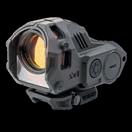









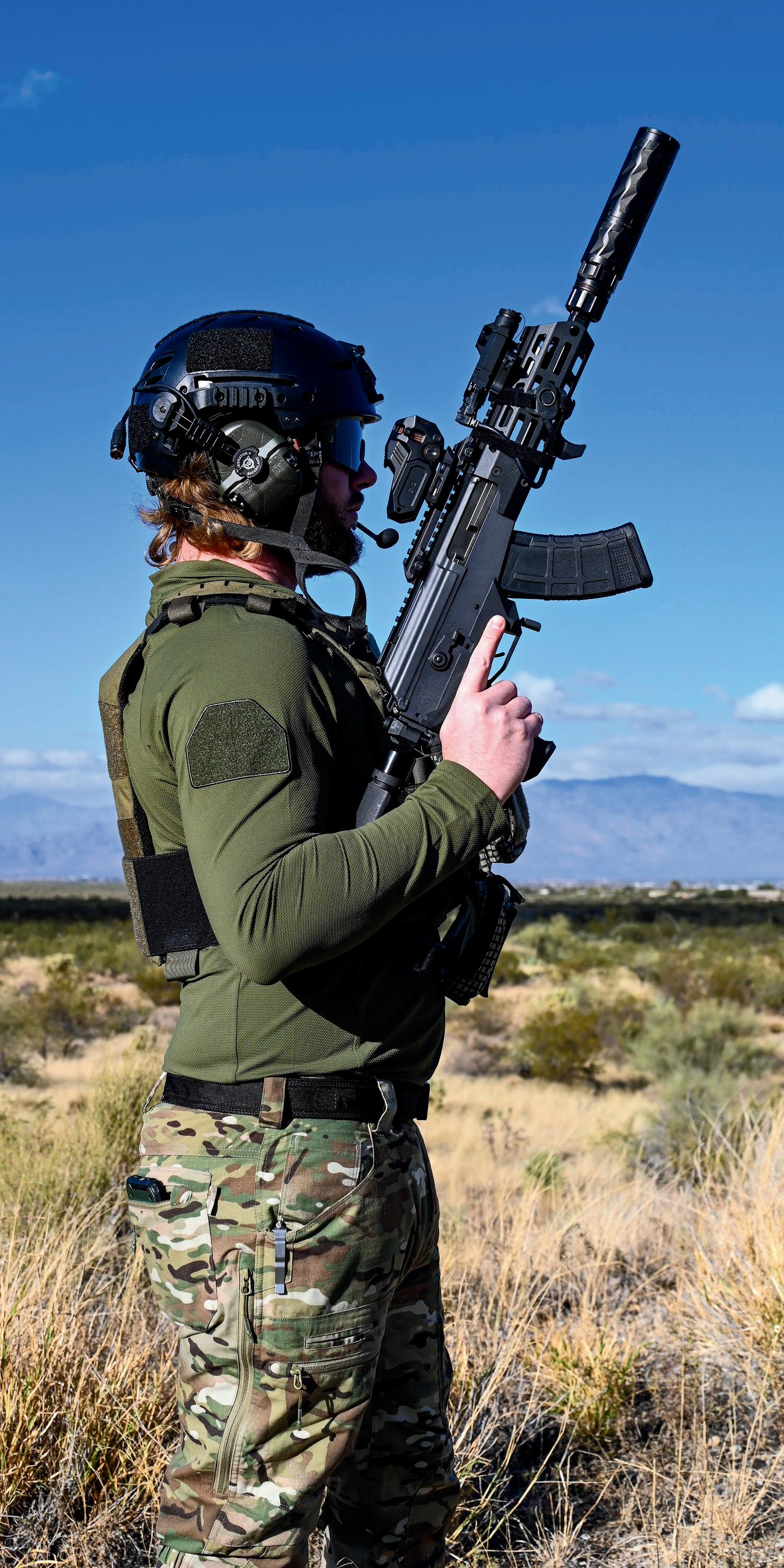











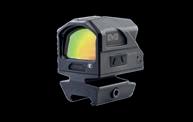





worldwide. D&M’s turnkey factories include solutions for ammunition production, primer production, as well as propellant production for everything from small-caliber ammunition to artillery. D&M services include all aspects of the project from site planning and floor planning to equipment manufacture and installation, as well as the secret sauce, the transfer of know-how. D&M offers intensive training to its clients and 24/7 support.
Under the leadership of president and CEO Dan Powers, along with business partners B.J. Rogers and James Jones, D&M has become a name spoken everywhere as the one company that you can count on to finish a factory and make it run, period.
“D&M is unique in that we are the only company in the industry that offers solutions for all ammunition components, including ammunition factories, primer factories, and propellant factories. We have no competitor that does all three,” Powers says.
Powers and his team have built ammunition factories in the United States and Ukraine with more in the works globally. Some current projects include: Canada (building plants to produce nitrocellulose, single-base and double-base powders, primers, and ammunition components), Ukraine (currently the company has two ammunition projects and a primer project in the works), Eastern
Europe (building a single-base powder plant for a southeastern European country with other projects in the works), and the United States (D&M Holding is expanding its own White River Energetics primer facility in Arkansas to include a propellant factory, laboratories for R&D, and a training center).
Given the success of SIG Sauer’s ammo division, it’s fair to ask why Powers left to strike out on his own. His decision to leave SIG was molded by that very success.
“When I was at SIG Sauer, there were a lot of articles written about me and the SIG ammunition division, and as time passed, I realized there was much more I could do beyond SIG Sauer,” he says. “As a result of this exposure, I started receiving calls from all over the world when word got out that I had left SIG—calls from private companies and governments—asking me to help improve their current ammunition facilities and/or build new ones for them.”
“James Jones and I spent two years traveling all over the world visiting factories, meeting with potential customers, and listening to their needs. It was clear that parts of our industry were underserved and, in some cases, untouched, and we saw an opportunity to fill the gap. This intensive information gathering process, combined with my expe-
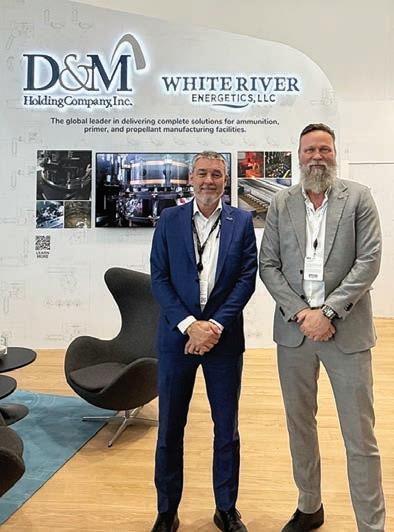


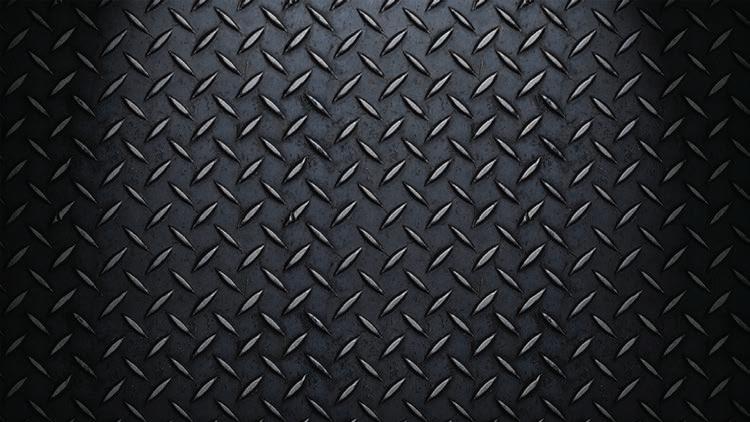



rience at SIG, helped us develop our business model, which continues to guide our innovation and drive our growth.”
“Today the services D&M provides are much needed worldwide, and we are working nonstop to support NATO countries and other friendly foreign governments in their efforts to ensure adequate ammunition supplies for their troops.”
D&M’s first big stand-alone project was building out a multi-million-dollar ammunition facility in Ukraine. D&M won a competitive contract with the government of Ukraine to build the new ammunition factory after the country’s existing factory was lost during the initial Russian invasion of 2014. Ukraine needed a modern factory that could produce multiple calibers, including both NATO and Russian standards, and D&M offered the best solution.
D&M had delivered all the equipment and was in the process of installation when the U.S. government told the team to leave because the invasion was imminent.
“We were on one of the last flights out of Kyiv before Russia invaded on February 24, 2022,” says James Jones, vice president of business development of D&M.
When it was clear the Russian advance to Kyiv was stalled, D&M hired a security firm and began making plans to return to Ukraine. Against U.S. government advice due to safety concerns, Powers and a team of D&M employee volunteers quietly crossed the border and finished commissioning the factory,
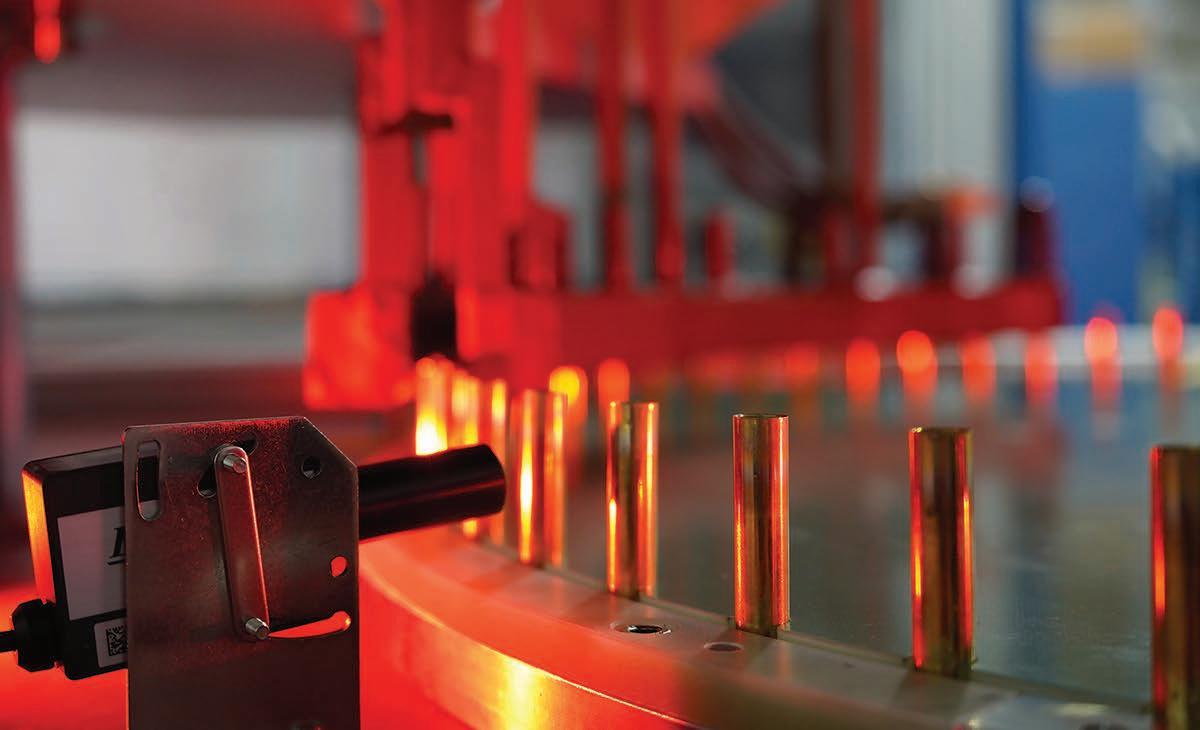
which now produces ammunition 24/7 for the Ukrainian Armed Forces.
The successful completion of the factory put D&M on the map and has been a success story touted by both the governments of Ukraine and the U.S. D&M has since signed agreements for multiple projects in Ukraine, including ammunition and primer production.
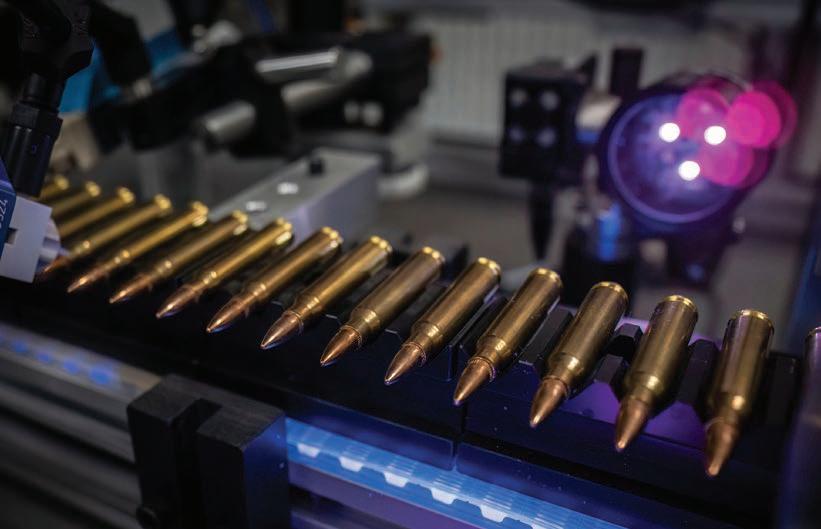
↑ Ammo in a D&M sealing machine. The process is designed to protect cartridges from moisture, chemical exposure, and environmental degradation, thus ensuring dependable performance even in the most demanding conditions.
“D&M’s initial focus was on manufacturing of the machinery, but the COVID pandemic forced us to vertically integrate quickly to meet delivery deadlines. We were forced into making our own tooling because suppliers were so backlogged. D&M could not honor its contracts without faster access to necessary tooling,” says B.J. Rogers, vice president of operations for D&M.
As a result, D&M began making its own parts and tooling, such as carbide dies and punches, to get the job done. That now allows D&M to develop new caliber solutions quickly without the standard 90-day delay in tooling.
This started the progression of D&M adding capabilities and capacity throughout the company, which has included expanding its machine shop and fabrication shop, as well as the acquisition of two additional companies with more acquisitions planned. D&M has also added divisions and specialties over the years. Power’s strong industry relationships could ensure D&M customers had powder, but primers were an issue. So, D&M created White River Energetics, LLC, and started making primers. In the past 18 months, D&M has created an energetics division capable of producing powder plants as well. These plants allow D&M to supply industry partners with the products they need while also providing a training ground for their clients.
D&M built WRE to supply customers with primers and is currently expanding the primer business and building a new powder factory there. “We are expanding our primer facility at White River

↑ White River Energetics (WRE) was created to supply customers with primers. The company is currently undergoing expansion.
Energetics and building a propellant factory there due to increasing demand worldwide. Currently, there is a worldwide shortage of smokeless propellant that is affecting munitions availability globally. This will be the first propellant factory to be built in the United States in over 50 years and is an important step to ensure that D&M customers have a steady source of powder in the years ahead,” Powers says.
WRE currently makes around 800 million primers a year; around 600 million of those go to OEM customer here in the U.S. for small and large caliber pistol and rifle ammunition. Some of these are sold by distributors to dealers.
By mid 2026, primer production will increase to around 1.2 to 1.4 billion primers, with many more going to the consumer. D&M intends to sell direct to box stores and work with select distributors.
Building a primer manufacturing facility takes a lot of time and money and is an inherently dangerous endeavor, as there is always risk when
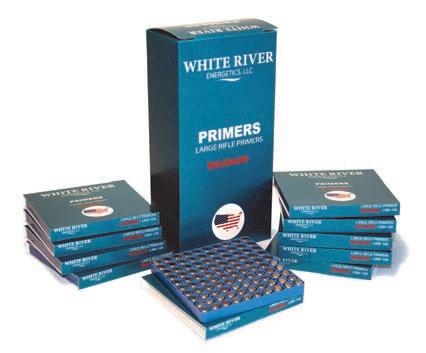
↑ These large rifle primers are packaged and now ready for delivery to customers.
Many innovators work their magic by themselves, but you don’t truly build a winning operation without assembling a team that shares your vision and work ethic. Dan Powers has assembled a team of some of the best and brightest professionals in the industry. His secret? Identifying those in the industry that want to, as he says, “build and teach.”
“Dan has a knack for finding the diamonds in the industry and convincing people to follow him, and we all do,” says vice president Leslie Weber. Powers also gives his team room to achieve whatever goals have been set. “He never asks us to bend to what he wants; he just asks us what we need to succeed, gives it to us, and lets us be creative,” says B. J. Rogers, owner and vice president of operations.
The executive team at D&M includes:
*Dan Powers, owner, president, and CEO of D&M. Powers has been a pioneer for all his 25 years in the ammunition industry. Interestingly, he started his career as an accountant. As luck (or fate) would have it, a friend talked him into going with him to a gun show years ago where he saw a guy selling bags of ammunition. His interest was sparked, and the rest is history. Powers became an early innovator in frangible ammunition as the owner of Precision Ammunition before selling the company to RUAG, the then Swissgovernment-owned defense conglomerate. He stayed on as the president of RUAG USA, managing U.S. operations and consulting on modernization at other RUAG-owned ammunition companies in Europe. After leaving RUAG, Powers developed the business plan for SIG Sauer’s ammunition division and built the division from scratch, starting in Kentucky before moving the factory to Little Rock, Arkansas. The division was based on the coveted SIG V-Crown cartridge, which is Power’s patent and legacy.
* B.J. Rogers, owner and vice president of operations. Rogers spent his 15 years in the ammunition industry at Remington, where he was a ballistics engineer before becoming Remington’s centerfire engineering manager and later at SIG Sauer as the ammunition division plant manager and as director of operations.
* James Jones, owner and vice president of business development. Jones is a 20-year defense industry executive. Much of his career was spent with Goldbelt Wolf, LLC, a defense contracting company that represented U.S. defense companies and ammunition manufacturers in international contracts. Jones has represented nearly every major U.S. defense company and has worked in over 50 countries.
* Don Pile, senior chemist. Pile spent 22 years at Remington in various positions as an explosives engineer and research chemist and holds multiple primer technology patents, especially for military primers. Powers recruited him to SIG Sauer, where he worked as chief chemist for several years before Powers again recruited him to join D&M Holding Company in 2020. Pile is one of the best-known primer chemists in the world.
* Jason Lawhon, vice president of energetics. Lawhon spent 32 years at St. Marks Powder, the largest propellant manufacturer in the world, where he held many positions as a chemical engineer and in business development. He is one of the few people in the world with experience in so many aspects of the powder business. When Lawhon decided to retire from St. Marks, Powers convinced him to join D&M, travel the world, and help to reimagine and reinvent legacy propellant systems.
* Leslie Weber, vice president. After receiving advanced degrees in engineering from Massachusetts Institute of Technology, Weber spent five years with Raytheon Missile Systems before joining Alliant Techsystems Inc. (ATK). She was with ATK during the spinoff of the sporting group division into Vista Outdoor, where she spent 11 years, first overseeing CCI’s primer production, then overseeing Federal Premium’s centerfire pistol ammunition.
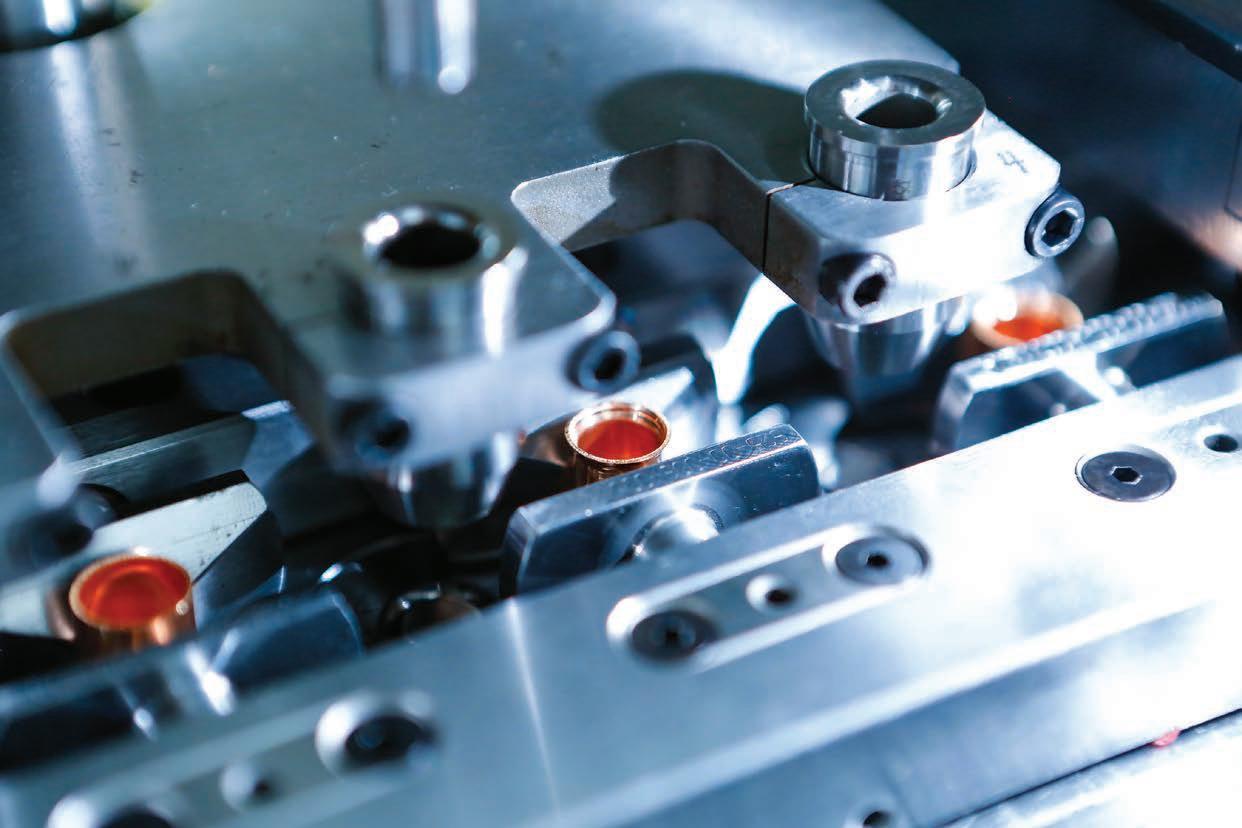
↑ D&M bullet press in operation. D&M began making its own parts and tooling, such as carbide dies and punches, to meet customer demand. That now allows D&M to develop new caliber solutions quickly without the standard 90-day delay in tooling.
handling explosive materials. But Powers says that the White River Energetics facility has been designed to greatly reduce this side of ammo production.
“We wanted to make it the most automated and safest primer facility in the world on the chemistry side. All reactions happen without a person in the room. We can manage the dangerous part of the process in a control center by the way we have designed our flow meters. It’s all done by touch screen, and we design our own software to open and close those valves. Our propellant will be made differently, but the process is still very safe. We will be incorporating the newest and safest innovations we can use in a powder facility.”
Powers credits his SIG Sauer experience as a vital component of the success of his present venture. “Ron Cohen (president and CEO of SIG Sauer) gave me a blank piece of paper and allowed me free reign,” Powers says. “My team and I could decide how to be most efficient in rolling out an entirely new ammunition division from the ground up, which included everything from the layout of the plant and types of equipment to the manufacturing processes and procedures. We learned to be nimble and react quickly to ever-changing market
conditions, and this experience was invaluable. The association with SIG Sauer and positive media attention my work there brought has opened a lot of doors for me.”
And now he is opening doors for others. Currently, D&M employs close to 250 employees, and the company intends to add another 100 with the WRE primer plant expansion and the addition of propellant manufacturing. No doubt more hires will be forthcoming as D&M is currently building propellant, primer, and ammunition facilities all
over the world. In addition, D&M is engaging with the U.S. government on multiple projects and with other friendly foreign governments.
Powers fully understands that D&M’s success is not only due to its ability to offer turnkey services for its customers, but to also offer that “secret sauce”—the transfer of hard-to-obtain know-how. But something else is at work as well. It’s his talent for attracting individuals who share his passion for building an enterprise that reflects the best that American manufacturing has to offer.
Palmetto State Armory-AAC (American Ammunition Company), is based in Columbia, South Carolina. D&M built AAC’s primer and ammunition factory completed in 2024. It currently manufactures 350 to 450 million rounds of pistol and rifle ammo annually, which are sold direct to consumer. This is the largest new ammo factory in the United States. The faculty consists of a 300,000-square foot building, 150,000 square feet of which is dedicated to making ammo. There is room for expansion.
Grind Hard Ammunition, based in Stuart, Florida, makes 80 million specialty rounds per year, all of which are funneled directly into the consumer market. D&M built the facility and is currently finishing building a primer line for the company. Longhorn Ammunition, based in Florence, Texas, is owned by Staccato firearms. The facility is dedicated to 9mm ammunition. D&M built the ammo line, which was completed in 2023.














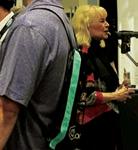







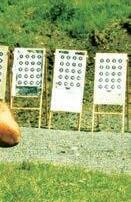

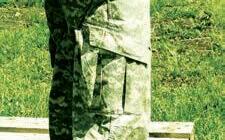





















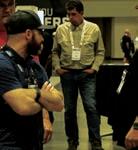






In 1925 it was only new. Hunters made it a star.
A century later it still is.
by Wayne van Zwoll
He got it from a gun collector who must have known the re-stocked Mauser was worth more than the kid had to trade. It was the kid’s lucky day.
Skim-ice on Spoon Creek blinked moonlight below Oregon’s Ochoco hills. Dawn’s preface spun out slowly as he climbed, air sharp with juniper scent. He shivered for an hour on top. The buck appeared as sunlight fired the tips of tall pines. The crosswire danced violently, but at the blast the deer fell.
It was my first hunt with the .270. The cartridge was half-way to its centennial. Now it seems as popular as it was then.
Winchester’s choice of a .277-diameter bullet still mystifies. In 1925 a more logical sub-.30 pick for hunting would have been .284 (7mm). Paul Mauser’s 7x57, in 1892 one of the world’s first smokeless cartridges, had legions of fans. It had impressed Americans who had faced its fire in Cuba in the Spanish-American War. Brits dubbed it the .275 Rigby. Germany’s 7x64 Brenneke, unveiled in 1917, had more oomph, as did Holland and Holland’s .275 Magnum.

Various 6.5mm (.264) cartridges had big followings, too. Before the Great War, 6.5s had armed many infantries. The 6.5x54 MannlicherSchoenauer, initially a Greek military round, appealed to veteran and discriminating hunters such as Africa’s W.D.M Bell and F.C. Selous. In trim M-S carbines it excelled on mountain hunts. The similar 6.5x55 Swedish earned its celebrity killing moose and in 300-meter matches.
Winchester may have wished a distinctive new number, one with no link to the carnage of WWI. Whatever the thinking in New Haven, the .270 was a brilliant blend of tradition and innovation. Essentially a necked-down .30-06, the case had the same 17½-degree shoulder. Its .473 head fit the bolt heads of the day’s most popular repeating rifles. Actions that fed .30-06 cartridges fed .270s. Designed for sturdy turnbolts, the .270 was loaded to slightly stiffer pressures than the ‘06. Its 130-grain “pointed softpoint expanding” bullet left the muzzle at a claimed 3,160 fps—scorching speed for the day.
That bullet was later hailed as the first to satisfactorily and reliably upset after high-speed impact on game. A tin cone shielded its lead tip from battering in the magazine. It differed from similar 150- and 180-grain .30-06 bullets in that its gilding metal (90 percent copper, 10 percent zinc) jacket was thick at the base, to prevent fragmentation and ensure deep penetration. Early jackets were coated with a tin wash, which added a silver
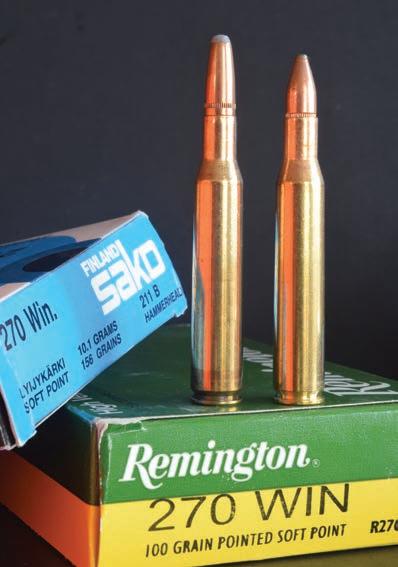
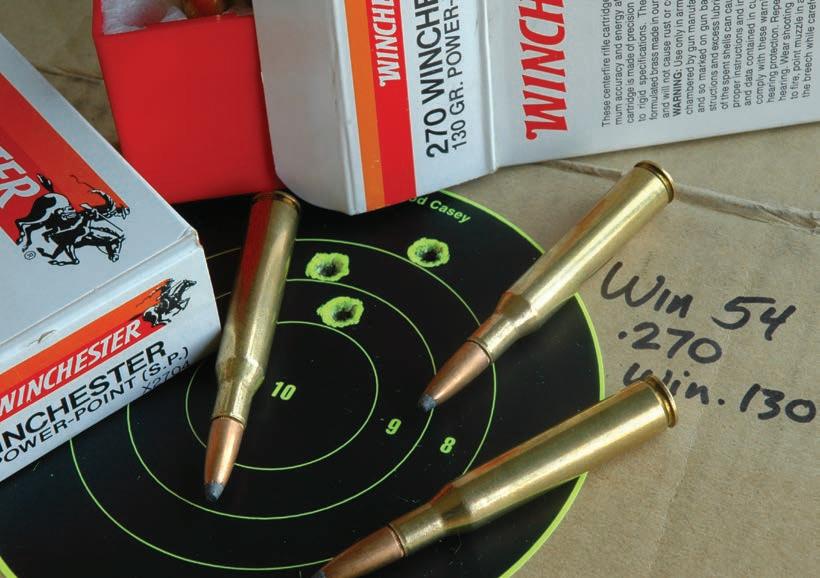
54, in
group recently.
hue, per the cupro-nickel jackets of early military bullets. That coating, to nix metal fouling, had gone away when the Army found some .30-06 bullets “cold-soldered” to the cases.
As jobbers and dealers liked to order all types of cartridges from one source, it wasn’t long before Remington announced .270 ammunition, first with a blunt 130-grain “mushroom” bullet. Western, not yet a Winchester partner, developed a 130-grain open-point bullet with a “Lubaloy” jacket.
Despite its ballistic moxie, the .270 wasn’t an immediate hit. Many hunters teethed on 19thcentury lever rifles and their cartridges thought the .270’s bullets small. Oddly enough, the shooting press gave the .270 little support. Not until its third year did American Rifleman run a .270 feature. Jack O’Connor, legendary Shooting Editor of Outdoor Life, claimed his predecessor at the magazine never wrote about the cartridge.
Also working against the .270 were surplus 1903 Springfields peddled for a pittance to members of the National Rifle Association. For awhile almost anyone could buy a spanking new Springfield with a star-gauged barrel, the fine N.R.A. sporter stock, and a Lyman 48 receiver sight for $40.
Some hunters who took the .270 hunting whined that its bullets landed too violently, ruining too much meat. But when Winchester responded with a 150-grain round-nose throttled to 2,770 fps, nobody bought it. Improved bullet designs, the killing effect of high velocity, and the imperative of flat flight for long-range hits soon buried complaints of pulped venison.
In essence you could say the .270 appeared a decade too early. The Great Depression certainly didn’t help, as it destroyed the buying power of
hunters everywhere. Also a factor—lever-action rifles with metallic sights were still esteemed by woodland deer hunters. Optical sights had yet to become practical. Barrel-mounted scopes in adjustable mounts were fragile, cumbersome, and unreliable. All fogged. In 1925 Bill Weaver’s affordable (but still primitive) 330 was five years away. The rifle that made the the .270’s reputation, Winchester’s classic Model 70, wouldn’t arrive until 1937.
The .270 has prospered in Winchester’s flagship bolt gun. Of 581,471 Model 70s built before the rifle’s lamented 1963 overhaul, 122,323 were .270s. Remington picked up the .270 for its new Model 721 in 1948, and as a charter offering for the 700 in 1962. Savage has offered the .270 in its Model 110 since it appeared in 1958. Myriad foreign-built bolt-actions have been barreled to .270. Remington has listed slide-actions and autoloaders, Browning its BLR lever rifle and BAR auto. Ruger and Browning have produced dropping-block single-shots.
Hunters throughout the west have found the .270 deadly on elk as well as on mule deer— though evidently not right away. A 1939 survey of 2,225 elk hunters in Washington state failed to turn up a single .270 in the responses, 60 percent of which named the .30-30, .30-40 Krag, and .30-06. No doubt the Depression weighed heavily on hunters who might otherwise have sprung for a new Model 70 in .270.
Times change. In my surveys of thousands of elk hunters in the 1990s, the .30-06 and the 7mm Remington Magnum (introduced in 1962) topped popularity charts. The .270 vied with Winchester’s .300 Magnum for third place.
Fred Mercer carried a .270 on a late 1958 hunt in Montana’s Gravelly range. By lantern’s light he ate breakfast, then tossed a hatchet, rope, matches, candles, and a flashlight into an old
Army rucksack with lunch and a Thermos of coffee. Climbing, he soon cut elk tracks in new snow. One set was very big. He stayed on the prints after a twist of wind sent the animals off. They led ever higher. Hours later, Fred concluded the herd was bound for a saddle. Betting his efforts on that hunch, he pushed himself faster on a direct route toward it. Wet with sweat now cooling, and wearied by the climb, he paused before cresting to throttle his pulse. When he peeked over, Winchester to cheek, his breath caught. The most magnificent elk Fred had ever seen was grazing 50 yards away. Two shots brought it down. By Boone and Crockett measure, the bull’s antlers were a Montana record.
Dale Leonard was easing through Colorado timber on a snowy day in 1961 when he spied an elk peering from under conifer limbs 50 yards away. He fired. Huge antlers came clear as the bull fell. Fifteen years later, hunting deer, Dale bumped a buck with an eye-popping rack. When it paused, his shot was on the mark. The antlers spanned 32 inches. Dale remains one of few Colorado hunters to put both mule deer and elk on the all-time B&C records. He did it with his .270.
A hunting client and I once followed the bellows of a rutting elk through Douglas firs to an aspen draw too steep and thick to probe effectively. With less than an hour until dusk, we posted a short rifle shot from the draw’s base. Light ebbed. I was about to call the contest when the elk stepped out. At the impact of my
The following five loads span the bullet-weight range most hunters choose to feed their .270 rifles. Nosler 130-grain AccuBond, Federal 136-grain Terminal Ascent, Winchester 140-grain AccuBond, Hornady 145-grain ELD-X, and Remington 150-grain Speer Impact. Smart retailers will make sure they carry a full selection.
hunter’s Hornady, the great animal reared up, then toppled backward, planting its enormous antlers in the earth, dead instantly.
The .270 punches above its weight on elk, moose, and other big creatures partly because it’s easy to fire without flinching. Well-placed hits result. A Colorado wildlife agent charged with culling elk used a .270 for the task. He was able to shoot repeatedly without discomfort, ensuring accuracy and clean kills. In an 8-pound rifle, 140-grain loads clocking 3,000 fps bump you with about 17 foot-pounds of recoil—same as 150s at 2,900 fps from the .30-06 and 180s at 2,600 fps from a .308. The standard 180-grain .30-06 load has more bite: 20 foot-pounds. Bullets for the .270 have ranged in weight from 100 to 180 grains, though most hunters use 130- to 150-grain bullets, the 130 most popular by a wide margin. There were no 140-grain .270 bullets in my youth, but now that weight has gained a following. Remington still offers a
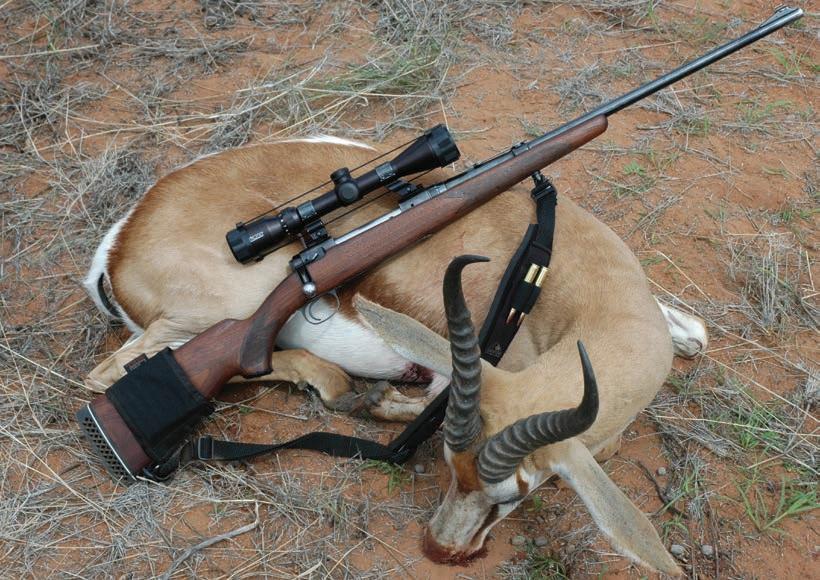
↑ Since its 1958 debut, Savage’s 110 came in .270. This early rifle performed well on Namibia’s desert.
100-grain Pointed Core-Lokt load at 3,320 fps. Low sectional density (ratio of a bullet’s weight in pounds to the square of its diameter in inches), handicaps it on big game. Nosler makes an excellent semi-spitzer 160-grain Partition bullet for use on tough animals. From the mid-1950s well into the 1970s, Speer listed a 170-grain round-nose. A 180-grain Barnes Original roundnose was dropped in 1979. By the way, the sectional density of this jacketed softpoint was .335, essentially equal to the .331 SD of the 220grain round-nose once popular in the .30-06. At iron-sight ranges, such bullets were deadly on the biggest North American beasts.
Heavy bullets for shooting far—say, with Winchester’s 6.8 Western (.270-caliber) cartridge— beg steeper rifling because these sleek, pointed missiles are longer than the blunt bullets of yesteryear.
The .270 gradually gained international acclaim, and not just in bolt rifles. In August 1967, Jack O’Connor, along with his wife Eleanor and son Bradford, chartered an airplane into a lake in the Telegraph Creek district of British Columbia to hunt Stone’s sheep. There they met two hunters awaiting a flight out. One, from Austria, had been after a ram with an over/under rifle in .270. His back-up was a combination gun of like design, a 20-gauge shotgun barrel atop a .270 rifle barrel. His friend, an Italian, carried a side-by-side double in .270. Both rifles wore 4X scopes. This battery “was about as offbeat as any I have seen,” wrote O’Connor, “but it [showed] the .270 has become an international mountain cartridge.”
Late in life, the famous gun scribe claimed to have shot “36 species of what passes for big game” with a .270. These included a dozen moose and two grizzlies. “I cannot imagine a better sheep rifle than a light .270 and with it I have shot around 30 rams, of four North American and four Old World species….”
But while privileged to hunt in all the world’s great game fields, Jack never lost his fondness for chasing the delicate, wary, quick-footed whitetails of the desert southwest. His sons started deer hunting there as well. He once wrote of a Sonoran buck that, taking a bullet from Jerry’s .270, “turned clear over in the air and hit like a bag of potatoes.”
“Whoopee!” yelped their guide. “One shot and the buck doesn’t move! How do you call it?”
“The .270,” said Jack.
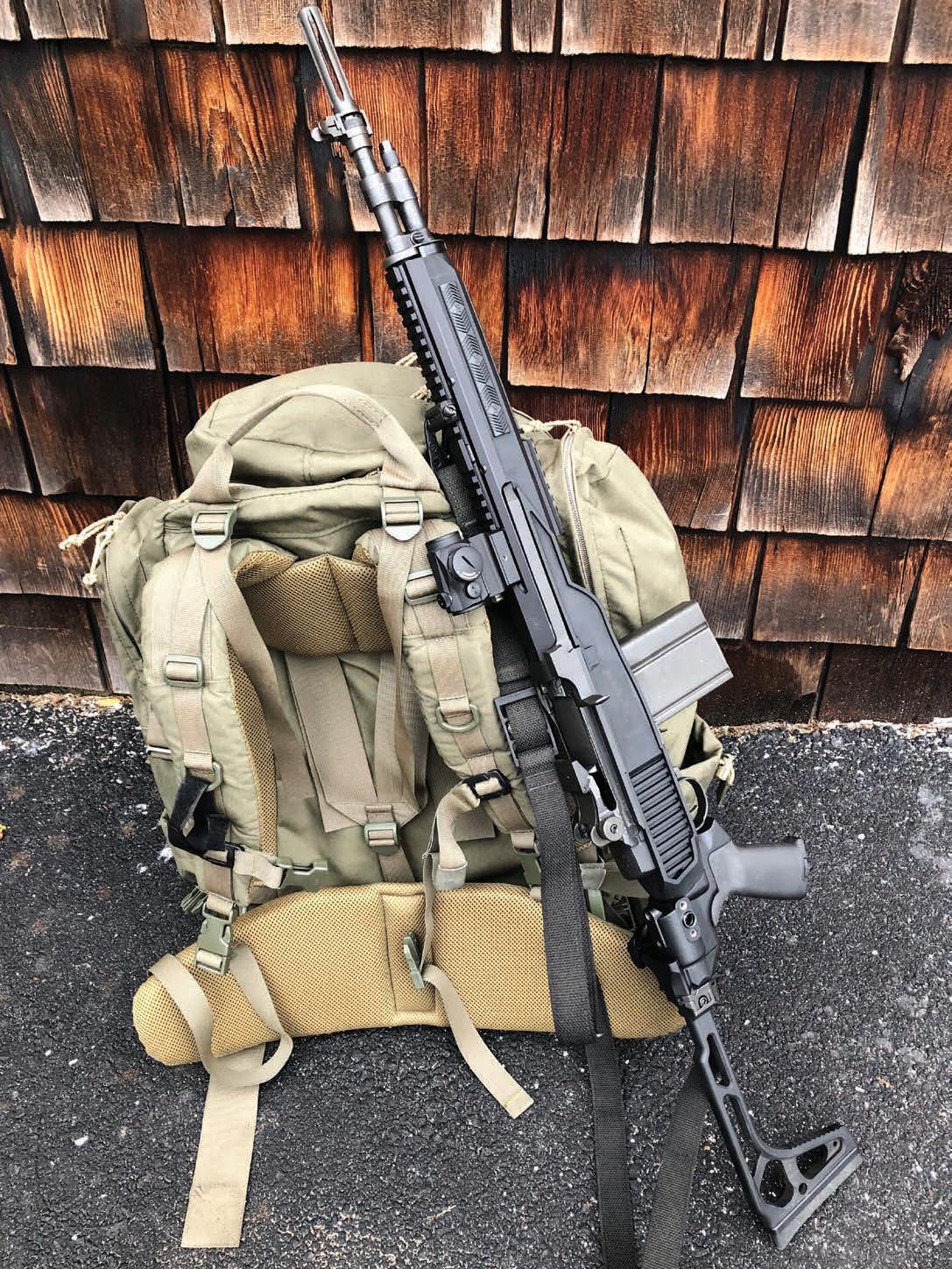
by Guy J. Sagi
An unusual combination of reliability, performance, and heritage account for the enduring popularity of the Garand platform.

Aftermarket M14 folding stock from Delta Chassis.
The dog days of summer are a frustrating period in which traffic often drops at gun counters. It’s the collision of soaring mercury, mosquitos on patrol, family vacations, and a vacuum of political rhetoric to blame. There are other times, however, when traffic through retailer doors also slows. Sales, rebates, promotions, and special events are solutions to the recurring challenge but, when it comes to attracting a steady flow of customers year-round, there’s a supplementary option. Add products and services that cater to enthusiasts with a passion for a particular platform. Word will spread organically on firing lines, in forums, blogs, and social media. When that special item is in inventory, they brave buffalo blizzards for a glimpse.
Even a single specimen on a shelf attracts avid fans. It’s undeniable magnetism can make even modest investments potentially profitable. The increasing popularity of the M1A/M14 demonstrates how rifles with indelible history are growing in popularity and defying seasonal swings.
Recently a pair of retailers told SHOT Business of customer interest in the M1 Garand. The Outdoorsman of Santa Fe, in Santa Fe, New Mexico, is selling used M1 Garands, and Jeff McIntyre, owner of Nebraska Gun, in Lincoln, Nebraska, said, “Anything in the M1 Garand category is hot right now. These rifles have risen to an all-time-high demand.”
The original Springfield Armory is where many legendary firearms—including the M1 Garand and M14—were designed and produced. The facility, established in 1777, closed in 1968. It’s now a National Historic Site in Springfield, Massachusetts, a designation that scarcely reflects the role it played in our independence and national defense.
Delta Chassis offers an aftermarket polymer stock system for the M1A/M14.
The name and legacy were destined for footnote status until 1974, when the Reese family returned the label to prominence by establishing the Springfield Armory as we know it today. Its Hellcats, Echelons, SA-35s, and others are hot sellers, but the company grew on a rifle with a deep history.

“The M1A, since its launch more than half a century ago, has consistently been a popular offering from Springfield Armory,” says Mike Humphries, media relations manager at Springfield Armory. “As the company’s foundational product, it is one that is often most associated with the brand. In fact, the demand for the rifle (and its many variants) has been consistently strong over the numerous decades it has been offered.”
When asked if sales suffer any time throughout the year, he said, “Demand for the M1A in its numerous forms is consistently strong, and that is one of the many reasons it has been around since the launch of the company.”
Other firms manufacture the rifles, a few used models trickle in to retailers here and there, and the Civilian Marksmanship Program occasionally offers surplus M1 Garands. Springfield Armory undeniably dominates the factory-fresh market, however, offering a modernized line that includes the M1A Loaded, others wearing adjustable Archangel stocks, the popular SOCOM 16 model, and more.
The look is a conversation starter at the counter, but there’s more to the allure than just the guns. Accessory sales steadily grow and seem to defy seasonal slumps.
Bill Bovensiep, Delta 14 CEO, patented his first aftermarket polymer stock system for the M1A/M14 in 2015. There’s a reason he’s passionate about the platform. His father carried one in 1968 during the height of Vietnam’s Tet Offensive.
Today Delta 14 offers clever American-made designs that are modular, allowing owners to customize their setup. Bovensiep proudly reports sales are up 500 percent since 2017 and demand is steady year-round.
Enthusiasts aren’t your typical buyer, either. “With the M1A there’s a nostalgic rifle,” he says. “If they can afford it, they can afford to modify it. Most of my sales do not come from the base chassis.” DELTA14CHASSIS.COM
Other companies offer aftermarket stocks for the platform. Upgrades include all-metal, fully adjustable models, high-speed versions with M-LOK galore, and classic-profiled synthetics. Modern manufacturing techniques contribute to the design’s popularity and demand for aftermarket parts. ShootingSight, for example, makes National Match
sights, but the company’s replacement triggers illustrate the upgrade trend.
“I am making new triggers from billet steel, so I am able to improve the design to take advantage of CNC capabilities that did not exist in 1937, when John Garand developed the trigger,” says Art Neergaard, owner of ShootingSight. “The triggers are adjustable, both for pull weight to achieve the NRA minimum of a 41⁄2-pound pull, and for secondstage sear engagement, so creep is virtually eliminated. Sear geometry is revised for smoother pull, and NiB coating is added, allowing lube-free operation in dusty environments. SHOOTINGSIGHT.COM
His improvements didn’t stop there, though his mention of NRA match standards brings up another reason sales are increasing.
Local and national matches for the platform have increased dramatically. Interestingly, Hornady recognized the growing pursuit decades ago.
“Hornady has been loading a match line of .3006 ammo for the M1 Garand since the late 1990s,” says, Seth Swerczek, Hornady’s marketing communications manager. “With the popularity and historical significance of the M1 Garand rifle, and the CMP matches held at Camp Perry, having
factory-loaded, match-accurate ammunition is a natural fit. Having a factory load that is purpose built for the M1 Garand provides the shooter and competitor with a reliable load to keep these historic rifles out on the range.”
Hornady.com
The story begins with the M1 Garand, which Gen. George S. Patton called “The best battle implement ever devised.” John Cantius Garand designed the rifle while working at the original Springfield Armory. His first model appeared in 1924, chambered in the 7mm the U.S. military hoped would replace the .30-06 Sprg. cartridge.
Testing of the gas-operated semi-automatic began the next year, along with other rifles vying to replace the then-issued bolt-action M1903 Springfield rifle. Trial results were inconclusive, though officials asked Garand to design a .30-caliber version of his gun for further evaluation.
It appeared in 1930, but the decision makers still weren’t convinced it was the best choice. Meanwhile, things were heating up in Europe and the United States was sitting on a stockpile of .30-06 Sprg. cartridges.
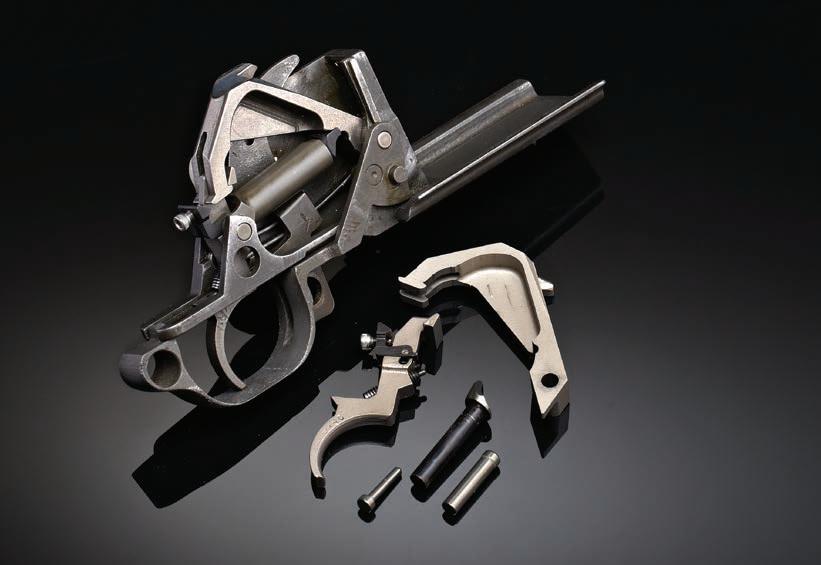
ShootingSights offers adjustable billet-steel triggers that virtually eliminate creep.
























In 1932 Army Chief of Staff Gen. Douglas MacArthur issued a logistically wise order. The semi-automatic selected would chamber the same .30-caliber ammo the U.S. Army had in inventory. Testing continued, and on Jan. 9, 1936, officials announced the M1 Garand was the new standardissue rifle. Full fielding by the U.S. Army was complete in 1941 and the Marine Corps and Navy followed.
The M1 Garand’s performance during World War II is legendary. Whether in the forests of Europe, deserts of Africa, or sands of the Pacific, it delivered and quickly gained the confidence of combat troops.
The method of operation taps gas from the barrel, which pushes a rod—beneath the barrel—back into the receiver. That unlocks the bolt, extracting and ejecting spent brass in the process. After full rearward travel, a spring forces the system forward, picks up a fresh round along the way and, finally, locks the rifle back into battery.
The M1 Garand’s eight-round magazine was not removable. To speed reloads in combat, enbloc clips were employed, which ejected above the rifle with a characteristic “ping” sound when empty. The U.S. adopted the .308 Win. cartridge in 1954, which in slightly different form became 7.62 NATO, signaling the approaching end to the M1 Garand’s reign.

of the M16A1 came in 1969. By 1980 the military’s M14s were in armories.
There they stayed for more than two decades, until the Global War on Terrorism spread into the mountains of Afghanistan. Brought out of mothballs and retrofitted with modern furniture and optics, they did yeoman’s duty in the hands of designated marksmen at distances that defied 5.56 NATO-chambered M4s.
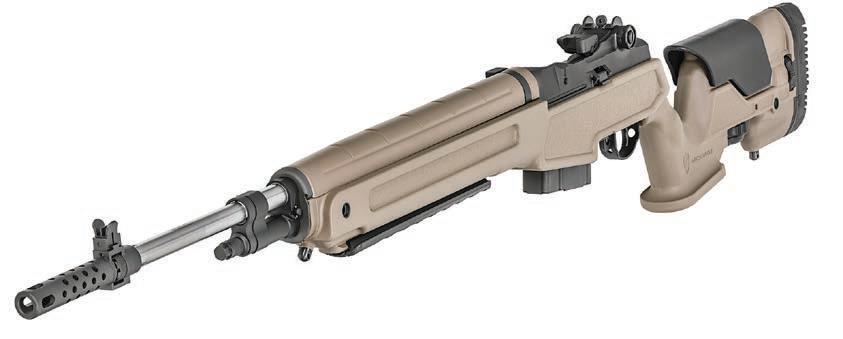
Engineers at Springfield Armory, including Garand, were already working on a .308 Win.chambered successor based on the M1 by then. In 1957 the M14 that resulted would be formally adopted by the U.S. military. Improvements included making it a short-stroke piston (still located under the barrel) and the addition of a bolt roller to reduce friction. It also had a detachable 20-round box magazine, straight op rod, and measured shorter than the M1 Garand. It also weighed less.
U.S. military fielding didn’t begin until 1960, but by then things were heating up in Southeast Asia. Officials were already considering ArmaLite’s AR-15 platform as a replacement, and four years later those early iterations of the M16 were in limited combat. Official adoption
The fight-stopping power of the .308 Win./7.62 NATO cartridge and the M14’s ability to stretch the distance piqued interest. Demand grew, yet again, and remains unwavering.
It’s an interesting development for a design that, in basic form, is roughly a century old. It somehow bridges generation gaps with an enviable, timeless dexterity. Fathers of baby boomers carried one form in World War II and Korea, and at least two more generations carried the gun’s direct descendant. It’s an unusual combination of reliability, performance, and heritage. Add the number of young adults who recognize that “ping” when an en-bloc clip exits an M1 Garand—from their video games—and don’t be surprised if a crowd gathers when you put one or two on display.

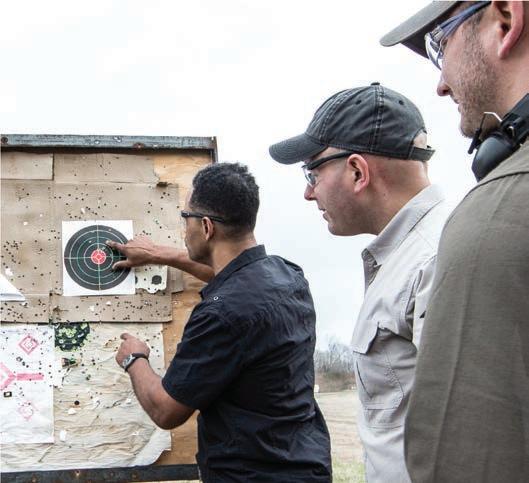
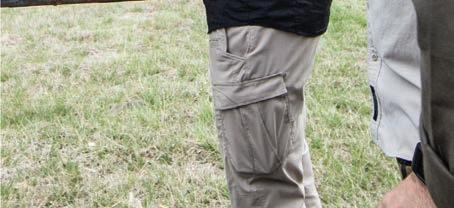
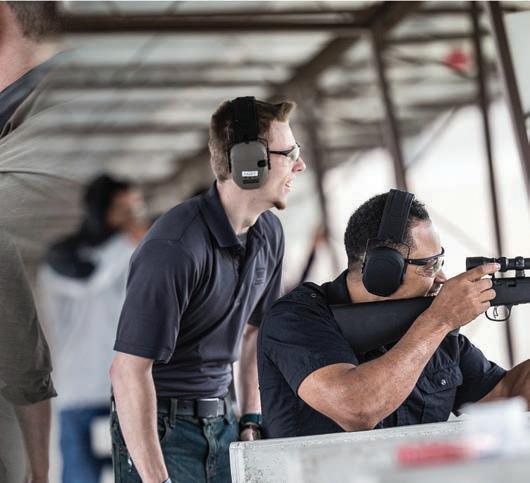










by Slaton L. White
Showcase is a dedicated two-day event for OEM third-party suppliers to present their products and services to shooting, hunting, and outdoor manufacturers. More than 600 OEM suppliers meet with manufacturers from around the world over to address needs in materials, machinery, and software. Logistics is also a key element, as it helps streamline the industry supply chain.
“This two-day event begins on Monday and overlaps with the SHOT Show on Tuesday to provide engineering, manufacturing, purchasing,
and quality control professionals with an opportunity to source potential partners under one roof in a time- and cost-efficient venue,” says Chris Dolnack, NSSF Senior Vice President and Chief Customer Officer. “To further connect industry manufacturers and OEM suppliers, NSSF has partnered with The Outdoor Wire to develop the monthly email newsletter, The Supplier Wire. All Supplier Showcase exhibitors are automatically enrolled in the program to help them promote their goods and services year around.”
The Supplier Showcase debuted at SHOT Show 2017, and right from the start those that attended knew NSSF was onto something.
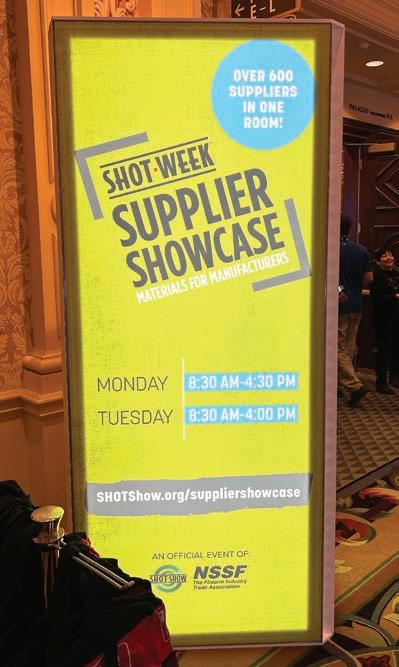
Summit Steel Corporation, based in Chagrin Falls, Ohio, was just one of the many companies that exhibited in 2025. Summit Steel Corporation is an IS 9001-2015 processor and stocking distributor of SBQ (special bar quality) cold finished and hot rolled carbon and alloy steel bar in a variety of shapes (for instance, round and hexagon), including Gun Barrel Quality steels in carbon, alloy, and stainless steel, all known for their dimensional accuracy and precision.
“There are two main benefits for us having a booth at the Supplier Showcase of the SHOT Show,” says Ross Bushman, CEO of Summit
Steel. “First of all, exposure. As one of the largest U.S. distributors of Gun Barrel Quality steels, you will rarely find so many prospects in one place. Secondly, many of our customers are there, either as attendees or with their own display booth. This affords us the opportunity to meet with them personally, and as anyone in sales knows, there is nothing quite like ‘pressing the flesh.’”
Supplier Showcase arose out of need to carve out more exhibitor space at SHOT Show. As the the industry’s premier trade event, bringing nearly 55,000 industry professionals from 115 countries together for what is now called SHOT Week, demand for exhibit space has steadily increased.
“We had to prioritize prospective exhibitors by product categories,” says Dolnack. “Core hunting and shooting products were designated tier one because those are the products that drive traffic at retail. General hunting and shooting products were designated tier two because accessory products are also key to retailers. OEM manufacturers and service providers fell into tier three, and we soon had a backlog of suppliers that wanted access to the shooting, hunting, and outdoor markets.”
“Jeff Pressman, who is CEO of our show management partner ConvExx in Las Vegas, suggested that we should consider a separate, concurrent event for suppliers, much like the Specialty Equipment Manufacturers Association does with its highly successful SEMA Show. ConvExx was SEMA’s show management partner prior to agreeing to partnering with NSSF on SHOT Show.”
NSSF took the idea and ran with it. A quick look at attendance numbers shows just how much the idea has resonated with its core audience. In 2017, the first year of the Supplier Showcase, there were 264 exhibitors. Each year, more suppliers have signed on, and last year the two-day event had 601 exhibitors. As they say, this is an event with legs.
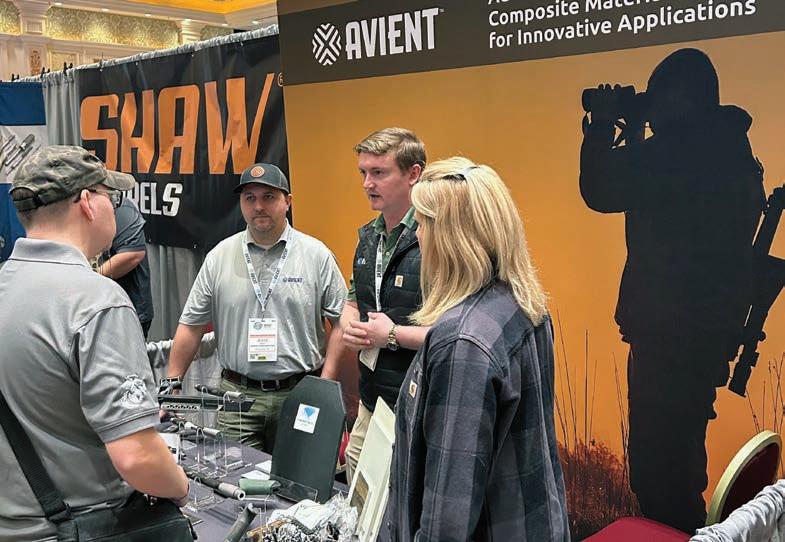
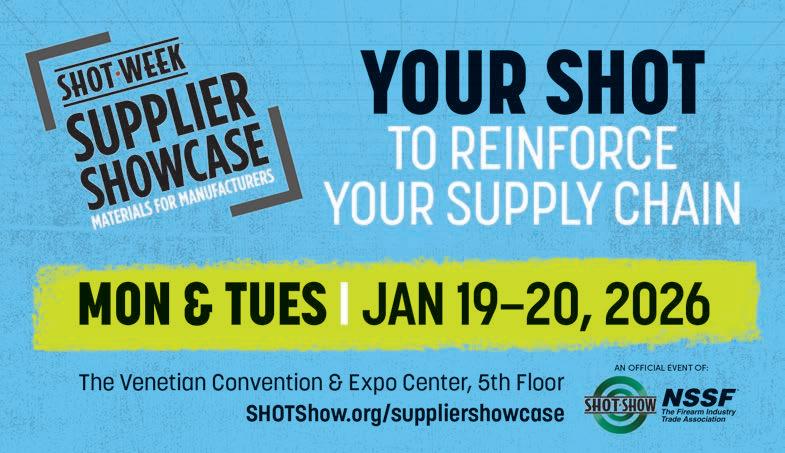
The energy, engagement and exposure we get here made the decision to come back next year an easy one! — Arcus Hunting’s Teri Quinn
If you’re serious about elevating your brand and strengthening the entire archery category, this is the place to be. - Pure Archery Group’s Todd Snader




EXHIBITORS TO SEE AT THE PAVILION DON’T TAKE OUR WORD, TAKE THEIRS.




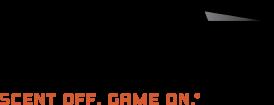




The SHOT Show was the only trade show we attended in 2025. We’ll definitely be back in 2026 at the Archery Business & Hunting Retailer Pavilion. — Moultrie’s Mark Olis
The continued success & yearover-year growth of the Archery Business and Hunting Retailer Pavilion makes this a natural fit for us, allowing us an opportunity to promote our entire line of products. - LimbSaver’s Alan Lotton

















Show organizers have not lost sight of the opportunity for outdoor, hunting and shooting sports brands. — Muck Boots’ Chris Lorenzo





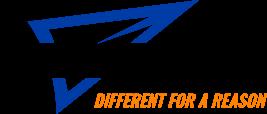




NSSF welcomes Hunting Retailer magazine as co-sponsor of SHOT Show’s Archery Business & Hunting Retailer Pavilion, which will showcase everything from bows and treestands to deer scents and trail cameras.
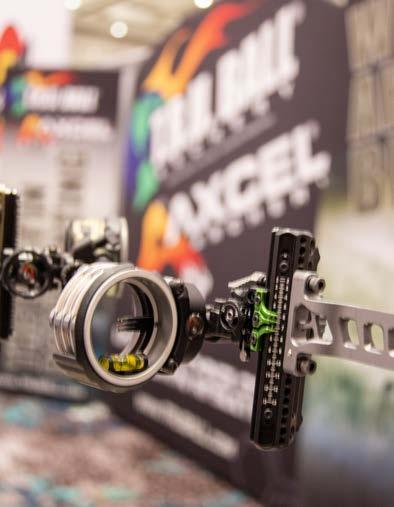
BY ARCHERY BUSINESS STAFF
NSSF, The Firearm Industry Trade Association, recently announced that Hunting Retailer magazine is joining Archery Business magazine to co-sponsor the newly renamed Archery Business & Hunting Retailer Pavilion for the 2026 SHOT Show.
The Archery Business & Hunting Retailer Pavilion is a collaboration between the NSSF and Grand View Outdoors, a leading provider of outdoor content. The Grand View Outdoors family of brands include trade publications such as Archery Business and Hunting Retailer magazines, as well as consumer titles such as Bowhunting World and Predator Xtreme.
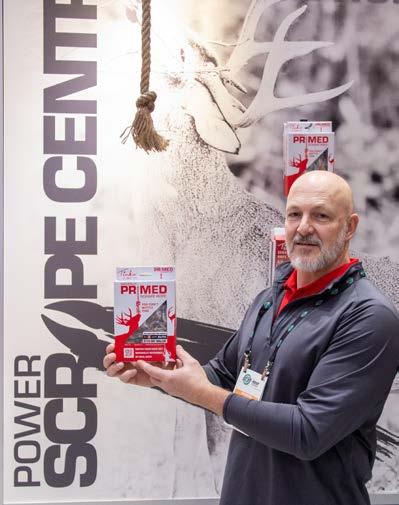

Many companies have already booked their space in the 2026 Pavilion, including the six detailed below. Check out what company representatives have to say as they look forward to showcasing their products at SHOT Show.
Todd Snader — Brand Manager, Pure Archery Group
“Over the past two years, having Pure Archery Group showcased in the SHOT Show’s Archery Pavilion has been a game-changer — putting our bows, crossbows and accessories directly in front of potential new and current dealers, media and industry innovators in one place. The energy, qualified foot-traffic, and collaborative atmo-
sphere have translated into meaningful partnerships and sales growth for us. If you’re serious about elevating your brand and strengthening the entire archery category, this is the place to be.”
Kara Hamby — Director of Trade Shows & Marketing Programs, Tactacam
“The SHOT Show’s Archery Business & Hunting Retailer Pavilion is an exciting venue for us to connect directly with customers and key industry partners. We’re looking forward to returning in 2026 to showcase the evolution of our best-selling Reveal trail cameras and the cutting-edge technology integrated into our Defend security camera lineup.”
Alan
Lotton
—
Executive Vice President, Sims Vibration Laboratory Inc.
“LimbSaver is thrilled to be returning to SHOT Show after taking a year off to re-tune and re-focus our trade show marketing strategies. SHOT Show is the premier event for the shooting sports and outdoor industry, providing unparalleled access to industry leaders and a crucial platform for showcasing our latest innovations. For 2026, LimbSaver is looking forward to our new exhibit location in the Archery Business & Hunting Retailer Pavilion, located in the Caesars Forum. With the continued success and year-over-year growth, the Archery Business & Hunting Retailer Pavilion is a natural fit for LimbSaver, allowing us an opportunity to promote our entire line of products, including archery, crossbow, shooting and gun accessories. Exhibiting at the 2026 SHOT Show is an investment in our future, as it enables us to build relationships and connect with our target audience, gather valuable feedback, and stay ahead of the curve. With proper focus and preparation, we know that SHOT Show will be an incredibly effective way to grow our business and strengthen our market position. We are honored to be welcomed into the Archery Business & Hunting Retailer Pavilion family and its supporting manufacturing partners.”
Teri Quinn — Director of Marketing, Arcus Hunting
“The Archery Business & Hunting Retailer Pavilion at SHOT Show is an invaluable opportunity for us to connect with key retailers, buyers and industry professionals. It’s not just about showcasing products — it’s about meeting the right people, having meaningful conversations, and strengthening our presence in the market. The energy, engagement and exposure we get here made the decision to come back next year an easy one!”
Chris Lorenzo — Vice President & Brand General Manager, Muck Boots and Rocky Brands
“As SHOT Show continues to grow in the firearms and ammo market, the show organizers have not lost sight of the opportunity for outdoor, hunting and shooting sports brands. The Archery Business & Hunting Retailer Pavilion is a dedicated space supporting the outdoorsman and has proven to be a fruitful location for Muck Boots, building both brand awareness and cultivating business through orders with current and new retail partners.”
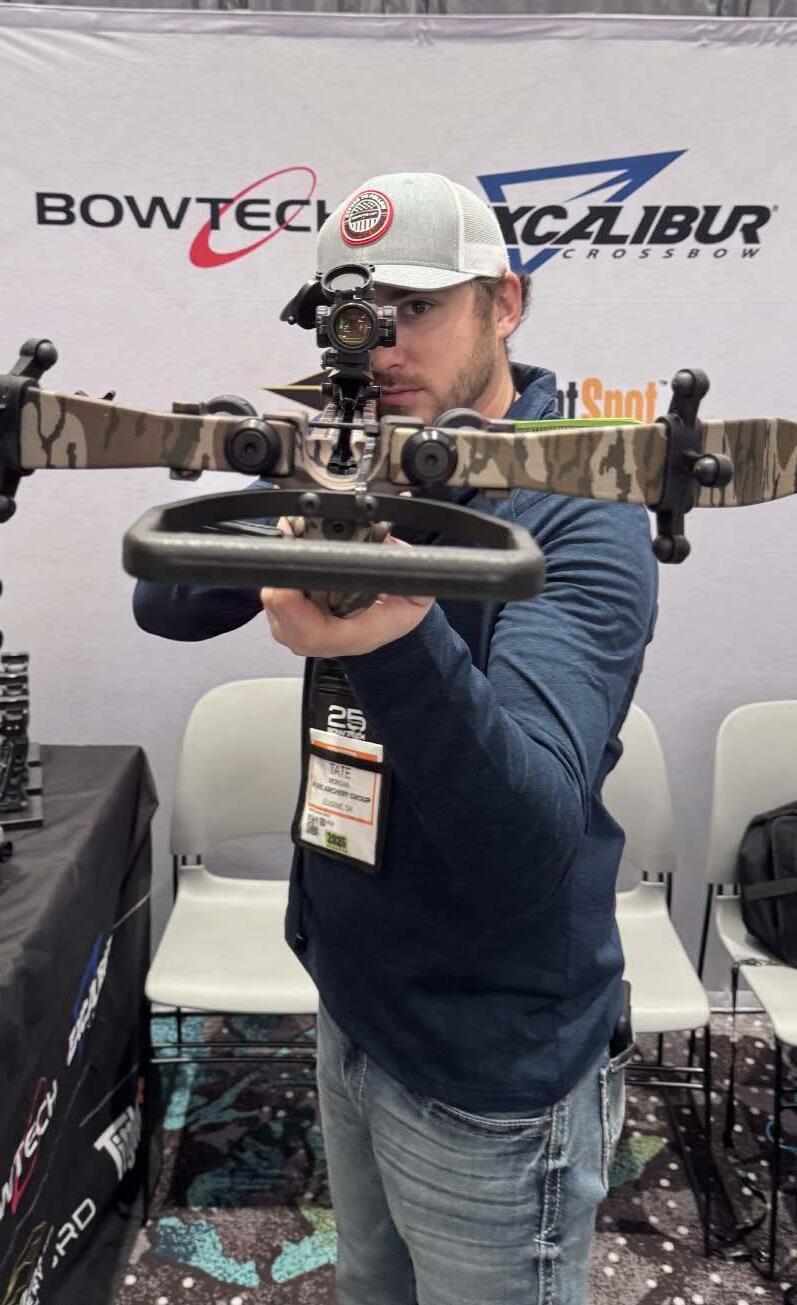
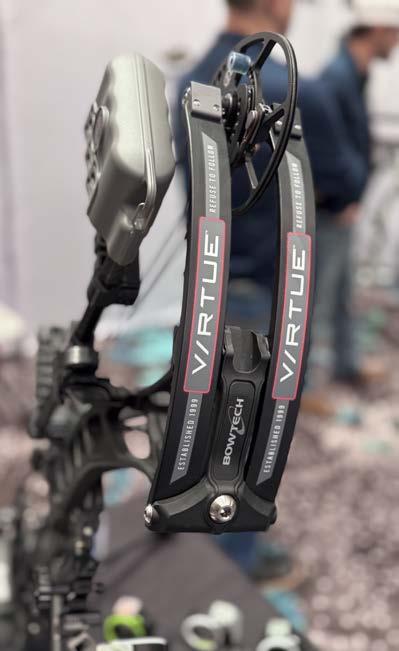
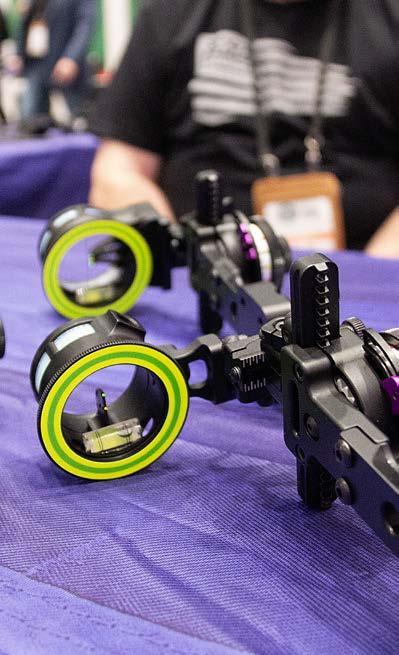
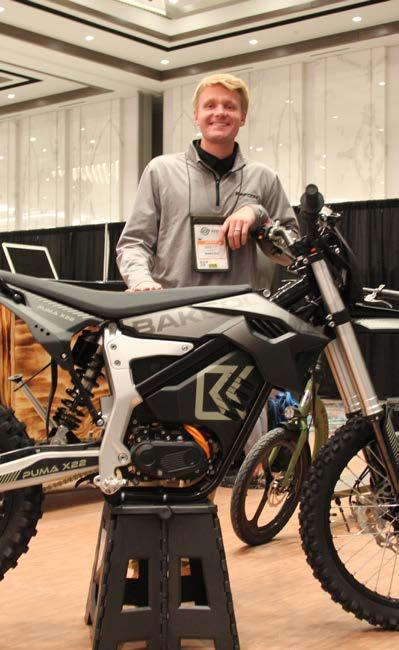
Mark Olis — Senior Brand Communications Manager, Moultrie Mobile
“Moultrie has exhibited at SHOT Show in the Pavilion for the past two years. Prior to that, we have been absent from the SHOT Show. The addition of the Pavilion catering more to hunting brands, made coming back to SHOT Show worth it. The past two years have been great shows with a lot of buzz. The SHOT Show was the only trade show we attended in 2025. We’ll definitely be back in 2026 at the Archery Business & Hunting Retailer Pavilion.”

Regular visitors to SHOT Show have seen that it continues to grow annually, setting new benchmarks for industry innovation, collaboration and engagement. From an expanded show floor and a record-high number of exhibitors, attendees experience tremendous networking opportunities and can see firsthand the products to consider stocking in their stores.
“The 2026 Archery Business & Hunting Retailer Pavilion will feature apparel, scents, treestands, blinds, packs, calls, food plot products, trail cameras, camping gear, binos, rangefinders, knives — basically anything that supports a bowhunter. If it belongs in a treestand or blind, it belongs in the Archery Business & Hunting Retailer
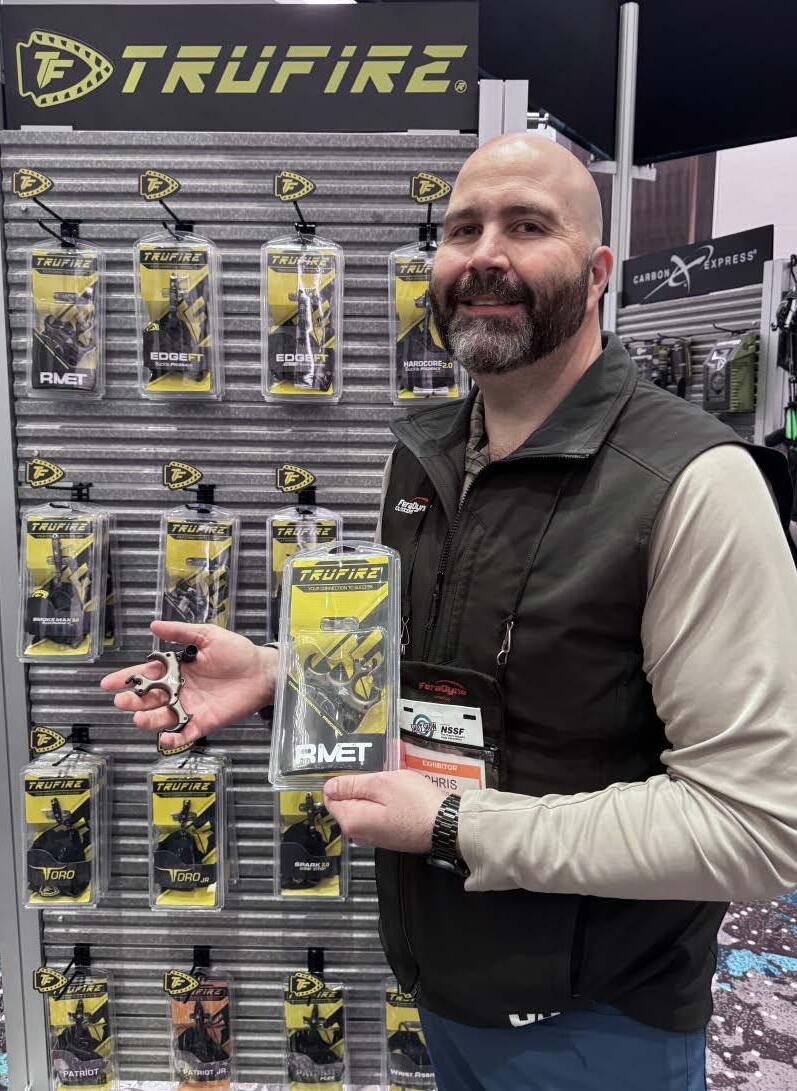
Pavilion,” said Chris Dolnack, NSSF Senior Vice President & Chief Customer Officer.
“By bringing these essential product categories into one pavilion, our 4,700 buyers that are interested in archery and bowhunting products can find them in one convenient location within the SHOT Show floor.”
“We partnered with the NSSF in 2024 to build a unique and targeted area during the SHOT Show, designated for companies with a focus on the bowhunting segment,” said Derrick Nawrocki, President/Publisher, Grand View Outdoors. “This naturally aligned with our Archery Business brand, and in the first two years we have seen year-over-year growth. Now, as we ramp up for the 2026 SHOT Show and aim to grow even more, we see another natural fit that helps broaden the appeal of this space and that is aligning with the Hunting Retailer brand, which will be on board as an official sponsor. Powered by two brands, this space will now be called the Archery Business & Hunting Retailer Pavilion. Coincidentally, 2025 also marks the 50th anniversary of the Archery Business brand (see sidebar), making this area even more attractive to exhibitors.”
“Momentum continues to build in year three of the Pavilion at SHOT Show, and we’ve seen the addition of significant exhibitors already including Martin Outdoors, Obsession Archery, Tactacam, HUKR, Bow Spider, and Sims Vibration Labs,” Nawrocki said. “This in addition to the return of FeraDyne, Summit Outdoors, Spot Hogg, Specialty Archery, T.R.U. Ball, Pure Archery Group (doubling its booth size), ARCUS, Muck Boots, NASP, Lancaster Archery Supply, Rock Ridge Outdoors, and many others that are coming back.
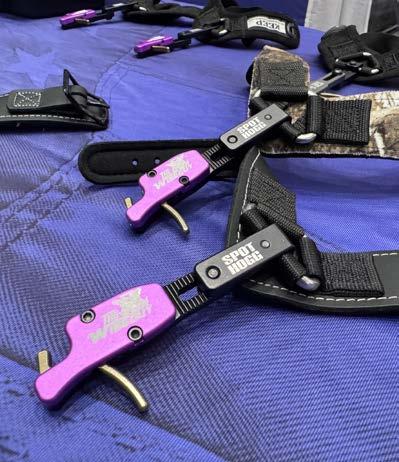
“It is worth mentioning that many of the traditional and more modern firearms shop retailers, who are looking to expand their existing inventory with categories in the hunting, archery and general outdoor markets, are now able to see that segment in one area, which is one of the goals of this space — helping to make the SHOT Show as efficient and convenient as possible for buyers.”
“We’re pleased with the growth of the Pavilion and the opportunity that it presents for exhibitors and nearly 5,000 buyers who have intent to purchase archery, bowhunting and hunting products,” Dolnack said. “Since the 2022 SHOT Show, our post show surveys revealed that 24 percent of the retail buyers had an interest in the archery and
hunting categories as traditional firearm retailers look to expand their offerings.”
If you’ve ever attended the SHOT Show, then you know it’s massive. The 2025 version contained nearly 14 miles of aisles, and as in previous years, it was spread between The Venetian Expo (multiple floors) and Caesars Forum.
The 2026 Archery Business & Hunting Retailer Pavilion will be located in Caesars Forum and it will feature leading manufacturers in the archery and hunting industries. It’s easy to find your way to Caesars Forum, and specifically the Pavilion; it’s clearly marked on the SHOT Show overview map, and once you’re on the Show floor, you can’t miss all the signage pointing you in the right direction.
Dates & Location: January 20–23, 2026 at Caesars Forum in the Academy Ballroom, Las Vegas, Nevada.
Exhibit Focus: A dedicated exhibit area featuring manufacturers and suppliers of archery and bowhunting products, along with related accessories.

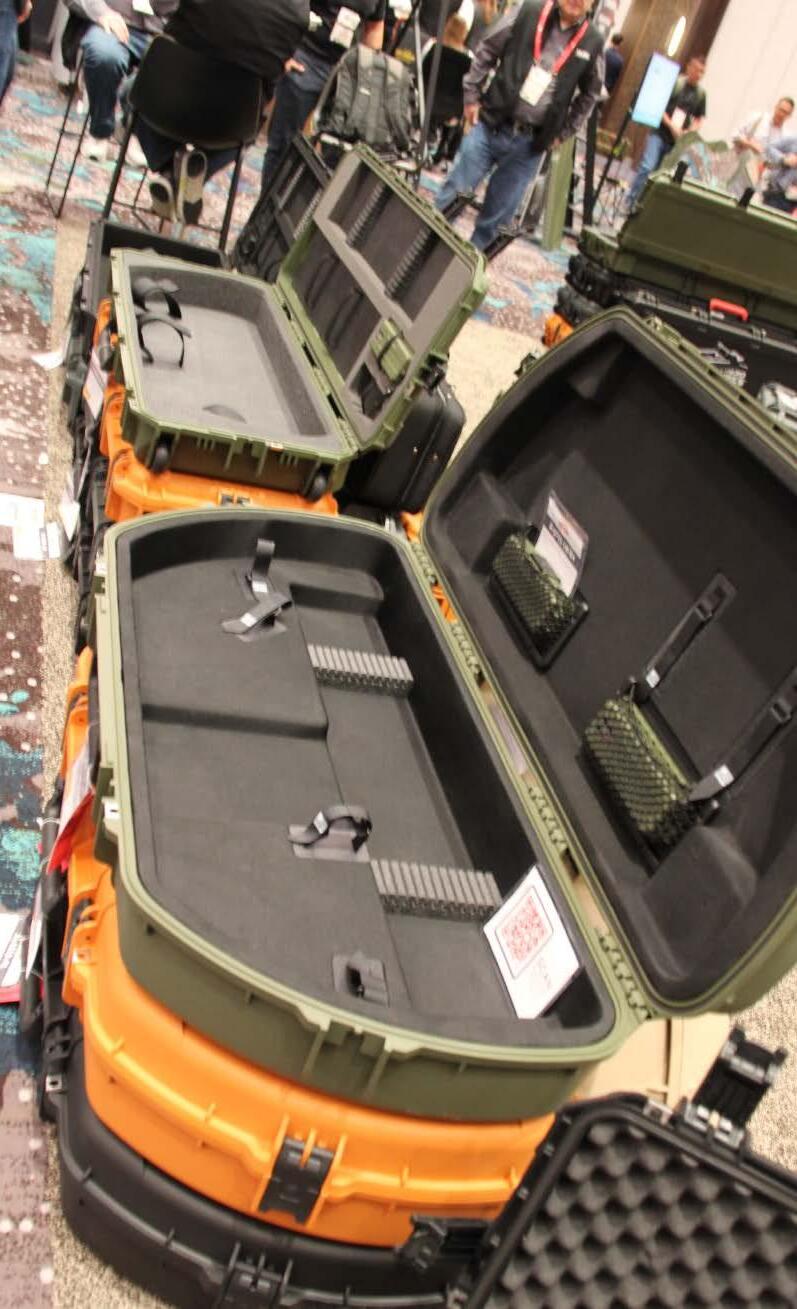
Media Coverage: Extensive coverage by the editorial teams of Archery Business and Hunting Retailer, as well as additional promotion in SHOT Daily and other Grand View Outdoors publications, including Shooting Sports Retailer
Pavilion Size: The Pavilion features 16,000 net square feet of exhibit space and enclosed archery lanes to demonstrate new products for prospective buyers in Caesars Forum.
Limited Space: Exhibit space is limited; first come, first served. Those who exhibit in 2026 will have first choice for space for 2027.
SHOT Show Facts: SHOT Show attracts attendees from around the world, including buyers, media and other industry professionals. The 2026 show will cover more than 820,000 net square feet of exhibit space, featuring over 2,700 companies showcasing the latest in firearms, ammunition, hunting and shooting accessories, archery, outdoor apparel and much more.
Launched in 1975, Archery Business magazine is celebrating its 50th anniversary in 2025. This B2B brand has been serving archery dealers and retailers with the tagline “The Voice of the Archery Industry” for an amazing five decades. The former owners of our two longtime biggest competitors, Arrow Trade magazine and Inside Archery, at one point worked on the Archery Business staff before launching out on their own. Note: Archery Business and Bowhunting World magazines are part of the Grand View Outdoors family of brands.
“50 years seems like a lifetime!” said Grand View Outdoors President/Publisher Derrick Nawrocki. “Well, because for many companies it is, and certainly for a niche brand serving the archery and bowhunting markets. It’s extremely rewarding to look back on how much the Archery Business brand has helped retailers and manufacturers alike grow, improve, spread the word, and stay dialed into the many product life cycles that drive our industry and lifestyles. It leaves me awestruck.
“Our team at Archery Business has been working in the archery/hunting space for over a combined 100 years, and we’ve focused over the long haul on hitting the mark and fulfilling our responsibility of being The Voice of the Archery Industry. We owe a big thank you to all of our partners for their continued support and trust, and our team will continue to lead the way into the future with this same mindset and focus.”
Now’s the time to begin planning for the 2026 SHOT Show. For info on exhibiting in the Archery Business & Hunting Retailer Pavilion, visit www.shotshow.org/archeryexhibit. Booth assignments will be confirmed upon receipt of a completed application and initial deposit. Space is limited. For additional information about the 2026 SHOT Show, please visit www.shotshow.org.
NVCarson Armory, Mound House This family-run business just five miles outside of Reno specializes in home-defense, collectibles, and hunting firearms. The store incorporates a shooting range in the same building with a large selection of rentals.
Handguns are steady year-round for this retailer. The top sales award goes to the Glock 43X. Sig Sauer P365 Micros and Springfield Hellcats also share high honors at this counter.
While used rifles and shotguns dominate the store’s long-gun category, it continues to expand its collectibles and used inventory. “We see a lot of older gun owners or their families turning over collections for consignment. It’s become an important part of our business to find new custodians for these meaningful firearms,” said owner Eileen Ferguson.
As for summer shooting, Ruger 10/22s are getting plenty of attention. At the rifle counter, MSRs are slowing to two a month, mostly Diamondbacks and Ruger 556s.
AKMountain View Sports, Anchorage Founded in 1961, this metro south-side Anchorage retailer is a specialty fly shop and hunting store. Spanning 4,000 square feet, it keeps an average of 200 firearms in stock, with one full-time and two part-time employees working the firearms counter.
Handgun sales continue to post strong numbers, with Sig P365s, Glock 43Xs, and Springfield Hellcats turning heads. Other high-demand SKUs include big-bore revolvers. Here, Ruger Alaskans in .460 and .454 and Smith 629s top the leader board.
Inventory on shotguns is a mix of defense guns and pumps sold to backcountry guides and boaters. Higher-end Browning Citoris in 20 and 28 gauge and Beretta 686s in 12 gauge are crossing the counter. “Our shotgun customers are a strange mix of guys that buy an 870 Express with a slug barrel for bear and a long barrel for grouse. Then they lay it on the bottom of a boat because they don’t want to tear up their nice over-and-under,” said gun
manager John Staser.
MSR sales are flat, selling only one a month. General turns skew to higher price points with Daniel Defense and Sig in the top spots. This retailer rotates high-end consignment MSRs sporadically.
Guns and Ammo, Inc., Rozet Located at the edge of the high plains in the northeast part of the state, this family-owned independent has been in business since 1974. The store features a three-position outdoor shooting range next to the shop.
While handgun sales are brisk in the summer, this retailer reports varmint guns are the focus of many of their warm-weather customers. “Bolt guns are just huge for us in the summer as prairie dog season peaks. It pushes sales of a lot of optics, ammo, and rifles,” said owner Kelly Townsend.
Remington 700s and Ruger Americans lead sales, primarily in .204 Ruger and .22-250.
Gun Shop, Williamsburg Located between Iowa City and Des Moines, this small-town rural farm retailer keeps over 500 guns in stock. This shop’s focus is trending to collections and used trades.
Handguns are the primary focus during summer for this retailer. “We have seen a steady decline in general sales this season. The slowing economy and unstable changes in farm-market tariffs are just killing us. Farmers do not spend money when questions abound in the market. That said, if the farming issues get resolved, we will have a great fall. At this point, we just don’t know,” said manager Cody Gabriel.
Only the handgun counter is steady at this store, with solid turns on Glock 43Xs, Sig P365s, and a mix of Smith M&P pistols.
MSRs, predominately Radicals and models from Daniel Defense, turn at about one every two weeks. Other than pistols, used .22s seem especially in demand for the summer. A few sales in the rifle category are leaning
to a mix of .22 and .30-30 Marlin and Henry lever actions. The highest demand remains centered on .45-70s, when this retailer can stock them.
As 2025 progresses, new handguns and used collector guns on Gun Broker are making the best turns for this store.
Zimmerman Located just one mile from Lake Freemont in the center of Zimmerman, this small-town recreation destination shop keeps an even mix of 400 hunting and home-defense guns in stock. Summer turns the highest number of .22 rifles at this retailer. “We really enjoy selling .22s this time of year because it’s always tied to family fun shooting,” said owner Rick Snook. Turns include Ruger 10/22s and Americans, along with a few Browning SA-22 semi-autos. On the bolt-action side, Ruger Americans and Tikkas are just starting to move in .308. With an average of two a month, MSR sales are flat. However, close-to-cost Radicals and
Andersons are selling.
Shotguns are attracting some attention. Winchester Super X4s, Browning Maxus IIs, and Benelli Novas lead the category. Handguns are holding steady. The Glock 43X holds the high spot, followed closely by a mix of Springfield Echelons and Smith Shield EZs. This retailer reports good inventories and stable pricing on rare hunting-caliber ammo.
Located in a converted barn in rural central Wisconsin, this small-town retailer keeps its firearm inventory below 150 units. It’s flanked by limited archery and fishing supplies. Top handgun sales accrue to the Smith & Wesson Shield EZ, Kel-Tec PF9, and SCCY. “Our customers are super price sensitive and are looking to trade for higher-end guns. We are really seeing a slowdown this summer,” said owner Mike Denton. Bolt guns, including Savage Model 93s in .17 HMR and Axis rifles in .223, are getting more than one look.
Atlantic Guns, Inc.,
Rockville Located just north of metro Washington, D.C., this strip-mall location stocks what’s advertised as the “largest new and used gun selection in Maryland.” On the rifle side, .22s are a summer staple for this retailer. Ruger 10/22 takedowns lead the pack, followed closely by M&P 15-22s. The CZ 455 in .17 HMR is in high demand for local Maryland shooters as well.
Long rifles are slowly securing more attention. “Our precision target guns are getting popular and adding to our late-summer sales. Tariffs are on our radar, but haven’t emerged as a factor—yet,” said manager Mark Schneider.
In the bolt-action category, the PMR Pro in 6BR from Masterpiece Arms leads the category. Additional high-selling bolt guns include Ruger Americans and Savages chambered for the 350 Legend.
MEBill’s Gun Shop, Orrington
This medium-size independent, located 45 minutes north of Bangor, carries
more than 1,000 new and used firearms. They feature traditional hunting and home-defense guns along with an emphasis on accessories. This retailer believes entertaining their customers is a high priority. They have a room with 25 vintage pinball machines to keep the place lively.
Glock 43Xs and Sig 365s lead the pack at this store. A healthy number of Smith Shield 2.0s are making turns. Notably, this location features a steady demand for older wheel guns and 1911s in any format. With varmint season closed, bolt guns have cooled. However, Mossberg Patriots and a few Ruger Americans in .223 and .243 are still walking out the door.
Ruger 10/22s and Americans and Henrys are dominating the summer .22 sales. “While most rifles fall off for the summer, .22s are always dependable turns for family shooting and gardeners keeping rodents out of their vegetables,” said manager Payton James. Sales of MSRs remain slow, with only one unit selling every week. This store has seen several used MSRs trading. Meanwhile, prices
KYGilbert’s Gun Shop, Frankfort In business since 1978, this established firearms store stocks an average of 1,500 units and serves a wide customer base spanning from Cincinnati, Ohio, to Lexington and Louisville, Kentucky. While this store moves a notable number of rifles and shotguns, handguns have continued to drive traffic even in the summer. “I understand that some parts of the country are not as busy as they would like to be, but our turns are up. We are looking at a solid high-volume year for 2025,” said owner Jason Gilbert.
Handgun leaders include the Springfield Hellcat Pro series and the entire Sig P365 line. Glock 43Xs are also riding high in the mix. Gilbert said his store is experiencing a new trend with first-time gun buyers. “Our entry-level shooter shows up with a staggering amount of research. They often purchase a higher-end platform. They want ‘new.’ The barrel must be threaded and the upper ready for the appropriate optics. This new customer lends themselves to unique pistols in
limited production. They are willing to spend far above the entry-level price point, and they often show up with the actual factory SKU number. It’s super impressive,” he said.
Guns and Leather, Greenbrier Located on Highway 41 just north of Nashville, this retailer and range keeps close to 1,000 firearms in stock with an average of four employees. Handguns rule at this store. Hefty numbers of Glock 43Xs and Sig P365s dominate the top slots on the leader board. Hellcats follow while Glock 48s hold strong on the next rung.
“We really sell a lot of handguns. However, sales in the MSR category are flat as a pancake this year. To get them to turn we must have special pricing,” said counter salesman Joe Rice. MSRs are moving at close to one every 10 days. Smith Sports and Ruger 556s lead the way. On the other hand, anything in .22 is moving fast. Ruger 10/22s and S&W M&P 22-15s are selling particularly well.
Benelli Super Black Eagle and Franchi
for entry-level MSRs are selling for under $500.
This classic New England hunting, fishing, and hardware shop rests just a few miles from the Canadian border. They supply everything from camping supplies to propane. On average, this retailer stocks fewer than 50 firearms. Demand is high for all Smith revolvers at this retailer. “We always have a high demand for Smith wheel guns, and we like to trade for them. After Covid, we eased our new gun inventories. We are adjusting and moving our inventory slowly to used,” said owner Brian Pariseau. This retailer also reports orders for Glock 43Xs and Sigs P365s.
Ruger 10/22s are hitting the high sales mark for new rifles, followed by a few used Marlins and Henry lever actions. Ammo stocks are the best they have been in five years. The selection includes rarer rifle calibers.
Affinity shotguns are slowly gaining speed. Stoeger M3000s dominate and hold the lead as the highest seller.
Philadelphia Gun & Pawn, Philadelphia This east-central Mississippi shop specializes in handguns. It keeps over 500 firearms in stock for its rural clientele. The store also sells archery, safes, ATVs, and even designer handbags. Glock 43Xs and 19s split the ruling position at this store, followed by a high number of Springfield Hellcats and Shield 2.0s.
“Our ammo inventory is strong, and the pricing is really coming down. We don’t see it climbing this season. Our floor inventories are over six months,” said sales manager John Eek. Bolt-action hunting rifles are active. Browning X Bolts and a few BARs as well as a few Remington 700s are crossing the counter. The most popular calibers are .308, .30-06, and .270. MSRs are down since late spring to two a week. Sport IIIs and Andersons capture most turns.
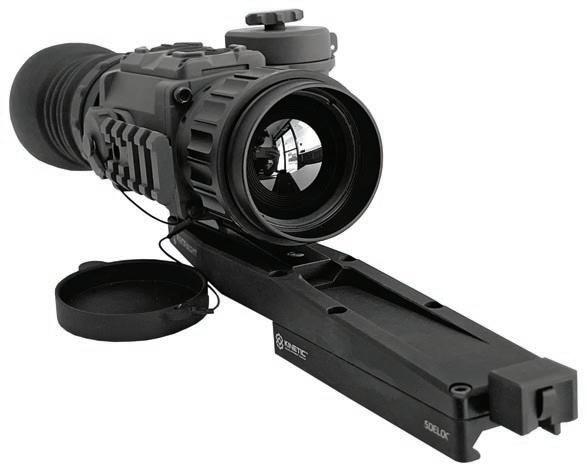
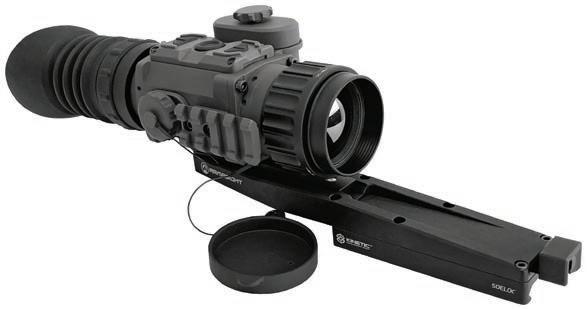
The Commander 640 thermal weapon sight is powered by Armasight’s revolutionary Iron Wolf platform and the proprietary ArmaCORE 640x480 12-micron thermal sensor, delivering unparalleled clarity and smooth 60Hz performance. Equipped with a 35mm germanium lens, this advanced optic provides sharp, high-contrast imagery and boasts a detection range of up to 1,300 meters, even in the most challenging conditions, including total darkness, fog, smoke, or adverse weather.
Designed for rugged dependability, the Commander 640 features an IP67 environmental rating and is constructed with a durable aluminum alloy housing, ensuring it can withstand the toughest field conditions. From the large-caliber .50 BMG to smaller rimfire or airgun platforms, this thermal sight is built to perform, offering unmatched recoil resistance across a wide range of applications.
The Commander 640 brings the full power and precision of Armasight’s Contractor series in a compact, lightweight design. Ideal for medium to short-range engagements, it is perfectly suited for users demanding high-caliber stopping power paired with the latest thermal imaging advancements. Other features include video and image capture, USB-C connectivity, quick-detach mount, battery starts indicator, and multiple color palettes and image enhancements. SRP: $4,299. armasight.com
Built on the same platform as the ever-popular Chest Rig, the Nomad variant features new straps specifically designed to attach to a backpack. It offers versatile retention adjustments, including a trigger-guard retention device (not applicable to revolvers). You can also adjust the screws that secure the pocket to the leather, allowing you to tailor the retention to your precise needs. The leather backer provides a sturdy yet comfortable base to support any firearm. It features a soft, breathable perforated suede backer and is available in two colors, ensuring durability and comfort.
Since flexibility is crucial in any holster, especially in rugged environments, the Chest Rig Nomad features three hook and loop straps for proper support and adjustable comfort, ensuring a seamless attachment to your backpack’s straps. SRP: $114.95 crossbreedholsters.com
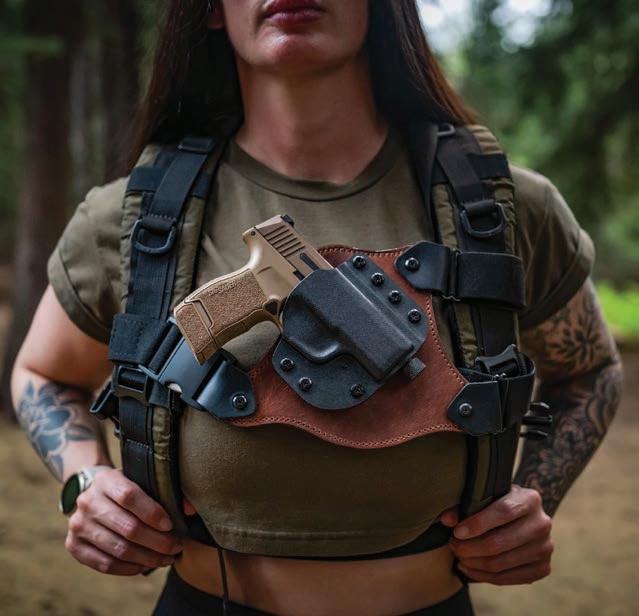
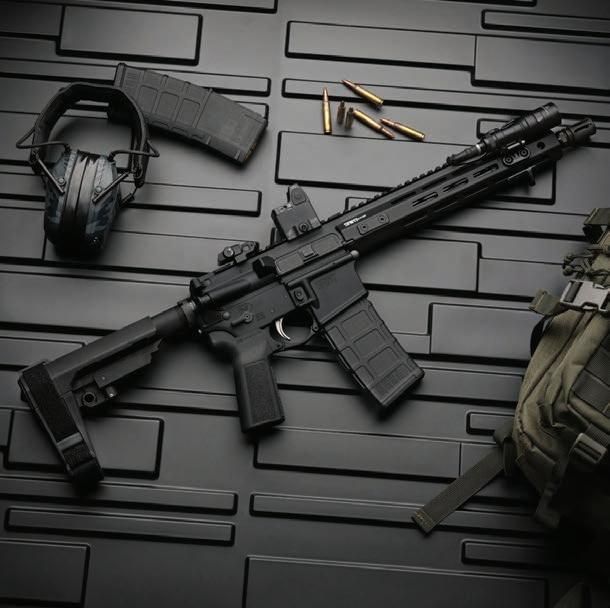
The Saint Victor pistol in 5.56mm is the newest addition to the Victor line of AR-pattern firearms. It features an 11.5-inch CMV barrel topped off with a birdcage-style flash suppressor, a full-length top Picatinny rail, and a nickel boron-coated flat trigger. Underneath the free-float handguard is a carbine-length direct gas impingement system that ensures rock-solid reliability. The handguard features M-LOK slots for accessories, and an M-Lok handstop is included on the lower forward section of the handguard. A handy QD mount is located on the receiver end plate.
Outfitted with an SB Tactical SBA3 brace on the three-position receiver extension for enhanced stability, the pistol features a B5 Systems polymer trigger guard and B5 Systems Type 23 P-Grip as well as a 45-degree short-throw ambidextrous safety. A set of flip-up sights and one 30-round Magpul PMAG Gen M3 magazine complete the package. SRP: $1,150. springfield-armory.com
The TC73 lever-action rifle, chambered in 9mm, is the first firearm manufactured completely in the USA by the company using only USA-made parts. The rifle boasts high-quality fit and finish, true case coloring, and smooth lines; it also features an improved carrier block design, lightened trigger pull, hardened screws, and fully machined internal parts. A rubber butt pad and white bead front sight with a semi-buckhorn rear sight complete the finishing touches. And for the modern sportsman there is even a 5⁄ 8x24 threaded barrel. SRP: $1,999. taylorsfirearms.com

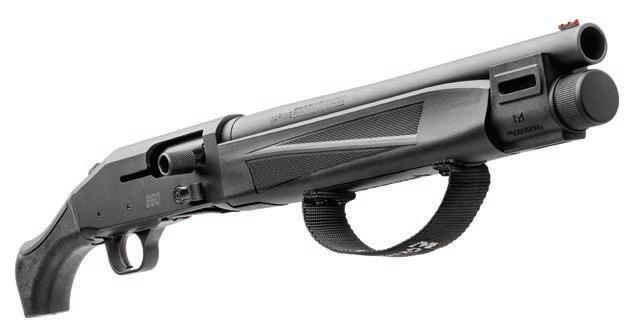
The 990 Aftershock is a 12-gauge, 3-inch semi-auto version of the 590 Shockwave pump-action shotgun. The full-featured and easy-to-maneuver platform is available with 14.75-inch or 18.5-inch-barrel options as well as a 14.75inch version equipped with a Crimson Trace Lasersaddle.
At the heart of the 990 Aftershock is a durable gas-operating system that is fully contained within the forend. Internal parts (gas piston, magazine tube, hammer, and sear) feature a nickel-boron coating and a special finish for enhanced corrosion resistance and smooth, reliable cycling. To further improve performance, the 990 has an enlarged and beveled loading port designed for ease of loading; elongated, pinch-free elevator; and anodized, bright orange follower. The oversized, ergonomic top-mounted safety can easily be operated by a left- or right-handed shooter and features a highly visible red indicator. Enhanced functionality continues with the knurled charging handle; oversized, paddle-style bolt release; strapped forend for a firm hold and to keep hands clear of the muzzle; and a M-LOK accessory adaptor with mounting slots on the sides and bottom attached to the extended five-shot magazine.
The black synthetic grip is uniquely shaped for an ergonomic, secure grip and features a rubberized palm pad to minimize felt recoil. A quick-detachment cup is incorporated on the rear of the grip. The matching black synthetic forend is streamlined, has an attached embossed strap, and wears Mossberg’s signature texturing—all of which combine for a more positive hold. Completing the 990 is the choice of 14.75- or 18.5-inch cylinder bore barrels equipped with a LPA front fiber optic sight; 5+1 total capacity (with 2.75-inch shotshells); and matte blue metal finish. The 14.75-inch version is also available with a Crimson Trace Lasersaddle that attaches easily to the receiver. The laser is adjustable for windage and elevation, and the fixture provides multiple touchpad activation points. SRP: $1,120-$1,302. mossberg.com
A new take on an old favorite, the next-generation Undertaker Pro Choke Tubes feature modern designs that adapt to the industry’s ever-changing turkey ammo. Their extended chokes deliver tight patterns thanks to unique internal groove technology that separates pellets from the wad, preventing the wad from spinning, and concentrating more pellets on the intended target. All five models in the new lineup are rated for use with various ammo types, including steel, lead, bismuth, and TSS.
Available options include Remington, Winchester/Browning Invector, Winchester/Browning Invector Plus, Beretta/Benelli Mobil, and Beretta/ Benelli/Retay Crio Plus. SRP: $37.99. hsstrut.com

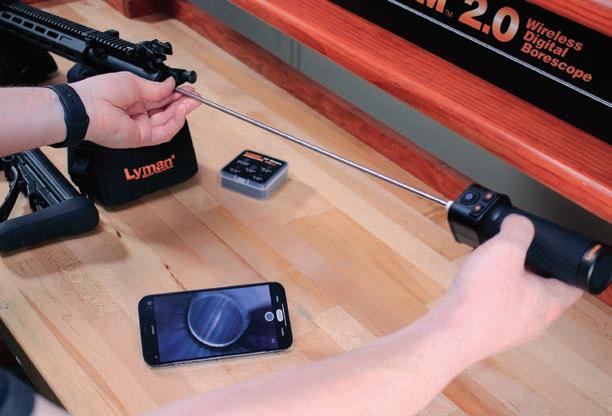
The wireless Borecam 2.0 produces its own WiFi signal that sends clean and detailed images directly to a smartphone, allowing a shooter to carefully inspect bores for wear, throat erosion, tool marks, and other rifling damage as well as copper or lead fouling. The Borecam 2.0 will fit .22 caliber and larger barrels and is now equipped with a longer 26-inch rod. In addition to taking photos, the Borecam 2.0 now takes sharp, clear videos. An easy-to-use app (available for iOS and Android phones and tablets) makes storing and retrieving photos and video simple. The Borecam kit includes a rod with mounted camera, five interchangeable 90-degree mirrors for various calibers, and a USB cord for charging. SRP: $199.99. lymanproducts.com
The Taurus 58 is a a modern, aluminum-frame .380 ACP pistol that blends reliability, shootability, and carry-friendly design with a 15-round capacity and refined ergonomics. The aluminum-frame construction reduces weight for easier concealed carry, and the DA/SA trigger system offers versatility for a range of carry and shooting styles, delivering a smooth, deliberate first pull in double action and a crisp, clean break in single action. The ambidextrous manual safety and decocker have been designed for left- and right-handed shooters alike, allowing added control and convenience without compromising the slim profile of the pistol. In addition, the Taurus 58 comes with an integrated front sight and drift-adjustable rear sight and is available in black and stainless finishes. SRP: $604.99 taurususa.com
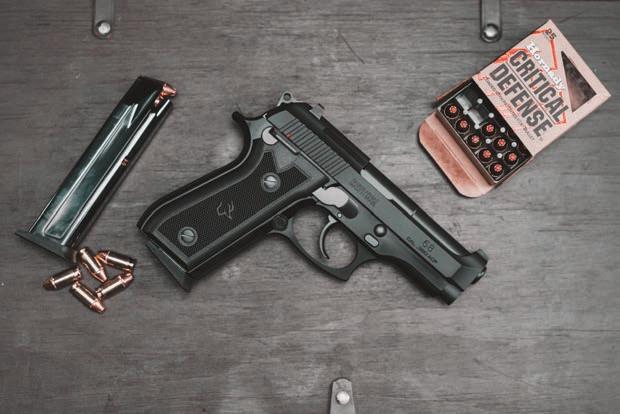
Following the principles of servant leadership will help you build a better business.
When walking into any business establishment, no matter what its purpose is, you can sense almost instantly whether they care for the folks coming to visit. Just look around. Is the store well organized and brightly lit? Are you greeted promptly and with a smile that says, “welcome?” Is the staff keen to help you have an enjoyable experience?
The reality of our chosen path is that we are in the business not to sell as much as we are to serve. The goal is to serve the needs, wants, and expectations of the guests, team members, and the community in which we live. This is rightly known as servant leadership. Servant leadership is not just a philosophy; it’s a spirit, along with a set of practices, which enriches the lives of individuals, builds better organizations, and ultimately creates a more just and caring community. If done right, it will strengthen your team at work, both in productivity and fellowship.
To be clear, things like the Saturday morning doughnut run, bringing in pizza for lunch, and even team member offsite gatherings are good for morale, but in themselves they can’t create the unique bond among your team members that distinguishes first-class operations. That’s because pizza days can’t empower your team. It tales something more.
The best investment you can ever make is to build an attitude of servant leadership in which your business and team members join together
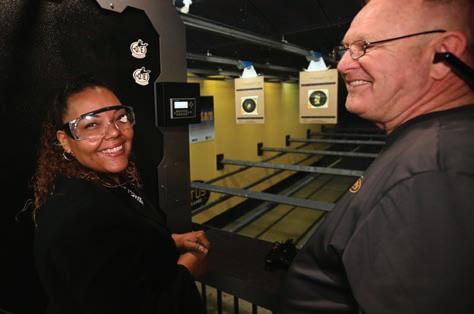
Adopting the principles of servant leadership allows retailers and range owners to build strong teams, the members of which believe in providing first-rate customer service.
to not only provide hands-on service to create a better store experience, but to also extend that spirit into the community, state, and nation. When these factors become a normal part of the business, allowing that spirit of servant leadership to grow, you will be amazed at the results. I am here to tell you it carries straight to the bottom line.
Here are three ways you can start on the path of servant leadership.
1)You need to be an example of what a “servant leader” should be. Before you can expect your team members to fully embrace servant leadership, you must demonstrate the concept within your own dayto-day management. The key to motivating team members is the focus a servant leader places on the welfare and growth of everyone in the organization. The motivating factor is that the servant leader pursues every opportunity to positively impact the behaviors of team members by making a difference in their lives. This is a natural calling of servant leadership, which is never for personal gain, but a sacrifice for the sake of others and their personal and professional growth.
Some ways to set the example of a servant leader include inviting differing opinions, establishing a culture of trust, developing other leaders, helping team members with life issues, building confidence through encouragement, thinking first about the team, and acting with humility.
2) Build a team of servant leaders.
By creating a culture of service, you will begin building a strong team of servant leaders. Nothing screams camaraderie like uniting a diverse group of people to work toward a common goal. Encourage each team member to embrace a culture of service throughout their workday.
Servant leaders know that by helping the people who work for (and with) them, they will help their team members learn vital skills that will both improve their performance and improve them as people.
3) Seek opportunities to serve. Once you have established yourself as a servant leader and have encouraged your team to adopt
the philosophy of the movement, it’s time to get out of the store and serve your community. With so many opportunities to serve in every community, establishing an annual day of service can easily become a fun company-bonding tradition. The opportunities are endless and the needs are great. Another benefit of a day of service is that the community gets to see another, and very positive, aspect of the shooting sports.
Servant leadership is not without its costs. Most projects will have some associated expenses, such as having the team members out of the store, and you also have to factor in the cost (in time and effort) of the planning and preparation that must occur beforehand. But the passion this creates and the bond it instills in a company makes it one of the best returns on your investment decisions you could possibly make. Make this your first and highest strategic endeavor, even though the company is small but growing. Do these projects without an expectation of monetary return; however, the benefits you will receive are deep and long-lasting. The Simple Truth is that a culture of servant leadership lasts forever. It bonds participants, builds character, and instills a sense of courage and responsibility in the spirit of the store.
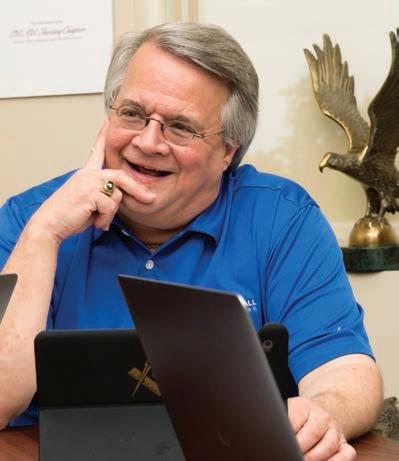
Author bio: Miles Hall was founder and president of a multi-million-dollar firearms retail store and gun range in Oklahoma for 36 years. He is now a senior advisor helping FFLs around the country run more efficient, profitable businesses. (HallnHall.com)
SHOT Daily serves as the exclusive printed show title for up-to-the-minute accounts of the latest news, product introductions, seminars and other announcements. 8,000 copies are distributed daily to exhibitors and attendees, totaling 32,000 copies over four days.
Daily live section covering booth presentations, new product introductions and more.
Do you have news-worthy content you would like our editorial team to consider? Send our team an email to shotbusiness@colepublishing.com




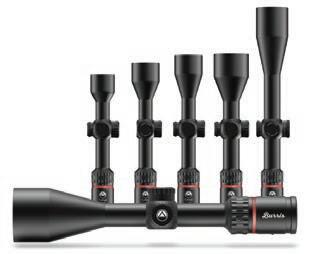
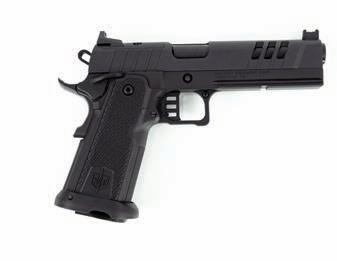












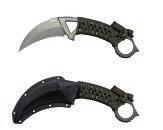


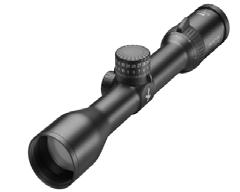




New for 2025, QUEST thermal binoculars offer a comfortable, intuitive viewing experience. A 12 μm ≤15mK 640×512 thermal sensor and Reality+ image processing deliver vivid detail to dual 1920x1200 displays, each with independent adjustments. The built-in 1,000-yard laser rangefinder operates in single or continuous mode, displaying target distances instantly. With a hot-swappable IRB-2 (18650) battery and a backup internal battery, QUEST runs all night long. Available in H50R (50 mm lens) and H35R (35 mm lens), each model includes a fully adjustable harness for maximum comfort.
